25 of the Best Eco Resorts in India, for the Conscious Traveller (2021)
There are some incredible Eco Resorts in India – if you know where to look! Here are some of our favourite eco resorts and lodges that celebrate India’s biodiversity and support local communities too.
This post contains compensated affiliate links. Click here for our full disclosure .

My Favourite Eco Resorts in India
Often overshadowed by her architecture and colourful culture, it’s arguably India’s nature that is the real star of the show. And although it may not be as well known as destinations like, say, Costa Rica, for its ecotourism, India is leading the way in Asia with some inspiring eco resorts and lodges that will leave you not wanting to… well, leave.
A little known fact: India is actually home to 7% of the world’s biodiversity. And where better to immerse yourself in that (and enjoy a slower pace of living for a few days) than at one of the country’s growing number of sustainable resorts?
From simple eco lodges to high end sustainable luxury resorts that will cater to your every need, we’ve put together this guide to some of our favourite eco resorts and lodges around India. These are not simply places that involve the outdoors, but places that have actively put measures in place to minimise their environmental impact, use renewable energy sources, and are directly benefiting local communities too.
As this list continues to grow, thanks to huge interest in responsible tourism in India, we will keep adding – and please feel free to let us know any of your favourite eco resorts or lodges at the end of this post!
READ MORE: Responsible Travel in India – What you Need to Know
ⓘ TIP: Planning a trip to India? Join our free India Travel Facebook group here !
Eco Resorts in Rajasthan
The desert state of Rajasthan is one of India’s most-visited areas and home to some of the country’s top tourism attractions. It’s also home to some beautiful eco lodges and resorts, too!
Khem Villas (Ranthambore)
Khem Villas is a luxury jungle camp at Ranthambore, Rajasthan’s best known tiger reserve. The camp is designed to provide peace and tranquility within its luxurious and very personal atmosphere. Accommodation is high end, and you won’t want for anything at this beautiful glamping cum eco resort.
The focus at Khem Villas is not just tigers but to go beyond the tigers by engaging visitors and informing them about the various challenges that threaten the survival of Ranthambhore and its striped cats. The resort is involved with two NGOs: Ranthambhore Foundation and Tiger Watch which help in providing health care, education, afforestation, dairy development, employment generation, monitoring of Tigers and more importantly sustainable livelihoods.
For more info & rates at Khem Villas, Click here.
Although the tiger concentration is lower at Ranthambore than in Madhya Pradesh, many visitors flock here for its location in Rajasthan as well as the temple ruins within the park which make for a unique backdrop to see the tigers.
READ: Rajasthan Travel Guide – Rajasthan without the Crowds
Hara House (Bikaner)
If you want to experience the best of Rajasthan’s princely grandeur and desert culture, but with fewer of the crowds that make it to Jaipur and Jaisalmer, Bikaner may just be the place for you.
India’s first “zero waste guesthouse”, Hara House is a simple, budget friendly guesthouse that invests 20% of its profits in building community in Bikaner through social development initiatives and its community centre, as well as putting focus on eliminating plastic waste from tourism that crosses its doorstep. Hara House’s goal is to achieve 90% diversion from landfill and refuses to buy and products wrapped in plastic, and helps their guests to do the same! The guesthouse is also working towards 100% solar power by 2021.
Hara House is located just steps from Bikaner’s city centre and Junagarh Fort, and offers simple basic doubles and dorm style accommodation.
For more info & rates at Hara House, click here .
Chandelao Garh (near Jodhpur)
Around 40km outside of Jodhpur, Chandelao is a beautiful grand house, transformed into a luxurious homestay – and comes highly recommended! If you stay here, we highly recommend taking a trip around the village with Chandelao’s local guides for an insight into desert life.
Chandelao Garh is the home of former generals of Marwar (as the region of Jodphur, Rajasthan, was once known). The main part of the house was built in 1744 and has been well looked after to retain its charm and beauty. Chandelao is the ancestral home of the rulers of Chandelao village and the surrounding area and is still run by the family today.
Alongside the homestay, Chandelao is home to Sunder Rang arts and crafts centre. The centre provides employment opportunities to women from Chandelao village and beyond.
Women apply to come and work at the centre to make handicrafts (which are sold to visitors of Chandelao and beyond). 60% of the profit of each product sold goes directly to the woman who made the item, the remaining 40% towards running costs for the centre. Sunder Rang centre provides optional schooling programs for the ladies that work there, providing the opportunity to learn languages or study at the computer centre next door.
For more info & rates at Chandelao Garh, click here .
Eco Resorts in Madhya Pradesh
Jungle Book central, Madhya Pradesh is the place to come if you want to try your luck searching for India’s regal big cats on a Tiger Safari, and is home to some of India’s best National Parks and Tiger Reserves. Make sure you book ahead, especially between November – February as accommodation and jeep safaris book up fast on a fist come first served basis (all tiger reserves have a maximum quota of visitors per day).
Pench Tree Lodge (Pench National Park)
Recommended by Abbie of Speck on the Globe
Spend your evenings after a safari sleeping in a tree house in the Jungle! Pench Tree Lodge not only is comfortable, but they are conscious about the environment. There are 6 cottages and 6 treehouses, making the property feel peaceful and exclusive without being overcrowded. The treehouses are a perfect unique accommodation experience. They are constructed around existing trees, with the utmost care not to disturb the wildlife.
The buildings at this boutique property are made from reclaimed or locally sourced materials. The Lodge is located in a more underdeveloped area adjacent to the park, helping to spread tourism economy while still being mindful of the original residents of the region.
The commitment to the environment is clear from check in at the lodge. There are reusable water bottles provided with clean drinking water stations placed throughout the property. Small details like organic, refillable toiletries in the bathrooms are noticeable during a stay here. The property has an on site garden and the menu is reflective of seasonal ingredients that are grown just steps from the kitchen.
Safari tours through Pench Tree Lodge have conservation efforts as their main goal. The jeeps are small and a naturalist accompanies each vehicle to the park so that you can learn more about the park and its inhabitants. Along with the guide, the naturalists makes sure that the cars are following the rules of the park and are there to ensure safety for the animals as well as the guests. Their knowledge and commitment to conservation is what makes them stand out above the rest.
Click here for more rates & info for Pench Tree Lodge!
Kanha Earth Lodge (Kanha National Park)
Kanha National Park and Tiger Reserve is thought to be the original inspiration for Rudyard Kipling’s book, the Jungle Book. If you’re intent on living out your own Mowgli fantasy, Kanha would seem like the natural place to start.
So perhaps it’s no surprise that Kanha National Park gets busy and books up quickly. If you’re planning on visiting Kanha, we recommend booking your accommodation and safaris several months in advance. Many of the area’s lodges can help with booking your safaris directly.
Adjoining the buffer zone of Kanha Tiger Reserve, Kanha Earth Lodge offers a true wilderness experience – close to the park, but away from many of the Kanha resorts that surround it.
The lodge has 12 luxury bungalows which have been inspired by Gond tribal architecture. They offer environmentally sensitive, low-impact accommodation through their design and use of local stone and waste wood, while the absence of neighbouring lodges or highways creates an ideal setting for nature walks, birding and cycling trips through the surrounding forest, so you can see plenty of wildlife from the Lodge itself!
For info & rates at Kanha Earth Lodge, click here .
Eco Resorts in Maharashtra
Often overlooked by visitors (apart from Mumbai, perhaps), Maharashtra has more than its fair share of beauty, and some game-changing sustainable lodges and hotels, too.
Abode Bombay (Mumbai)
More one for urban jungle lovers, Abode Bombay is a boutique hotel that has done everything in its power to keep its environmental impact low and its social impact positive. The hotel has introduced a number of sustainable initiatives, from eliminating plastic to recycling soap ends in partnership with the Kalwa-based Sundara Fund .
The hotel employs local guides, partners with a firm of all-women taxi drivers, and works with the national association of the blind to work with their therapists for the hotel’s spa offerings.
Abode is a welcome retreat in the beautiful – but sometimes crazy – city of Mumbai.
For info & rates at Abode Bombay, click here .
Maachli (Sindhudurg)
Award-winning Maachli is a rustic retreat-cum-farmstay in the depths of Maharashtra, on the beautiful (and as yet little known) Konkan coastline. Less than 50km north of Goa, this part of India has lots of the lush greenery and coastline, but without the Goan crowds.
Maachli is designed with the concept of bringing man back into union with nature, and it manages to do just that. This is a place for embracing the simplicity of life, rather than expecting all modern conveniences. Simple A-framed huts are designed in a way to maximise the breeze as natural air conditioning (rather than the electric alternative), and the activities here extend to going for a walk, appreciating the plants, learning about pottery making, or simply sitting back and reading a book.
We challenge you not to be rejuvenated by a few days at Maachli.
For info & rates at Maachli, click here.
Eco Resorts in Goa
Despite its fame for partying and just soaking up the sun, there is a more sustainable version of travel in Goa, too – one which embraces the lush jungles and cultural diversity that is found here.
Yab Yum Beach Resort (Ashwem)
The owners of this garden-like resort, right by the beach in Ashwem might be modest about their environmental achievements, but this is one of our favourite eco-minded resorts we have stayed at in India.
The high-end mud-hut like rooms are built from local mud and clay, painted in a beautifully comforting shade of dark red inside and thatched with local palms, to provide a cooling place to sleep (no air con required) that feels nurturing to the soul. Not only does it leave no environmental trace, but it’s scientifically proven that sleeping surrounded by natural mud is good for you.
The resort doesn’t have a pool (that’s called the Arabian Ocean, about 100 meters’ walk from your bed), and the emphasis here is on tranquility and yoga. There are daily yoga classes (which were medicine for our limbs that were tired from travelling), and most early mornings you can have Ashwem beach to yourself.
Ashwem is located within easy access of Arambol, Morjim and Anjuna for those looking for more action.
For info & rates at Yab Yum, click here .
Wildernest Resort (Chorla Ghats, North Goa)
Wildernest could be said to be one of the few places in Goa where you can hear silence.
Located well away from the coast up in the hills and border with Maharashtra and Karnataka, Wildernest is a true nature retreat for those that really want to be away from it all (don’t come here expecting wifi), but the rooms are modern and stylishly decorated. Nature takes centre stage whether it is from the resort’s infinity pool that looks out over the ghats (hills), or on a hike with one of the resort’s naturalists. There are also a number of hides here which make it the perfect spot for birding and wildlife enthusiasts.
Wildernest also runs a wildlife research and conservation facility which attempts to raise awareness about the wildlife habitats of the Western Ghats in particular and the environment in general amongst the local communities and villages of the region.
For info & rates at Wildernest, click here .
READ: A Travel Guide to Goa, without the Crowds
La Mangrove (Galgibag)
Tucked away in the very south of Goa, south of Palolem, La Mangrove is a real “hidden gem”. Not many travellers venture this far south in Goa – so if you want Goan beaches that are quiet and un-developed, this may be the place for you.
La Mangrove is a luxury ‘glamping” resort with just six teepee style tents – which come with full size double beds, plush linens, power outlets to charge your phone, and even space to hang your clothes inside. Private bathrooms are a few meters away with composting toilets and wonderful outdoor rain-showers.
The resort itself is located a few minutes walk from Galigbag beach “turtle beach”, on the banks of the Galgibag River. Wake up to views of the serene mangroves and river and enjoy time to relax away from Goa’s crowds.
For info & rates at La Mangrove, click here .
Eco Resorts in Karnataka
Less visited than the neighbouring states of Goa and Kerala, Karnataka is an important region in India for bio-diversity, with some of the last remaining virgin forest in the country. For wildlife enthusiasts craving a little peace and quiet, Nagarhole and Bandipur are national parks you won’t want to miss.
Bandipur Jungle Lodges (Bandipur)
Recommended by Sinjana from Backpack n Explore
Started in 1980, Jungle Lodge Resorts group is a Public-private partnership (PPP) of the Karnataka government and Tiger Tops. This is the first eco-tourism venture in India, and they have many branches in exotic locations of Karnataka. I stayed at one of them which is in Bandipur. It is in a serene area near the jungles of Bandipur and organizes ethical safari tours for boarders. The packages are at the per-person level including lodging, meal and safari. We booked a twin-sharing room and were pleasantly surprised to see they were independent cottages in the lap of nature.
Each the cottage was named after an animal found in Bandipur forest and had exquisite wall paintings of the same. Rooms are clean and spacious but do not have Television or air-conditioners. However, because of the way they are built and the green cover of the surroundings, we never felt hot inside the room, even in summer. They provide three meals per day, and evening snacks. I loved the quality of food, thought options are limited. There is a hammock outside each cottage but beware of the monkeys around. As a part of the basic safari package we also got a chance to enjoy a documentary about the life of a tigress in the Bandipur jungle.
For info & rates for Bandipur Safari Lodge, click here .
Red Earth Kabini (Kabini, near Nagarhole)
Red Earth Kabini is an unpretentious resort on the back waters of the Kabini dam and in close proximity to Nagarhole tiger reserve.
Described as “as close to silence as you can get”, Red Earth is for those who want to deeply relax and surround themselves with nature. There are 20 well spaced out cottages here, complete with your own private jacuzzi for stargazing! The resort helps you organise jeep safaris and walks with naturalists, both around the property and in the Nagerhole reserve.
Red Earth are a small group of hotels that were founded with the commitment to sustain the environment around them as well as the local community. The focus is on local: Local people, local produce, supporting local arts and crafts that are at risk of dying out, and sourcing from local fishing and farming communities.
The group support and run Nilgiris Wayanad Tribal Welfare Society (NWTWS), an NGO working in the field of health, education and community development in the forested areas of the Nilgiris in Wayanad by running schools for tribal communities and helping provide medical care.
For info & rates for Red Earth Kabini, click here .
Eco Resorts in Kerala
Referred to as “God’s own Country”, Kerala is not short of charms, and it’s not a surprise that it’s one of India’s more popular regions for travellers. Parts of Kerala, though, have been feeling the burden of tourism, and we recommend staying at one of these eco resorts that care about their impact if you can – especially when in or around Kerala’s delicate backwaters ecosystem.
Spice Village (Thekkady)
Nestled up in the hills (western ghats) in Kerala, Spice Village has been recognised again and again for its pioneering sustainability efforts. When it comes to sustainable luxury resorts in India, it’s hard to beat Spice Village.
Located in the perfect position for visitors interested in exploring Thekkady and visiting Periyar National Park (or just cooling down from the humidity of the coast), Spice Village is feel good luxury at its best. The resort is designed around the concept of a traditional Keralan spice village, with every guest room laid out as a private bungalow within the grounds. The grounds itself are full of tropical vegetation and wildlife (as well as an organic garden), and the resort has naturalists on hand to show you around.
READ: Kerala Travel Guide – The Best of Responsible Travel in Kerala
The resort houses a huge solar plant which provides nearly all of the resort’s energy, and the emphasis here is on self-sufficiency. Spice Village grow their own food, use ayurvedic, natural cleaning products, make their own soaps and even paper too.
For info & rates for Spice Village, click here .
Spice Coast Cruises by Coconut Lagoon (Kumarakom)
Nestled along the shores of Lake Vembanad, Kumarakom is one of the leading places in Kerala for responsible tourism and is one of your best bets for experiencing the Kerala backwaters in a way that supports the local environment.
Houseboat tourism on Kerala’s backwaters has been at the centre of controversy among local communities, who are feeling the effects of polluted water thanks to houseboat fuel, waste and noise pollution from a huge number of boats plying the water blaring loud music. CGH Earth, who run the serenely beautiful Coconut Lagoon Resort have developed a more sustainable version of the houseboat too: A traditional Kettuvallom (rice barge) that operates using a mixture of solar power and vegetable oils in order to mitigate environmental damage.
For info & rates for Spice Coast Cruises, click here .
Vythiri Resort (Wayanad)
Recommended by Imma from A World to Travel
These days – motivated by the popularity of all things eco-friendly – many hotels claim to be responsible, when the truth may be a little different.
I visited Vythiri Village in 2014. Back then, it was already a luxury resort classified as responsible. And so it seemed to me. In the middle of a lush forest near Wayanad, in the popular Indian state of Kerala, Vythiri stands as a haven of peace, in perfect communion with nature. There are hanging bridges that cross rivers, cabins in the trees, a menu adapted to the reality of the area, local workers, and a construction that respects the materials of the area.
“Tread softly, you’re entering nature’s home ground” is Vythiri’s motto, which is fitting for a thoughtfully designed resort located in dense, tropical rainforest on the edge of the Nilgiri Biosphere Reserve (which contains the Nagarhole and Bandipur parks over the border in Karnataka).
Accommodation here is made up a range of tree houses, pool-side villas and suites, and some secluded cottages for a complete jungle hideaway experience. There’s a spa, Ayurveda centre and a choice of pools to soothe your limbs after hiking around the property’s grounds.
For info & rates for Vythiri resort, click here .
Eco Resorts in Pondicherry
The former French enclave on India’s south eastern coast is a world away from other parts of India, and has some hidden eco-gems, too:
Dune Eco Village & Spa (Pondicherry)
Recommended by Priya from Outside Suburbia
We have made several trips to India over the years and stayed at a few different hotels and luxury resorts. The simple yet serene Dune Eco Village and Spa resort in Pondicherry is by far our favourite.
It is a place of peace, a far cry from the fast-paced world and traffic-clogged Chennai were my family lives. There are over 50 bungalows of which no two are alike – each one is uniquely designed and created by various artists, designers and architects from all around the world are on a 35 acre beachfront land. The bungalows bring together luxury and natural living. They are reclaimed from Colonial houses, Chettinad palaces, and Kerala planter’s mansions. The bungalows are fully equipped with solar water systems and organic linen. They even had an outdoor shower which was fun.
The 2 restaurants in the resort serve healthy gourmet fusion food, prepared using organically farmed vegetables. The Spa at Dune offers Ayurvedic treatments, yoga and meditation as well as many alternative therapies.
Dune Eco Village now even has a Deepak Chopra Healing Center inside which offers Ayurvedic treatments and yoga and meditation, as well as many western massages and hot water therapies like Water Shiatsu and Water Yoga. I can vouch that the Ayurvedic massages are the most relaxing ever had during my travels and my kids to this day remember and rave about the activities at this eco-resort.
For info & rates for Dune Eco Village, click here .
Eco Resorts in North East India
North East India is little wandered in comparison to the rest of the country, and is culturally diverse from many other parts of India. Here nature rules, with organic farming widespread, bridges made from tree-roots, and lush monsoon wetlands. Big-hitter Kaziranga draws visitors to Assam, with hopes of spotting its famous Rhino.
Diphlu River Lodge (Kaziranga, Assam)
Fit for royalty (literally – even Wills and Kate have stayed here), Diphlu River Lodge is a much acclaimed haven of calm and natural beauty in North East India, close to Kaziranga National Park.
The resort has a casual, laid back but intimate environment with a focus on appreciating the surroundings. There are 12 cottages, all beautifully made with natural materials such as wood and bamboo, and thatched with palm leaves to blend in seamlessly with the surroundings. They also practice organic farming and a number of waste reducing methods, such as composting and grey-water recycling.
The lodge has its own trained team of naturalists who accompany guests on visits to Kaziranga. Alongside jeep safaris in the park, the resort also arranges river trips to see river dolphins, river cruises on the Brahmaputra, and tea garden visits.
For info & rates for Diphlu River Lodge, click here .
La Maison de Ananda (Majuli, Assam)
Located on the biggest river island in the world, Majuli is an island on the Brahmaputra river which – despite concerns about its erosion and ultimate disappearance – is a serene corner of India to unwind in, and as yet sees only a trickle of travellers.
La Maison de Ananda is the first and best loved guesthouse on the Island. Literally meaning “house of happiness”, it’s not hard to see why. Constructed on stilts with timber, the guesthouse belongs to a local tribal family (the Mishing tribe), and the house has been built in their traditional style. It’s a simple affair, just like the laid back way of life on this island.
For info & rates for La Maison de Ananda, click here .
Kohima Camp, The Ultimate Travelling Camp (Nagaland)
Set up for summer each year for the Hornbill festival, Kohima camp is a luxury tented camp set up in the forest wilderness, lending a touch of glamour and luxury to enjoying staying in beautiful north east India’s outdoors.
The tents are large and come with en suite luxury bathrooms and verandahs. Each tent is boasts a large four-poster bed, colonial style desks, chairs, sofas and armchairs and large cupboards. Each camp has a Reception Tent and a Dining Tent, with the former equipped with an extensive library and board games and the latter offering local, Indian and international dishes made from locally sourced ingredients.
The camps offer guided, immersive tours ensuring that guests get an insider’s experience of Nagaland, its traditions and cuisine. Perhaps the perfect place to fully experience nature in the region.
Click here for more info and rates for Kohima camp!
Eco Resorts in Himachal Pradesh
The wanderer’s nest (chitkul, kinnaur).
Recommended by Pashmina from The Gone Goat .
If you ever solo travelled to Northern India, you will come across quaint villages like Chitkul in the Kinnaur region of India under the shadow of the Himalayan ranges. Staying in an eco-friendly lodge like The Wanderer’s Nest in Chitkul provides you an experience of living in the last inhabited village on the old India-Tibetan border.
It is not a place where one can simply expect modern amenities but you can be assured of the simplicity of the lodge and the most scenic river – the Baspa River covered with huge oak and pine trees.
The lodge focuses on offering creative musicians, writers, artists and other people in similar fields an opportunity to reconnect with nature with its trekking and fishing activities. During the day, it feels freeing to hike to the Baspa river valley, engage with the the local tribes’ people in nearby Raksham village under the cherry blossom trees, and even go fishing for trout in the river.
The lodge focuses on offering an experiential-oriented stay that complements the nature and its work through human creativity with your only companion, the solitude of the Himalayas. The lodge keeps to its eco-friendly ways in respecting the environment an offering a humble abode in the Himalayas without destroying the environment. Annual events like the Artists Meet are held to gather all creative thinkers in the Baspa valley.
For info & rates for The Wanderer’s Nest, click here .
Eco Resorts in Ladakh
Referred to in tourism literature as the roof of the world , Ladakh can’t fail to impress. It’s popularity as a destination has been steadily increasing, but the ecosystem of Ladakh – as a mountain desert – is delicate. The best way to explore Ladakh is on foot, on one of its stunning treks , or shoulder to shoulder with locals travelling to and from Leh in a bumpy bolero (share taxi).
Nubra Eco Lodge (Nubra Valley)
At a comfortable 2,700m altitude (compared to the surrounding areas that is), Nubra Eco Lodge is nestled into Nubra’s sandy valley with stunning views onto the Karakoram mountain range and desert valley. Wild apricots grow in the orchard, and much of the vegetables are grown on site in the lodge’s organic garden.
In addition to the organic garden and low-impact tented accommodation, Nubra Ecolodge uses solar power for all its hot water (meaning deliciously hot showers on demand) to lower its environmental footprint. There is plenty of filtered drinking water available, meaning you can happily forget buying plastic bottled water (and use a refillable bottle instead). The lodge does its best to encourage guests to drink the fresh Himalayan filtered water as opposed to adding to Ladakh’s plastic waste problem through buying bottles.
For info & rates for Nubra Eco Lodge, click here .
Nimmu House (near Leh)
Located in the small village of Nimmoo about 45 minutes outside Leh, Nimmu House is a seamless immersion into Ladakh and its culture. Nimmu house is a heritage home, that once belonged to the royal family of Ladakh. This hotel is part of restoration project filled with passion (as well as a commitment to sustainability), driven by the goal to preserve Ladakhi culture in an authentic way, using sustainable materials.
Meals are cooked using authentic, local Ladakhi ingredients (a hot topic in Ladakh as local crops have gradually been replaced by thirsty rice fields), and there are four beautiful guest rooms inside the heritage house. Additional accommodation is in 7 luxury tents spread in the orchard that surrounds the house.
The hotel arranges a number of activities, from river rafting, trekking, guided village walks, to cooking workshops mountain biking.
For info & rates for Nimmu House, click here .
Eco Resorts in East India
Off the beaten path for many, East India from Bengal to Orissa and further south is far less known and explored by foreign tourists – reason enough to visit in our opinion!
Calcutta Bungalow, Kolkata
Located in North Kolkata, this beautiful period bungalow is full of charm, character and little touches that make a stay here every bit a warm and memorable experience. With only 6 rooms, this Kolkata hotel is a bit of a secret and is run by the founder of Calcutta Walks . All the rooms face onto a courtyard in the centre of the house.
The hotel is located in an old Kolkata neighbourhoods that is made up of closely-knit communities, making this somewhere to experience the “real Kolkata”. The hotel provides bicycles to explore the neighbourhood, and the ghats (steps) of the Hooghly River are a 10-minute walk away. Or you can opt to join one of the tours offered by Calcutta walks.
Click here for more info & rates for Calcutta Bungalow!
Where’s your favourite eco resort in India? Let us know in the comments below!
Read more about India on Soul Travel:
How to Plan a Trip to India
Favourite India Group Tours – Itinerary Guide
The Best Travel Insurance for India Travel
Pin this Post on Pinterest:
[activecampaign form=3]
Soul Travel India
Passionate about all things India travel - journeys of transformation and discovery, local experiences, and getting under the skin of India.
Copyright Soul Travel India 2022, All rights reserved. This website uses compensated affiliate links.

Hand-Picked Top-Read Stories

Vision Zero: A Comprehensive Guide
- Environment
- Transportation

Advantages of Public Transport: 20 Reasons to Make the Shift Today
- Planet earth

CNG Fuel: A Comprehensive Guide
Trending tags.
- Zoning Laws
- Zero-waste living
- zero-waste kitchen
- workplace safety
- workplace charging
- WineTasting
- Sustainable Tourism
20 Sustainable Tourism Practices and Destinations in India to Visit Now
Sustainable Tourism in India: India is a country of diverse landscapes, cultures, and traditions, making it a popular destination for travelers from all over the world. With its rich cultural heritage, stunning natural beauty, and bustling cities, India has much to offer to travelers seeking unique experiences. However, with the growth of tourism, the country has also witnessed an increase in environmental and social issues, such as waste management, carbon emissions, and exploitation of local communities. To address these concerns, sustainable tourism practices and initiatives have been developed across the country to promote responsible tourism. In this article, we will highlight 20 sustainable tourism practices and destinations in India that travelers can visit to support sustainable tourism.
20 Sustainable Tourism Practices and Destinations in India
- Spiti Valley, Himachal Pradesh : Nestled in the Himalayas, Spiti Valley is a remote and pristine destination that offers travelers a chance to experience the unique culture and traditions of the Spiti people. The valley is home to several eco-tourism initiatives, such as the Spiti Ecosphere, which supports the conservation of the region’s natural resources, and provides economic opportunities for local communities.
- Chilika Lake, Odisha : Chilika Lake is the largest saltwater lake in Asia and home to a variety of bird species and aquatic life. The lake is a popular destination for bird watching and eco-tourism, with several sustainable tourism initiatives aimed at promoting the conservation of the lake’s ecology and supporting the livelihoods of local communities.
- Kabini, Karnataka : Kabini is a wildlife sanctuary located in the southern Indian state of Karnataka. The sanctuary is home to a variety of wildlife species, including elephants, tigers, and leopards. The region has several eco-friendly resorts that promote responsible tourism practices, such as the Kabini River Lodge, which supports conservation efforts and provides economic benefits to local communities.
- Sikkim : Sikkim is a small state in northeastern India that is known for its stunning natural beauty and cultural heritage. The region has several sustainable tourism initiatives aimed at promoting eco-friendly practices and supporting local communities. For instance, the state has banned the use of plastic bags and promotes the use of eco-friendly products.
- Andaman and Nicobar Islands : The Andaman and Nicobar Islands are a group of islands located in the Bay of Bengal. The islands are home to several unique wildlife species and pristine beaches. The islands have several eco-tourism initiatives aimed at promoting responsible tourism practices, such as the Mahatma Gandhi Marine National Park, which supports the conservation of the region’s marine ecology.
- Ladakh, Jammu and Kashmir : Ladakh is a high-altitude desert region located in the northernmost part of India. The region is known for its unique culture and stunning natural beauty, such as the Pangong Lake, which is a popular destination for eco-tourism. The region has several sustainable tourism initiatives aimed at promoting responsible tourism practices, such as the Ladakh Ecological Development Group, which supports the conservation of the region’s natural resources and provides economic benefits to local communities.
- Mawphlang, Meghalaya : Mawphlang is a small village located in the northeastern Indian state of Meghalaya. The village is home to a sacred forest that is protected by local communities. The forest is a popular destination for eco-tourism, with several sustainable tourism initiatives aimed at promoting responsible tourism practices, such as the Mawphlang Sacred Forest Conservation Project.
- Wayanad, Kerala : Wayanad is a district located in the southern Indian state of Kerala that is known for its stunning natural beauty and biodiversity. The region has several eco-friendly resorts that promote responsible tourism practices and support local communities,
- Sunderbans, West Bengal : Sunderbans is a UNESCO World Heritage Site located in the Indian state of West Bengal. The region is known for its unique mangrove forests and wildlife species, such as the Royal Bengal Tiger. The region has several sustainable tourism initiatives aimed at promoting responsible tourism practices and supporting the conservation of the region’s natural resources, such as the Sunderban Tiger Trail, which offers travelers a chance to experience the unique wildlife and culture of the region.
- Coorg, Karnataka : Coorg is a popular hill station located in the southern Indian state of Karnataka. The region is known for its stunning natural beauty and coffee plantations. The region has several eco-friendly resorts that promote responsible tourism practices and support the conservation of the region’s natural resources, such as the Eco Habitat Resort, which provides economic opportunities for local communities and supports conservation efforts.
- Hampi, Karnataka : Hampi is a UNESCO World Heritage Site located in the southern Indian state of Karnataka. The region is known for its stunning ruins and unique cultural heritage. The region has several sustainable tourism initiatives aimed at promoting responsible tourism practices and supporting the conservation of the region’s cultural and natural resources, such as the Hampi World Heritage Area Management Authority.
- Maheshwar, Madhya Pradesh : Maheshwar is a small town located in the Indian state of Madhya Pradesh that is known for its stunning textiles and cultural heritage. The region has several sustainable tourism initiatives aimed at promoting responsible tourism practices and supporting the conservation of the region’s cultural and natural resources, such as the Rehwa Society, which supports the preservation of the region’s traditional textile practices and provides economic opportunities for local communities.
- Khonoma, Nagaland : Khonoma is a small village located in the northeastern Indian state of Nagaland that is known for its stunning natural beauty and unique cultural heritage. The village has several sustainable tourism initiatives aimed at promoting responsible tourism practices and supporting the conservation of the region’s natural and cultural resources, such as the Khonoma Nature Conservation and Tragopan Sanctuary.
- Khajuraho, Madhya Pradesh : Khajuraho is a UNESCO World Heritage Site located in the Indian state of Madhya Pradesh that is known for its stunning temple architecture and unique cultural heritage. The region has several sustainable tourism initiatives aimed at promoting responsible tourism practices and supporting the conservation of the region’s cultural and natural resources, such as the Khajuraho Management Authority.
- Coonoor, Tamil Nadu : Coonoor is a popular hill station located in the southern Indian state of Tamil Nadu. The region is known for its stunning natural beauty and tea plantations. The region has several eco-friendly resorts that promote responsible tourism practices and support the conservation of the region’s natural resources, such as the Tea Nest.
- Manas National Park, Assam : Manas National Park is a UNESCO World Heritage Site located in the northeastern Indian state of Assam. The region is known for its unique biodiversity and wildlife species, such as the Indian one-horned rhinoceros. The region has several sustainable tourism initiatives aimed at promoting responsible tourism practices and supporting the conservation of the region’s natural resources, such as the Manas Jungle Camp.
- Kutch, Gujarat : Kutch is a region located in the Indian state of Gujarat that is known for its stunning natural beauty and unique cultural heritage. The region has several sustainable tourism initiatives aimed at promoting responsible tourism practices and supporting the conservation of the region’s cultural and natural resources, such as the Kutch Adventures India.
- Araku Valley, Andhra Pradesh : Araku Valley is a popular hill station located in the southern Indian state of Andhra Pradesh. The region is known for its stunning natural beauty and coffee plantations. The region has several sustainable tourism initiatives aimed at promoting responsible tourism practices and supporting the conservation of the region’s natural resources, such as the Araku Tribal Museum and Coffee House, which promotes the region’s unique tribal culture and provides economic opportunities for local communities.
- Spiti Valley, Himachal Pradesh : Spiti Valley is a region located in the northern Indian state of Himachal Pradesh that is known for its stunning natural beauty and unique cultural heritage. The region has several sustainable tourism initiatives aimed at promoting responsible tourism practices and supporting the conservation of the region’s cultural and natural resources, such as the Spiti Ecosphere, which promotes sustainable tourism practices and supports the conservation of the region’s natural resources.
- Panna National Park, Madhya Pradesh : Panna National Park is a region located in the Indian state of Madhya Pradesh that is known for its unique biodiversity and wildlife species, such as the Bengal tiger. The region has several sustainable tourism initiatives aimed at promoting responsible tourism practices and supporting the conservation of the region’s natural resources, such as the Ken River Lodge, which promotes eco-tourism and supports the conservation of the region’s natural resources.
In recent years, sustainable tourism has gained significant momentum in India, with the government, private sector, and local communities all taking steps to promote responsible tourism practices and support the conservation of the country’s natural and cultural heritage.
One of the key challenges faced by sustainable tourism initiatives in India is the lack of awareness and understanding of sustainable tourism practices among tourists, as well as among local communities and stakeholders. As a result, there is a need for more education and awareness programs aimed at promoting sustainable tourism practices and raising awareness about the benefits of responsible tourism.
Another challenge is the need to balance the demands of tourism with the need to protect the environment and support local communities. This requires the implementation of policies and programs that promote sustainable tourism practices while also supporting the economic development of local communities.
Despite these challenges, there are many examples of sustainable tourism practices and destinations in India that demonstrate the potential of sustainable tourism to support economic development, promote cultural exchange, and conserve natural and cultural resources.
One of the most promising areas of sustainable tourism in India is community-based tourism, which involves the development of tourism activities and services that are owned and operated by local communities. This approach not only provides economic opportunities for local communities but also promotes the conservation of natural and cultural resources, as local communities are often the custodians of these resources.
Another promising area of sustainable tourism in India is ecotourism, which involves the development of tourism activities and services that focus on the conservation of natural resources and the protection of the environment. This approach not only supports the conservation of natural resources but also provides tourists with a unique and memorable travel experience that is focused on the natural beauty and ecological diversity of the region.
In addition to community-based tourism and ecotourism, there are many other sustainable tourism practices and destinations in India that promote responsible tourism practices and support the conservation of natural and cultural resources. These include sustainable resorts and hotels, sustainable transportation options, and cultural and heritage tourism initiatives.
Overall, sustainable tourism is an important and promising area of tourism in India that has the potential to support economic development, promote cultural exchange, and conserve natural and cultural resources. By supporting sustainable tourism practices and initiatives in India, travelers can not only have a memorable travel experience but also contribute to the conservation and sustainable development of the country’s natural and cultural heritage.
Similar Articles
Sustainable Tourism Practices and Destinations: Examples from Around the World
- 20 Tips for Being a Green Traveler: How to Reduce Your Carbon Footprint While Traveling
- Traditional Practices that Tourists Should Never Support
- Sustainable Tourism in India
Leave a Reply Cancel reply
Your email address will not be published. Required fields are marked *
Save my name, email, and website in this browser for the next time I comment.
Previous Post

Spiti Valley: A Model of Sustainable Tourism Practices
Related posts.

Sustainable Tourism Education Program: Empowering Communities and Preserving Environments

- Climate Crisis
- Cultural Tourism
Understanding the Causes of Climate Change: Natural and Human Factors

- Eco Terms A to Z
- Sustainable Eating
Cradle to Cradle: Sustainable Design and Manufacturing for a Circular Economy
- Meet the Team
- Work with Us
- Czech Republic
- Netherlands
- Switzerland
- Scandinavia
- Philippines
- South Korea
- New Zealand
- South Africa
- Budget Travel
- Work & Travel
- The Broke Backpacker Manifesto
- Travel Resources
- How to Travel on $10/day
Home » Asia » India » 15 STUNNING Eco Resorts in India [2024 Edition]
15 STUNNING Eco Resorts in India [2024 Edition]
From the sandy beaches of Goa to the mountains and rivers of the Himalayas, India has a diverse and exceptional natural landscape. Its rich and vibrant culture is second to none. Wherever you go in India, you will be greeted with warm hospitality, amazing cuisine, ornate temples, and rustic villages and towns.
There’s no doubt that India is one of the most popular destinations for travellers from around the world, who come to immerse themselves in the culture, art, spirituality, and spice of this country. Travellers are often spoiled for choice when it comes to accommodation, which is why we always like to recommend somewhere a little bit special.
India has a lot to offer, but it also has a big environmental problem. That’s why staying in an eco-resort in India is a fantastic idea! Rather than contributing to the problem, you can do your bit to help.
We’ve gathered this list of some of the best eco-resorts in India to help you choose something that’s right for you. Not only will it meet your budget requirements, but it’ll also help you reduce your impact on the environment while you travel.
These properties will offer a comfortable and environmentally-friendly retreat close to nature.
In a Hurry? Here’s Where to Stay in India for One Night

Goverdhan Greens
Goverdhan Greens is an eco-resort in Dwarka, an important Hindu pilgrimage site. It offers a fully eco-conscious experience where ‘Reduce, Reuse, Recycle’ underpins all resort operations. From the resort, you can enjoy yoga and alternative therapies and explore this vibrant city on the Arabian Sea.
- Shree Dwarkadhish Temple
- Gomti River
- Poshitra Beach
Is this amazing India Eco-Resort booked for your dates ? We’ve got your back with our other favourite properties below!

Unlock Our GREATEST Travel Secrets!
Sign up for our newsletter and get the best travel tips delivered right to your inbox.
Staying in an Eco-resort in India
The top 15 eco-resorts in india, final thoughts on eco-resorts in india.
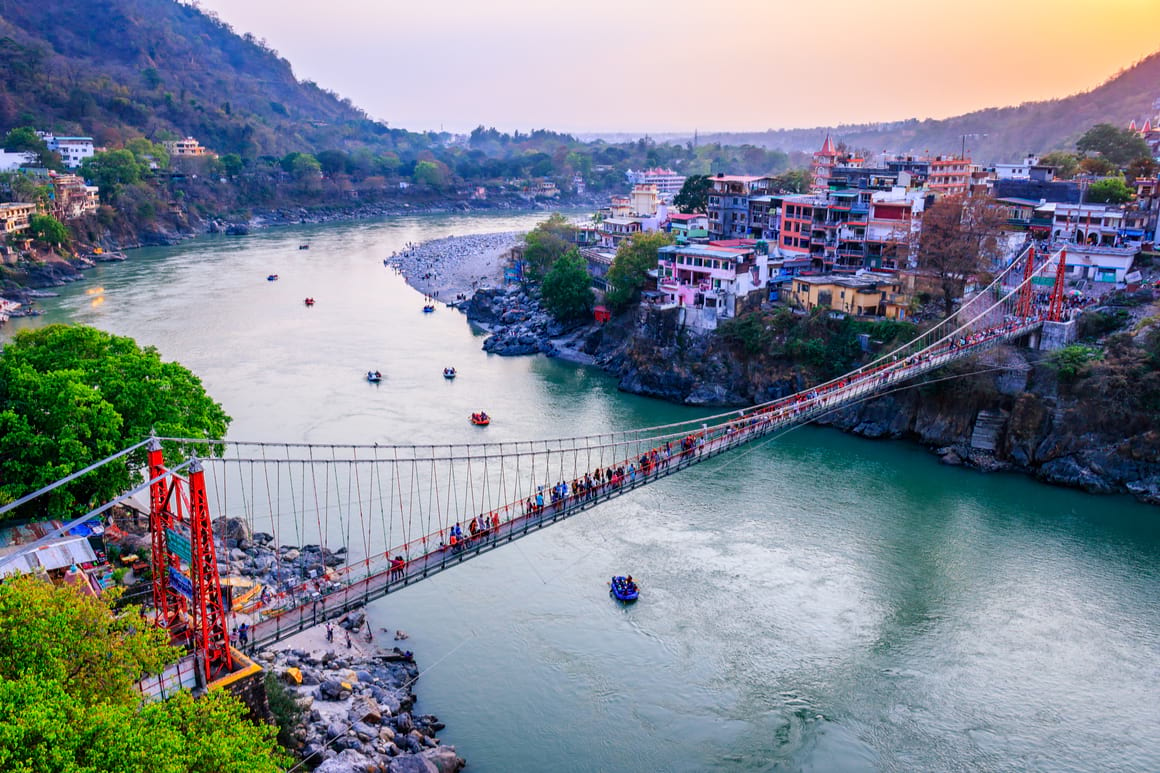
The Broke Backpacker is supported by you . Clicking through our links may earn us a small affiliate commission, and that's what allows us to keep producing free content 🙂 Learn more .
Choosing to stay in an eco-resort in India is more than just following the current trends. By choosing a unique accommodation in India such as an eco-lodge, you’re also supporting the local communities and honouring their culture and heritage. It’s a way to make tourism work for all parties, ensuring the local community benefits as much as tourists.
Eco resorts can be found in various places all over India, but the concept is most developed in popular tourist areas. Starting off by staying in a Goa eco resort could be a good introduction to this kind of accommodation.
Knowing that your stay isn’t harming the environment unnecessarily also provides peace of mind. Most eco-resorts in India bring you closer to nature, as well as offer a unique and memorable experience. There are many ways to travel more sustainably , but where you stay makes the biggest impact.
What to Look For in an Eco-resort in India
An eco-resort is an accommodation that takes steps towards environmental sustainability and social responsibility. This can be done using solar power or traditional building methods or using natural and locally sourced materials among other things. You should make sure to choose an eco-resort that cares about the impact it has on the environment.
Another aspect to look for in the best eco-resort in India is its focus on supporting and uplifting local communities. From employing locals to promoting nearby businesses, there are many ways in which tourism can positively impact local communities. Look for eco-resorts in India that also provide ample opportunity for you to explore and immerse yourself in local culture in a more meaningful way.
- > Organic farm and yoga centre
- > Neat and stylish décor

Agonda Eco-Friendly Cottage
- > Pine cottage shaded by palms
- > Rustic and simple

Bamboo Beach Bungalow
- > Bungalow built by traditional craftsmen
- > Located on the shores of Mandrem Beach

Dancing Dugong
- > Constructed without cutting any trees
- > Laidback island living

Vasundhara Eco House
- > Eco house made from natural materials
- > Private garden and pool
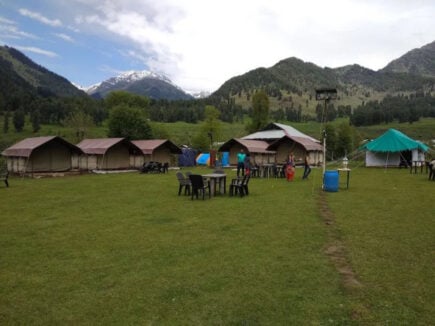
Aru Eco Resort
- > 16 guests
- > Eco-friendly camping
- > Amazing mountain setting

Grand Ayur Island
- > Tranquil natural setting
- > Accessible only by boat
Here’s our list of the best eco-resorts in India. Each one will offer a comfortable and well-managed stay while making a real effort to be sensitive to the planet and local communities.
1. Overall Best Value Eco-resort in India – Goverdhan Greens

- Organic farm and yoga centre
- Neat and stylish décor
Goverdhan Greens is a sprawling eco-resort set on three acres of land, generously scattered with over 10,000 trees. You’ll find it in Dwarka , a sacred Hindu holy pilgrimage site that offers easy access to the main highway.
The resort is underpinned by the ‘Reduce, Reuse, Recycle’ philosophy, and guests can enjoy meals made from organic produce farmed on the property. The resort also has a yoga centre and various alternate therapies.
Guests at the resort can enjoy various amenities, including a swimming pool, restaurant, a children’s park, and an indoor games room. There’s plenty to see and experience outside of the resort too; we highly recommend heading out on a sea safari on the Arabian Sea.
2. Best Budget Eco-resort in India – Agonda Eco-Friendly Cottage

- Pine cottage shaded by palms
- Rustic and simple
Agonda Eco-Friendly Cottages are situated near Agonda Beach in a peaceful setting surrounded by gardens. The village is within walking distance of local shops, restaurants and bars.
The cottages are built entirely from wood and also feature wooden furnishings. It’s a little rustic and perfect for anyone backpacking India on a budget. Swaying palms provide shade, minimising the need for air conditioning. A/C is also available, but for an extra fee.
Agonda Beach is a short walk from your cottage. If you’d like to explore the coastline further, hire a bike or car and head off to explore other nearby beaches and scenery. Other activities on offer include fishing and scuba diving.
Budget Tip: Dorms in India start from $10USD per bed. They’re the cheapest accommodation in the city. Search for hostels in the area!
3. Best Eco-resort for Couples – Bamboo Beach Bungalow
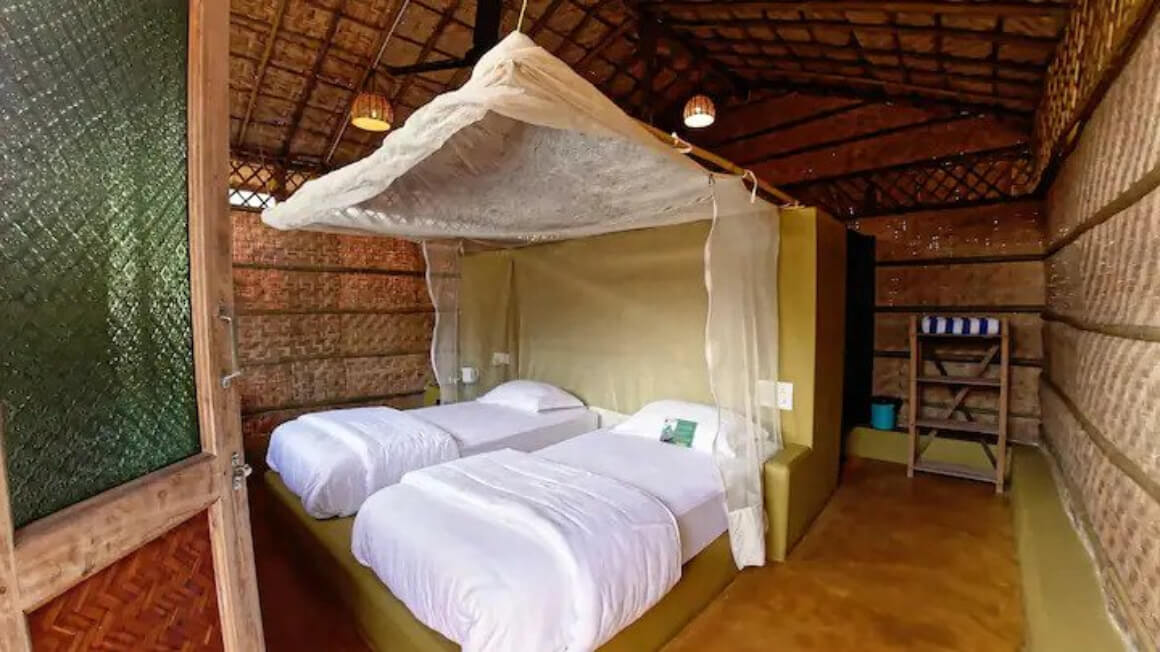
- Bungalow built by traditional craftsmen
- Located on the shores of Mandrem Beach
The idyllic Bamboo Beach Bungalows are authentic beach cottages built by traditional craftsmen. This unique accommodation in India sits on Mandrem Beach and offers a tranquil and well-furnished retreat.
Not only are the bungalows made using traditional methods, but they also use locally sourced, all-natural materials. Each bungalow has a balcony and outdoor seating area, as well as access to a pool, restaurant, and bar.
From the resort, you can spend days on the beach soaking up the sun on a lounger. There’s no need to go far as you can order food and drinks to be delivered to you as you relax in your lodge. If it gets too hot, cool off with a dip in the Arabian Sea or in the resort swimming pool.
4. Best Wellness Eco-resort – Ayushkamy
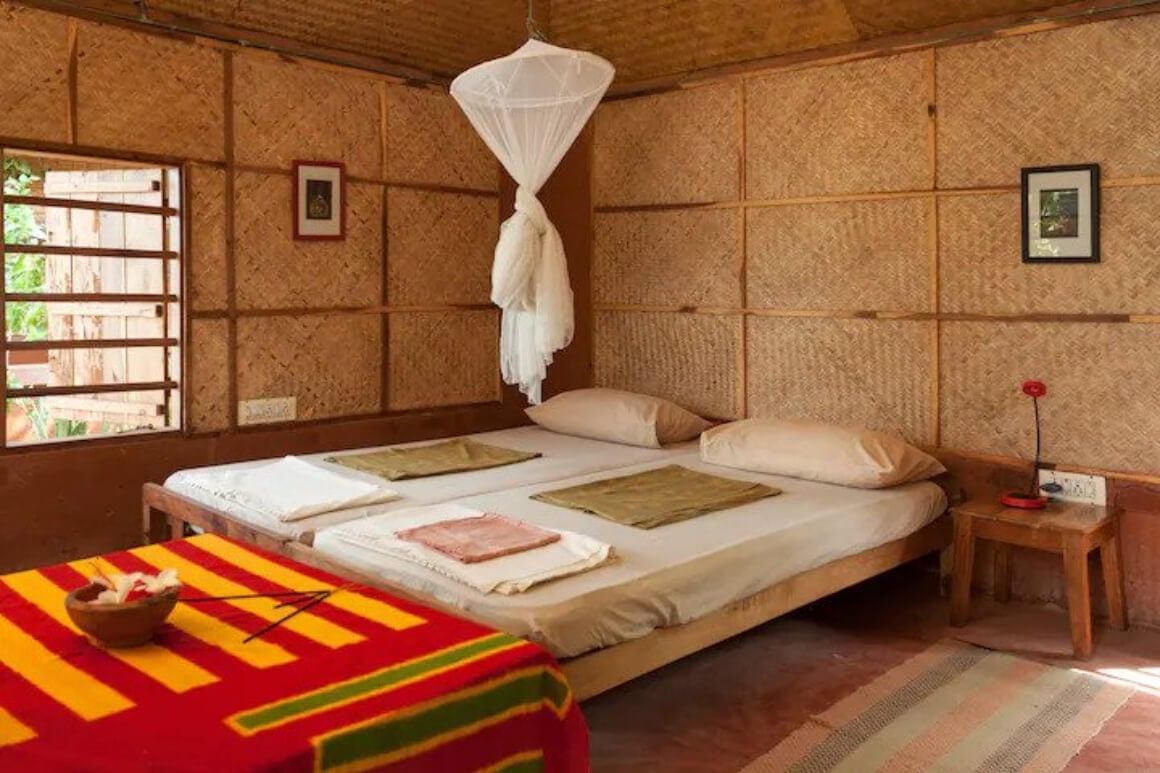
- Traditional vegetarian cuisine
- Daily yoga and Ayurveda treatments
Tucked in a peaceful village bookended by the Arabian Sea and Paravur Lake, Ayushkamy offers a tranquil eco-retreat. While the location is remote, the bustle of the city is just a few minutes away.
The resort is dedicated to minimizing environmental impact and uplifting the local community. Guests can enjoy traditional cuisine at the on-site restaurant and partake in daily yoga and ayurvedic treatments for a full immersion in local culture.
Guest can enjoy direct access to the beach, free wifi, a library, and can partake in a variety of local tour activities. In all, Ayushkamy is the ideal place to restore inner balance and recover from the stress of daily life.
5. Most Ecological Eco-resort in India – Dancing Dugong

- Constructed without cutting any trees
- Laidback island living
Located on a small island in the Andaman Sea, Dancing Dugong is a small resort offering a low eco-footprint and a quirky personality. Set overlooking the sparkling waters, the Dancing Dugong is one of the best eco-resorts in India for a relaxing and comfortable stay.
The resort was constructed without the need to fell any trees. In fact, over 40 trees were planted! They attract a multitude of local species, including the Andaman day gecko, Asian toads, bullfrogs, insects of many descriptions, and birds.
The resort sits right by the jetty where you can head out on diving excursions or relax in a hammock with a good book. For a little more adventure, grab a bicycle and explore the rest of the island.
6. Best Eco-resort for Families – Vasundhara Eco House
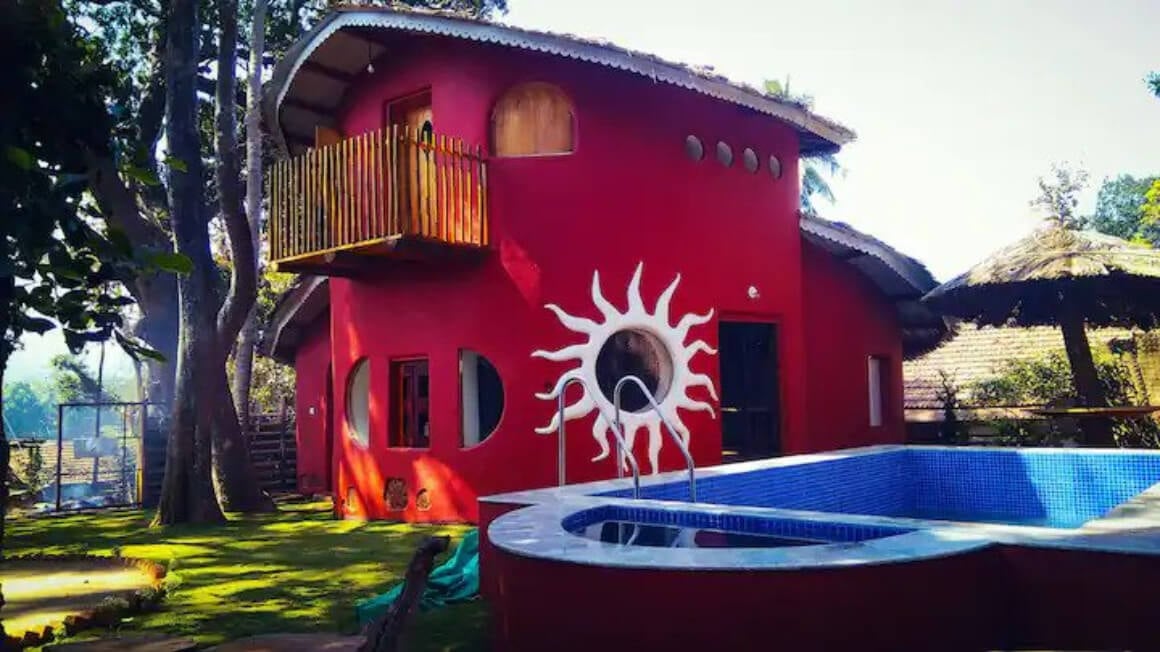
- Eco house made from natural materials
- Private garden and pool
Vasundhara Eco House is a quirky, vibrant, free-standing house in Parule on India’s east coast, surrounded by manicured gardens. The bustling village marketplace is within easy reach of the resort, and a variety of tourist sites are within an accessible radius.
The house has been built using local wood and clay. This ensures that the house is well insulated from the heat, making the absence of air-conditioning a non-issue. Guests can enjoy authentic local cuisine while staying here.
In addition to neat gardens surrounded by a fence for privacy, the house has a hammock and a private swimming pool. The beach is a short drive away where you can enjoy scuba-diving and water sports.
7. Best Eco-resort for Backpackers – Aru Eco Resort
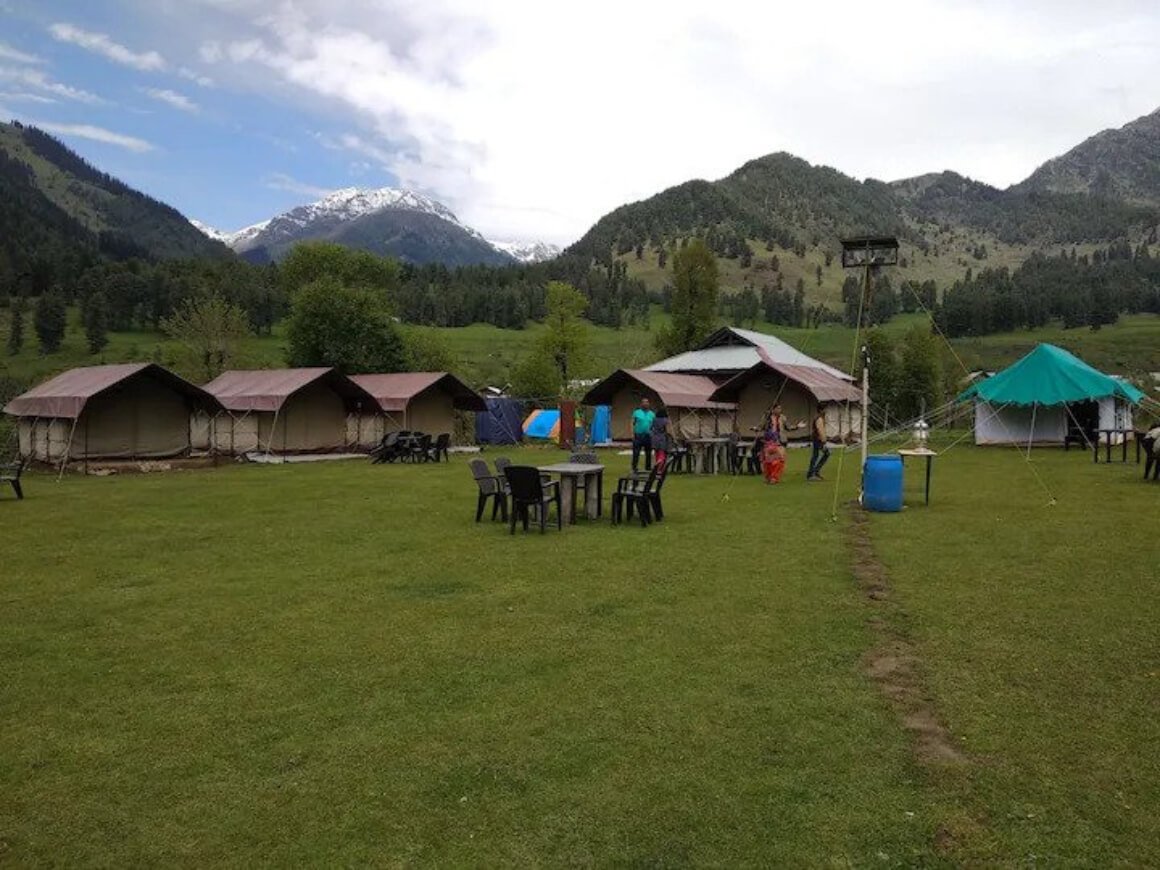
- Eco-friendly camping
- Amazing mountain setting
Aru Eco Resort is a tented camp in Pahalgam in Kashmir. Set in the scenic foothills, the resort offers majestic scenery and simple living. Guests can hire a spacious tent or bring their own and add it to the campsite on the meadow. The resort is a very basic campsite with individual bathrooms for each room, ideal for anyone travelling on a tight budget.
Aru Eco Resort is a unique accommodation in India. It offers memorable treks into the hills and mountains of Kashmir, past lakes and across rivers, and even to glaciers. Near to the resort, guests can visit the Aru Wildlife Sanctuary or the Golf Club at Pahalgam.
8. Amazing Luxury Eco-resort in India – Grand Ayur Island

- Tranquil natural setting
- Accessible only by boat
The stylish Grand Ayur Island is one of the best eco-resorts in India, situated on a private island in the backwaters of Alappuzha in Kerala. Surrounded by a network of canals and lagoons, the setting is truly tranquil and restorative.
Modern amenities and luxurious furnishings provide a comfortable retreat in this beautiful natural setting. Included in your stay is a complimentary consultation with a traditional Ayurveda doctor, where a variety of traditional rejuvenation therapies and treatments are available.
Accessible only by private boat, the Grand Ayur Island is a haven for healing and restoring balance. Day excursions from here include a cruise, fishing, and canoeing.
9. Best Eco-resort for a Weekend in India – Na La Ri Resort
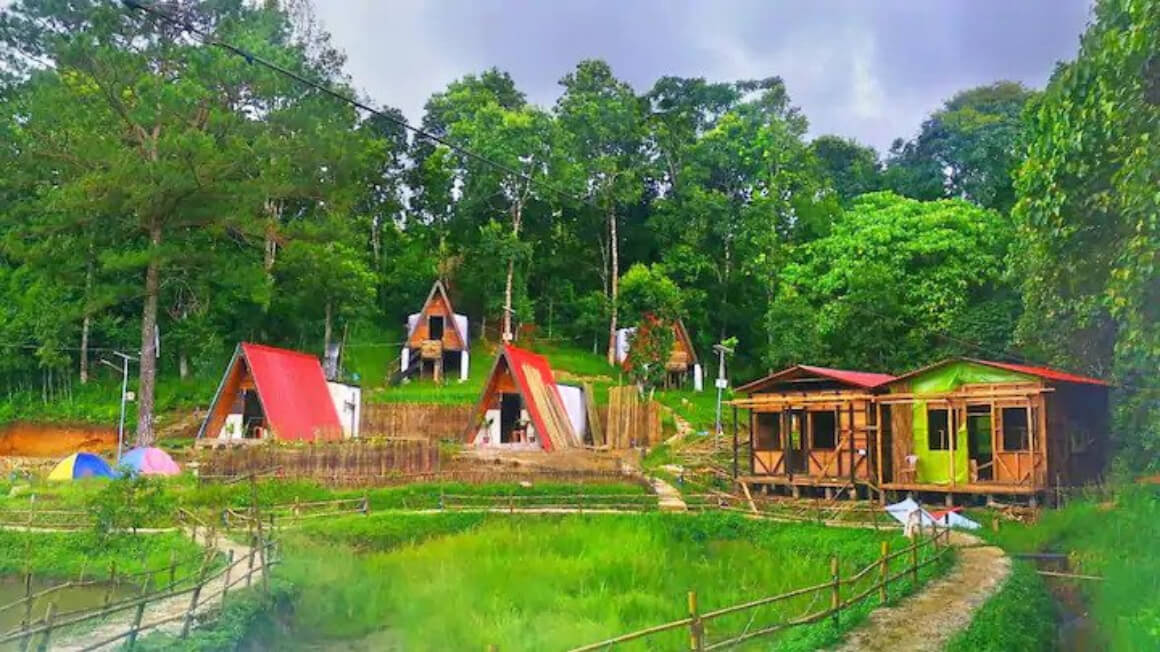
- Traditional nature lodge
- Pristine natural setting
Na La Ri Resort is an authentic eco-resort in a lush setting in Sumer. Comprising a combination of tents, small cottages and larger units, Na La Ri Resort is a haven for nature lovers.
The cottages and other resort buildings have been constructed in a traditional manner out of locally-sourced bamboo and wood. The resort is located within a small village and guests can enjoy the slow pace of village life here.
The surrounding forested hillsides, ponds, and rivers make a fantastic playground for anyone wanting to enjoy fishing, walking, bird watching and picnics.
10. Eco-resort With an Epic Location – Lchang Nang Retreat
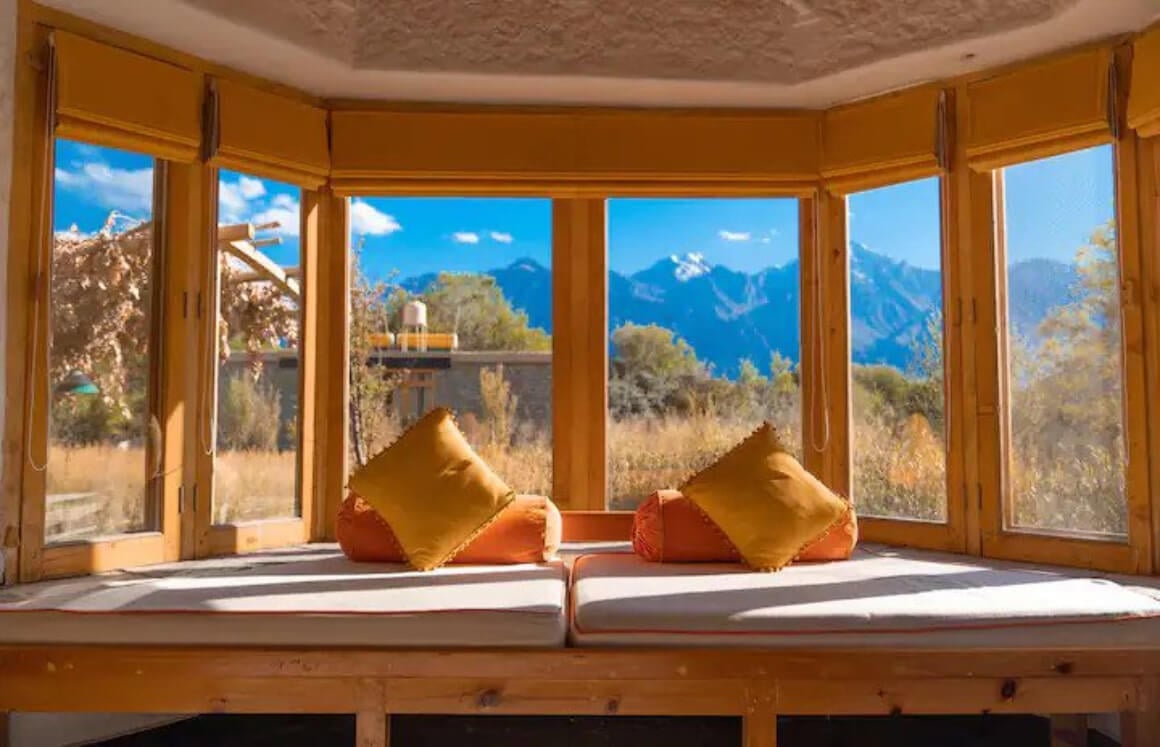
- Completely solar-powered
- Rustic setting surrounded by mountains
Tucked in the Nubra Valley, Lchang Nang is an eco-conscious resort on the old silk route. Lchang Nang translates to ‘The House of Trees’ in reference to the beautiful green surroundings against a backdrop of towering mountains.
The resort is entirely solar-powered and obtains drinking water from glacial melt, which is then UV treated and filtered. Local methods and materials were used to create these stunning cottages.
Guests at the resort can soak up this tranquil setting from the idyllic outside seating areas or from a hammock in the sunshine. There’s a meadow perfect for a gentle stroll, a river, and a vegetable garden that guests can explore.
11. Best Eco-resort for Views – Latoda Eco Lodge
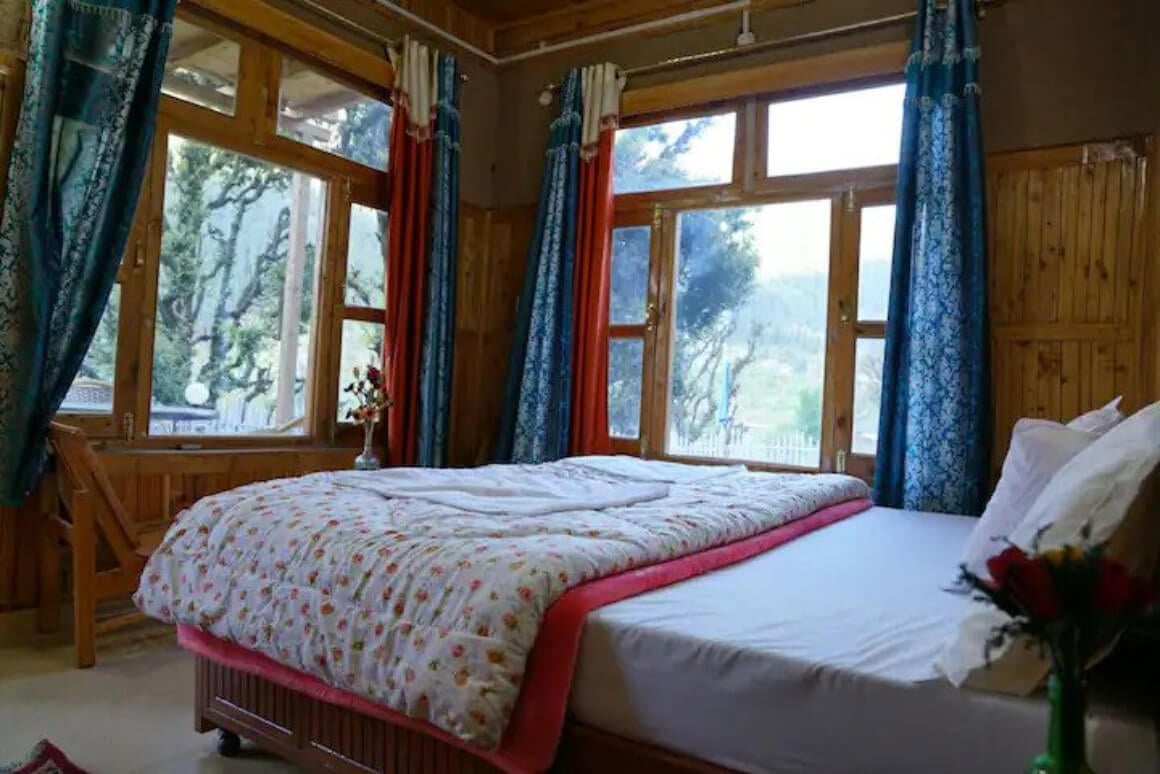
- Biodiversity walks through the area
- Pristine Himalayan setting
Latoda Eco Lodge lies in the beautiful Jibhi Valley in a village bisected by a small river that originates in a sacred place. Oak, walnut, and pine trees surround the accommodation, which is close to the jungle as well as a waterfall.
This unique accommodation in India consists almost entirely of wood. The lodge and everything inside it, from the bedding to the furniture, was created by the owner’s family.
You can learn about the diverse fauna and flora of the region on a biodiversity walk through the surrounding wilderness. Alternatviely, you can spend your time rock climbing, hiking, and even angling in this pristine landscape.
12. Best Surrounding Landscape Eco-resort – Royal Luxuria at Finch Eco Resort
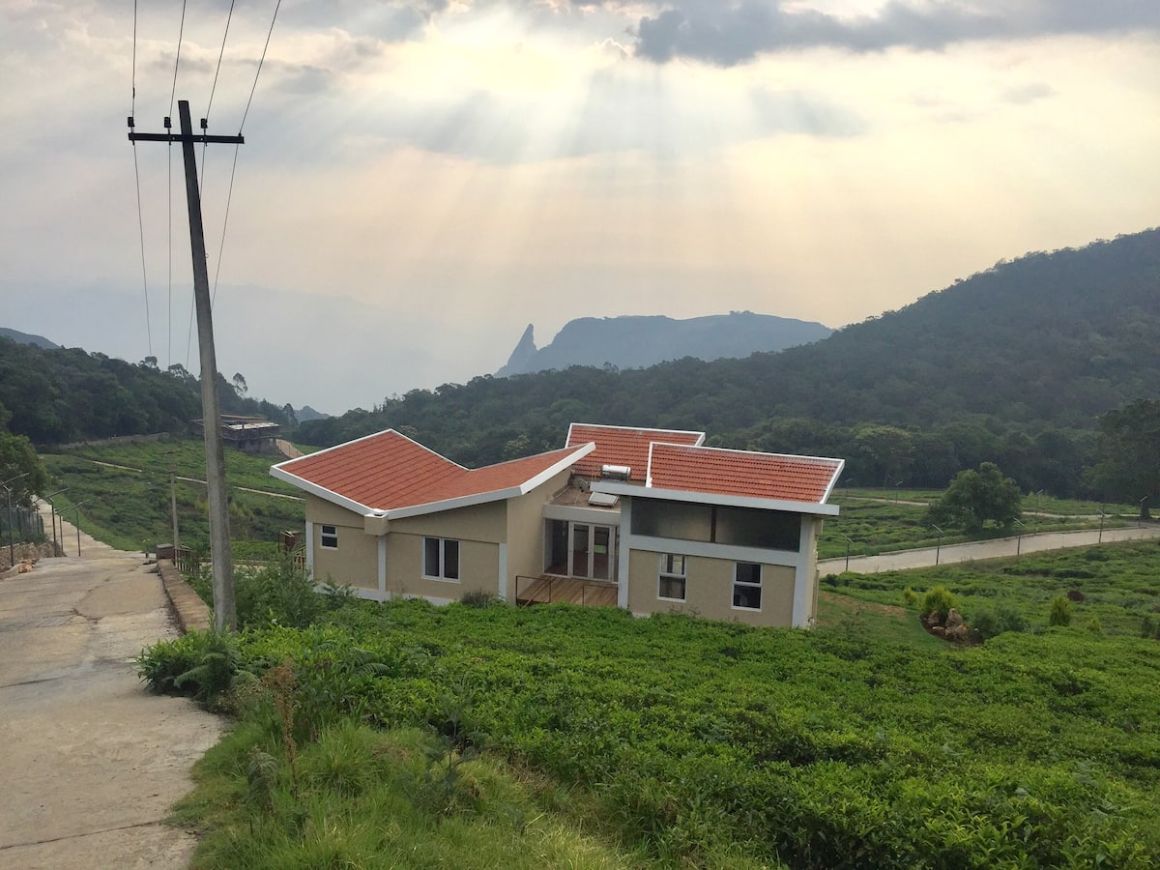
- Solar powered home
- Surrounded by green hillsides
Royal Luxuria at Finch Resort is a spacious modern home. It sits in Kodanad, Tamilnadu, in a lush landscape of rolling hills and greenery. The home runs entirely on solar power and features plenty of large windows to make the most of the natural light.
Around the house, guests can enjoy luscious lawns that stretch down to a small lake with incredible birdlife. The sound of the wilderness provides a soothing soundtrack to relax to. Traditional meals are provided by the on-site cook.
Explore the surrounding area on peaceful walks, spend time at the lake enjoying the serene setting, or head out to explore. With Kodanad Viewpoint only an hour away, this is a great base for exploring rural India.
13. Best Eco-resort for Long-term Travellers – River Side Resort

- Light footprint resort on the river
- Beautiful valley views
River Side Resort is one of the best eco-resorts in India with 12 comfortable and well-equipped cottages. Perfectly located for an exploration of the wilderness of the Himalayas and the lush setting surrounding them.
The eco-friendly cottages offer great views of the valley from their small balcony and outdoor seating area. Cottages each have their own private bathroom and are kept neat and clean.
From the resort, you can trek through the wilderness to the nearby Patna waterfall, hang out next to the river or take a gentle stroll through the lovely gardens. You can also head into Tapovana, a nearby town, where you can visit the temples, cafes and shops.
14. Best Eco-resort for Long-Stay Travellers – Vedic Village Resort and Spa

- Green roof eco bungalow
- 20-minutes from Kolkata
Vedic Village Resort and Spa is a luxurious eco-resort located in a peaceful setting just 20-minutes from the bustling city of Kolkata. Combining natural beauty and excellent amenities, Vedic Village is an excellent retreat.
The Aqua Home Rooms at the resort has a unique rooftop terrace garden that not only helps the building blend into its surroundings but also helps regulate the interior temperature of the room, minimizing the need for additional cooling.
Guests can enjoy a wide range of Ayurvedic wellness therapies, as well as a variety of leisure and sporting activities to unwind and destress. Tennis, cricket, soccer, swimming, kayaking, and even bowling is available from the resort.
15. Best Eco-resort for Honeymooners – Konark Eco Beach Resort

- Pine bungalow with thatch roof
- Romantic beach cottage
Overlooking a secluded stretch of beach, Konark Beach Resort lies between the river and the ocean in a lush and leafy setting. The resort is within easy reach of the market and several temples.
The rustic bungalows are built from pinewood and have a thatched roof. As well as adding to the overall ambiance of the beach resort, the roofs also assist with regulating the internal temperature of the bungalows.
Guests can soak up the sunshine on the sandy beach, explore the nearby Konark market for a bargain, or visit one of the many temples in the area. The resort also has a gym for those wishing to stay in shape.
Don’t Forget Your India Travel Insurance
ALWAYS sort out your backpacker insurance before your trip. There’s plenty to choose from in that department, but a good place to start is Safety Wing .
They offer month-to-month payments, no lock-in contracts, and require absolutely no itineraries: that’s the exact kind of insurance long-term travellers and digital nomads need.

SafetyWing is cheap, easy, and admin-free: just sign up lickety-split so you can get back to it!
Click the button below to learn more about SafetyWing’s setup or read our insider review for the full tasty scoop.
India is a spiritual destination for many travellers, and so preserving the environment of this destination comes almost naturally out of respect. In a country with such a rich cultural heritage, it’s no wonder it’s such a desire to protect and conserve the gorgeous landscape that you see today.
Our list features a mere fraction of the best eco-resorts in India, but it does aim to illustrate the sheer variety of unique accommodation in India that you have to choose from. Whether you’re backpacking India or enjoying a honeymoon, you’ll find an eco-lodge for every type of traveller.

Suzanne Borders
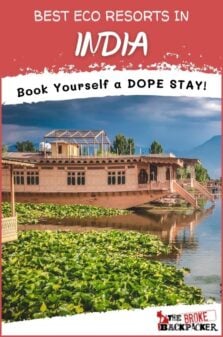
Share or save this post

Leave a Reply Cancel reply
Your email address will not be published. Required fields are marked *
Save my name, email, and website in this browser for the next time I comment.
Notify me of followup comments via e-mail.
Environment Go!
The Environment | Nature | Humans
Best 12 Ecotourism Destinations in India
One of the reasons ecotourism is growing in popularity is because younger people are choosing to travel for purpose rather than just to the next place to visit.
Respecting the environment and local culture is the cornerstone of ecotourism. Discover how to lessen your carbon footprint and, for added benefit, learn how to volunteer and support the community.
Keep an eye out for inspiring ideas if you’re seeking novel experiences, to discover alternative lifestyles, and to connect with like-minded others. With its focus on combating climate change , preserving the environment , and assisting local people, this novel approach to travel offers a fresh perspective on preparing for a trip .
Table of Contents
What is Ecotourism?
“Responsible travel to natural areas that conserve the environment, sustain the well-being of the local people, and involve interpretation and education” is the definition of ecotourism, according to the International Ecotourism Society (TIES) .

Thanks to a global network of people, organizations, and the travel and tourism sector, which educates travelers and travel industry professionals about ecological challenges, such travel is made possible.
Not only can visiting natural regions be an excellent way to see breathtaking scenery, but it can also support conservation efforts , help protect fragile ecosystems, and aid local economies.
Minimal environmental impact and steady, equitable economic growth are essential for ecotourism to reach its full potential. Another fascinating choice for your subsequent Worldpackers volunteer assignment is ecotourism. where you may see environmental projects while also helping the community where you are.
By patronizing nearby companies and adopting an environmentally conscious outlook, you may engage in ecotourism right away. However, you can also participate in a wider community that supports many initiatives and causes. These actions have a beneficial effect and aid in preserving the environment for future generations.
This type of tourism places a strong emphasis on responsible travel and environmental sustainability. It entails going to national parks to take in the beauty of the natural world, watch wildlife, and discover local customs. Additionally, ecotourism can involve outdoor pursuits like hiking, camping, kayaking, and bird watching if you’re an outdoor enthusiast.
It’s crucial to keep in mind that your choices have effects when traveling in an environmentally conscious manner. This is being aware of how you interact with the world around you. You gain from these activities as well as yourself; for example, refraining from littering and honoring cultural norms.
Ecotourism: The Underpinnings of It
TIES outlines a few guiding principles for ecotourism: Beyond mitigating physical, social, behavioral, and psychological effects, ecotourism aims to foster a culture of environmental preservation and respect while offering both hosts and guests enjoyable experiences.
An ecotourism perspective on the part of the host creates value for the community and the industry; they should assist in providing guests with amazing experiences while heightening their awareness of local political, social, and environmental issues.
Benefits of Ecotourism
So, what are the key benefits of ecotourism and how does it operate? Let’s examine the state of the economy, the surroundings, and your personal experience.
- Raising the degree of understanding across cultural boundaries
- Preserving distinctive travel places for upcoming generations
- The creation of enduring income streams for tourist locations
- Raising consciousness of environmental issues
- Education Goals
1. Raising the degree of understanding across cultural boundaries
Participating in ecotourism will raise visitors’ awareness of a variety of local cultural features, and this is a compelling argument for the benefits of ecotourism.
2. Preserving distinctive travel places for upcoming generations
Instead of trying to minimize the negative effects of tourism, ecotourism seeks to improve a place as a result of tourism-related activities. The preservation of the distinctive features of travel locations for both current and future visitors is a significant value proposition.
3. The creation of enduring income streams for tourist locations
By involving more local workers in the provision of ecotourism services and allocating all or part of the money earned from ecotourism to a range of charitable causes that work to raise locals’ standards of living, ecotourism can effectively help reduce poverty in the community.
4. Raising consciousness of environmental issues
Engaging in ecotourism causes people to become more sensitive and conscious of a variety of environmental challenges, including deforestation, global warming, and the depletion of natural resources. This shift will have good effects on the environment and the future of the people involved.
5. Education Goals
Watching Netflix videos on the world’s most picturesque locations and how overtourism and climate change are destroying them is one thing; it’s quite another. It shocks you. Your goal is to change things. However, you’re not exactly sure where to start. And you’ve already forgotten about it again a few days later.
Firsthand experience with a problem tells a completely different tale. Assume that you are in the midst of a rainforest. Feel the crisp air on your skin while taking in the variety of nature sounds in the background.
Imagine diving into warm, clear seas that are surrounded by vibrant reefs, entertaining dolphins, and unusual creatures.
Travelers can learn about the needs of the local people and the area’s endangered biodiversity through ecotourism, while this is not meant to suggest that you can only make a difference if you have visited the location. You could have a really strong reaction to such an experience.
Additionally, tourists who are responsible will become more sensitive to and understanding of various cultures. Upon returning home, the enthusiasm and information acquired can instruct and motivate others.
Top 12 Ecotourism Destinations in India
- Bandipur National Park, Karnataka
- Goa traditional trip
- River Rafting in Rishikesh
- Sunderbans National Park, West Bengal
- Chilika, Orissa
- Kaziranga National Park, Assam
- Tiger travel in Ranthambore National Park, Rajasthan
- Dudhwa National Park, Uttar Pradesh
- Chhattisgarh – The tribal excursion
Kerala is a well-liked ecotourism destination because of its varied animals, tranquil backwaters, and verdant forests.
There are many national parks and wildlife sanctuaries in the state where visitors can see uncommon and endangered animal and bird species like tigers, elephants, and Great Indian Hornbills.

Thekkady’s Periyar National Park is a well-liked ecotourism destination, offering trekking, bamboo rafting, and birdwatching among other things.
The varied flora and fauna of the Silent Valley National Park, which includes numerous rare plant and animal species, are well-known.
Kerala’s backwaters are a popular destination for eco-tourists as well since they offer canoeing, kayaking, and boat rides that give visitors a close-up view of the local ecology.
Kerala’s Thenmala is India’s first ecotourism destination, renowned for its premium honey production. Being a renowned tourist destination in Kerala, it provides activities like boating, trekking, rock climbing, and jungle stays in huts.
Sikkim is an environmentally conscious travel destination with amazing scenery and a deep cultural legacy. With a focus on environmentally friendly travel and farming, Sikkim is the first and only organic state in India.

To preserve its distinctive flora and fauna, the state has established some protected areas, including the Varsey Rhododendron Sanctuary, the Fambong Lho Wildlife Sanctuary, the Maenam Wildlife Sanctuary, the Singba Rhodendron Sanctuary, and the Khangchendzonga National Park and Biosphere Reserve.
Sikkim offers a wide variety of ecotourism activities, including hiking, nature walks, and birdwatching.
Major Sikkim tourism attractions include Yumthang Valley, which is well-known for its hot springs and rhododendron forests, and Gangtok, the state capital with breathtaking vistas of the Himalayas.
Other well-liked locations include the Nathu La Pass, an ancient trade route connecting India and Tibet, and Tsomgo Lake, a glacial lake encircled by snow-capped mountains.
Visitors can participate in sustainable tourism activities while taking in Sikkim’s distinctive blend of cultural heritage and natural beauty.
3. Bandipur National Park, Karnataka
Among the parks in the Bandipur Wildlife Sanctuary, Bandipur National Park is one of the oldest. It is one of India’s largest wildlife sanctuaries and is located in the state of Karnataka. The Indian government has given it strong protection and it is a part of the Nilgiri Biosphere Reserve.

The location satisfies eco-place standards. Here, eco-friendly motels promote environmental sustainability by conserving water and energy.
Conserving water aids in the preservation of natural environments, which provide homes for valued species. Mysore is the closest train station and Bangalore is the closest airport to this tourist destination. After that, drive to the park.
4. Goa traditional trip
Goa, also known as a “beach lover’s paradise,” has breathtaking beaches with crystal-clear waves that will enthrall visitors of all stripes. In addition, you can explore the area’s historic and scenic surroundings. Goa’s beaches and pristine water attract tourists from all over the world.
There are a lot of birds in Goa, and tourists will see some in the town and on the grounds of the many temples. The beach at Morjim is the best site to go seabirding.
How do you get there? Goa is easily accessible by train because the majority of the state’s train stations are located in Margao. Vasco-da-gama and Madgaon are named as the main train stations.
5. River Rafting in Rishikesh
One popular tourist location is Rishikesh. Discovering this location offers lots of chances to see the breathtaking natural beauty and charm of the mountains. River rafting and other adventure sports have a ton of opportunities in this place.
You may experience the amazing fusion of picturesque rafting and ecological interpretation in the heart of the lush Himalayan terrain by going eco rafting, also known as ecological river rafting.
How do you get there? The closest airport to Rishikesh is Jolly Grant Airport in Dehradun. In addition, Rishikesh boasts a strong transport network that links it to other significant locations.
When is the ideal time to visit? The best months to go river rafting in Rishikesh are September through mid-November and March through the first week of May.
6. Sunderbans National Park, West Bengal
One of the most captivating natural reserves on the planet is Sunderbans. This remarkable location offers ecotourism opportunities without compromising the unique local flora and fauna.
You might thus take a brief vacation in harmony with the natural world. Even though the Bengal Tiger is the emblematic animal of this exceptional mangrove forest, tourists can also enjoy many other natural marvels.
There is one Eco museum in Sudarikati and two Nature Interpretation Centers in Sajnekhali and Bhagabatpore.
How do you get there? The nearby railhead, which is close to Sunderbans National Park, is Canning. Once there, make reservations for a cab to take you to Sunderbans National Park.
7. Chilika, Orissa
This is an advertisement for biodiversity featuring Asia’s largest brackish water lake. Moreover, the largest lagoon stretches over 1100 sq km on the east coast of India.
You can experience the squeaks of numerous migratory birds from Baikal, Siberia, Southeast Asia, and Central Asia by taking a boat ride in this lagoon. Every winter, countless migratory birds assemble here in large numbers.
Many local bird species can be seen at Mangalajodi year-round, in addition to the migratory birds, and several of them build their nests there.
How do you get there? By train, you may get to the Bhubaneswar railway station. Chilika can be reached from Bhubaneswar in two hours.
8. Kaziranga National Park, Assam
This is a national park located in the Indian state of Assam’s districts of Golaghat, Karbi Anglong, and Nagaon. Thirty percent of the world’s rhinoceros are found in this reserve. Among the many things to do is watch animals. One such pastime is bird watching.
Here, it’s also possible to travel under the leadership of elephants or jeeps. Avoiding hiking helps prevent violence toward people and animals. There are private resorts outside the adjacent park.
More than 500 different species of orchids, tart fruits, leafy vegetables, big varieties of cane, and native fish can all be found in the park. There are wild Asiatic water buffalo, deer, elephants, and bigger white-horned rhinoceroses in the park.
How do you get there? The closest airports to the park are Jorhat Airport and Guwahati International Airport, which are respectively 217 and 97 kilometers apart. One can also get there by train; Furkating, which is 75 kilometers from the park, is the closest station.
No Indian has ever denied themselves the desire to visit this breathtaking location at least once in their lifetime. Located in Kashmir, Ladakh is a union territory that is bounded to the north by the Karakoram area and to the south by the Himalayan Mountains.
Leh, Drass Valley, Kargil, Razi Khar, Suru Valley, Salt Valley, Markha Valley, and Ladakh monasteries are important tourist destinations. The Leh Palace is yet another noteworthy sight. There are options for trekking, visiting Buddhist monasteries, and viewing cave paintings.
To raise awareness and investigate eco-tourism potential, the Ladakh Ecological Development Group, the Mountain Institute, and the Snow Leopard Conservancy organized a workshop in May 2001.
How do you get there? Ladakh is 494 kilometers from Manali and 434 km from Srinagar. To get to Ladakh, you can take a JKSRTC bus, hire a taxi, or ride in a jeep.
10. Tiger travel in Ranthambore National Park, Rajasthan
Ranthambore National Park, a popular destination in Sawai Madhopur in the state of Rajasthan, is a prime illustration of Project Tiger’s conservation efforts in India. Renowned for its tigers, Rajasthan’s Ranthambore National Park is a photographer’s dream come true.
For those who love nature, this location is a treasure. You get to investigate the magnificent creatures in the wasteland. You may experience ecotourism at its best because of government incentives and the work of conservationists.
How do you get there? Sanganer Airport is the closest airport. To get to Ranthambore, you can take a bus or taxi from Sanganer Airport. Sawai Madhopur is the closest railhead.
11. Dudhwa National Park, Uttar Pradesh
There are numerous endangered animal species found in Dudhwa National Park, including tigers and rhinos. One of India’s ironic bio-reserves is Dudhwa. This area protects a wide variety of animal, bird, and reptile species.
This has countless opportunities for ecotourism. Covering an area of 811 square kilometers and home to wetlands, grasslands, and dense forests, this location is ideal for observing large populations of tigers and swamp deer.
It is a perfect place for wild creatures to learn about the peace and comfort that nature can provide in a more tolerant manner.
How do you get there? The best route would be to go to Lucknow and then take a train or car to Dudhwa. Some trains can take you to Lucknow. Charbagh railway station is the closest train station.
12. Chhattisgarh – The tribal excursion
You will see the backyards of indigenous people on a tour here. Numerous ancient tribal cultures are still in existence in Chhattisgarh. There are remnants of ancient cultures that have not been influenced by modernity.
To protect these as national assets, the government has taken action. With so many options for ecotourism, Chhattisgarh looks to be a great vacation spot for those interested in wildlife, the outdoors, and learning about the distinctive tribal way of life in the area.
How do you get there? Using India’s extensive rail network to go to Chhattisgarh from any part of the country is undoubtedly the best option. The two main intersections where freight and passenger trains connect the state to other parts of India are Raipur and Bilaspur.
When is the ideal time to visit? In the wintertime. The weather is nice at that time of year.
For those who adore the beauty of Mother Nature, ecotourism is the best option. Visit these locations to determine their meaning.
In India, ecotourism has become a movement that is reflected in remote locations where young people are regularly seen picking up leftovers, teaching impoverished children, and fostering local development. Thus, when you plan your trip to India, let the environment take the lead.
Recommendations
- Top 10 Eco-Friendly Construction Companies .
- 11 Environmental & Economic Importance of Grasses .
- 13 Innovative Eco-Friendly Materials for Products .
- 5 Practices To Help Protect And Restore Seagrass Ecosystems .
- A Comprehensive Exploration of the 10Rs for Eco-Conscious Living

Providence Amaechi
A passion-driven environmentalist by heart. Lead content writer at EnvironmentGo. I strive to educate the public about the environment and its problems. It has always been about nature, we ought to protect not destroy.
- Providence Amaechi https://environmentgo.com/author/amaechi-providence/ Overpopulation in Lagos State: Impacts and Possible Remedies
- Providence Amaechi https://environmentgo.com/author/amaechi-providence/ 3 Environmental Services in a Hospital
- Providence Amaechi https://environmentgo.com/author/amaechi-providence/ 19 Environmental Startups in Boston
- Providence Amaechi https://environmentgo.com/author/amaechi-providence/ Environmental Analysis, Types, Techniques, Importance, and Examples
- Biodiversity
- Endangered animals and species
- Natural Resources
Leave a Reply Cancel reply
Your email address will not be published. Required fields are marked *
Save my name, email, and website in this browser for the next time I comment.
Notify me of follow-up comments by email.
Notify me of new posts by email.
Recent Posts
- How Arborists Limit Their Environmental Impact
- The EV Market’s Future in Australia
- Financing Options for Solar Energy Projects
- Overpopulation in Lagos State: Impacts and Possible Remedies
- 10 Best Practices for an Eco-Friendly Building Foundation
- EN - English
- PT - Portuguese
- ES - Spanish
- How it works
- Become a Host
- Download the app
Top Destinations
- United States
- United Kingdom
What type of experience are you looking for?
- Non-Profit School
- Permaculture project
- Eco Village
- Holistic Center
- Guest House
- How Worldpackers works

Learn from the most experienced travelers of the community
Traveling with worldpackers, planning and budgeting for travel, make a living while traveling as a lifestyle, travel with worldpackers.
- Using Worldpackers
- Work exchange
- Social impact
Plan your trip
- Women traveling
- Budget travel
- Solo travel
- Language learning
- Travel tips
- Get inspired
- Digital nomads
- Travel jobs
- Personal development
- Responsible travel
- Connect with nature
Top destinations
- South America
- Central America
- North America
- More destinations
- WP Life WP Life
- Exclusive discounts Discounts
- Explore the world
- Asia & Oceania
Discover India's top 3 best ecotourism destinations
Explore India's ecotourism hotspots: Hampi, Kerala and Andhra Pradesh. Learn how to travel responsibly and make a positive impact with ecotourism in India.
Raquel www.solanomundo.com.br
Jul 14, 2023
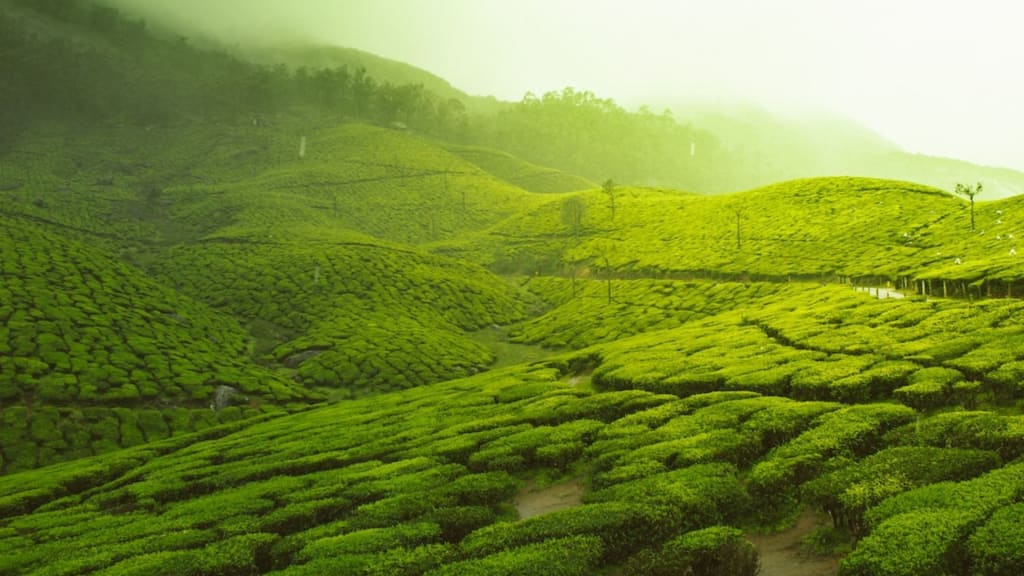
Ecotourism in India offers remarkable encounters and bring constructive change on our planet. From teaching in Kottayam , helping on farms in Dakshina Kannada , or living at a holistic center in Karnal - there are many ways to explore India while making an ecological difference.
Discover some of the best ecotourism destinations across India such as Hampi, Kerala, Andhra Pradesh and more. Get tips for responsible ecotourism travel including how to prepare for your trip with this comprehensive guide about ecotourism in India.
Ecotourism in India: what is it? Why is it important?
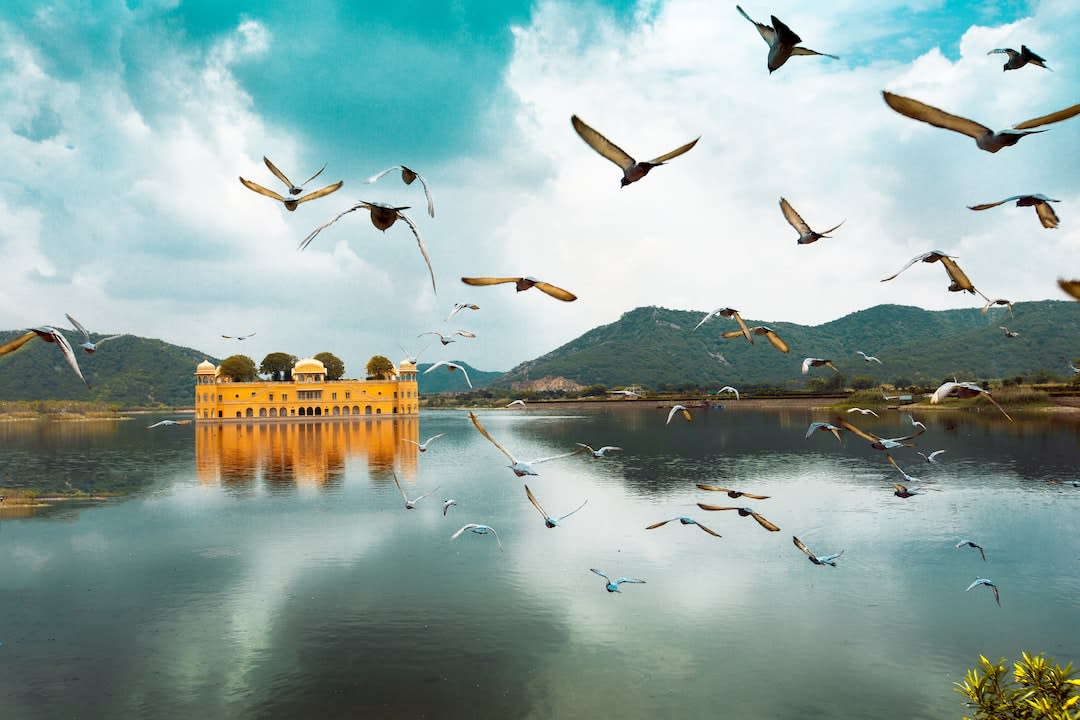
Ecotourism is a type of travel that concentrates on the natural world, sustainability, and conservation. It’s an approach to travel that allows you to experience nature while minimizing your impact on the environment. Ecotourism activities include:
- Bird watching and wildlife viewing
- Camping in natural areas and hiking trails
- Cultural visits to local villages or indigenous communities
- Educational tours about the environment.
Ecotourism has a lot of advantages, both for humanity and the natural world. For instance, it can help protect habitats from destruction by conserving biodiversity, offer economic opportunities to local communities, propagate sustainable practices and create consciousness among travelers about environmental issues.
In India, trekking in the Himalayas and visiting national parks with their abundance of wildlife are some of the best ecotourism activities. Other popular tours include scuba diving off the coast of Hampi or Kerala where you can explore coral reefs teeming with vibrant marine life , or whitewater rafting down river Ganges which is considered sacred by Hindus all over India.
Visitors may also participate in volunteer programs offered by Worldpackers where they exchange skills with locals while living in ecological projects, NGO's or holistic centers, providing them a unique insight into Indian culture and traditions.
The growing popularity of ecotourism in India

Ecotourism in India has experienced a surge of interest over the last ten years, drawing travelers from around the world to its captivating landscapes and diverse culture. The country’s vast range of wildlife reserves, national parks, beaches, mountains and forests make it an ideal destination for those seeking a more sustainable travel experience .
Ecotourism in India has seen a sharp rise due to its varied geography and deep cultural history. Also, various Indian states have implemented initiatives to encourage ecotourism such as establishing protected areas and building eco-friendly infrastructure.
This has made it easier for tourists to access some of India’s most beautiful spots while helping local communities benefit economically from tourism activities. Moreover, there are now numerous organizations that specialize in organizing ecotours across the country – making it even simpler for visitors to explore India responsibly.
Ecotourists can go to some of India's most spectacular destinations , such as Kerala's backwaters, Karnataka's rainforests, Andhra Pradesh's villages, Uttarakhand’s snow-capped peaks, Rajasthan’s desertscapes, Goa’s pristine beaches and Sikkim’s meadows and riverside trails.
For those looking for an authentic experience in nature without compromising on comfort or safety standards – Himachal Pradesh with its Himalayan passes and Arunachal Pradesh with its remote mountain villages provide the perfect opportunity.
The increasing appeal of ecotourism in India is a demonstration of the striking beauty and variety found in its scenery, customs, and wildlife. With Worldpackers' opportunities , travelers can now experience all that India has to offer while making a positive impact on local communities through volunteering projects.
Best ecotourism destinations in India
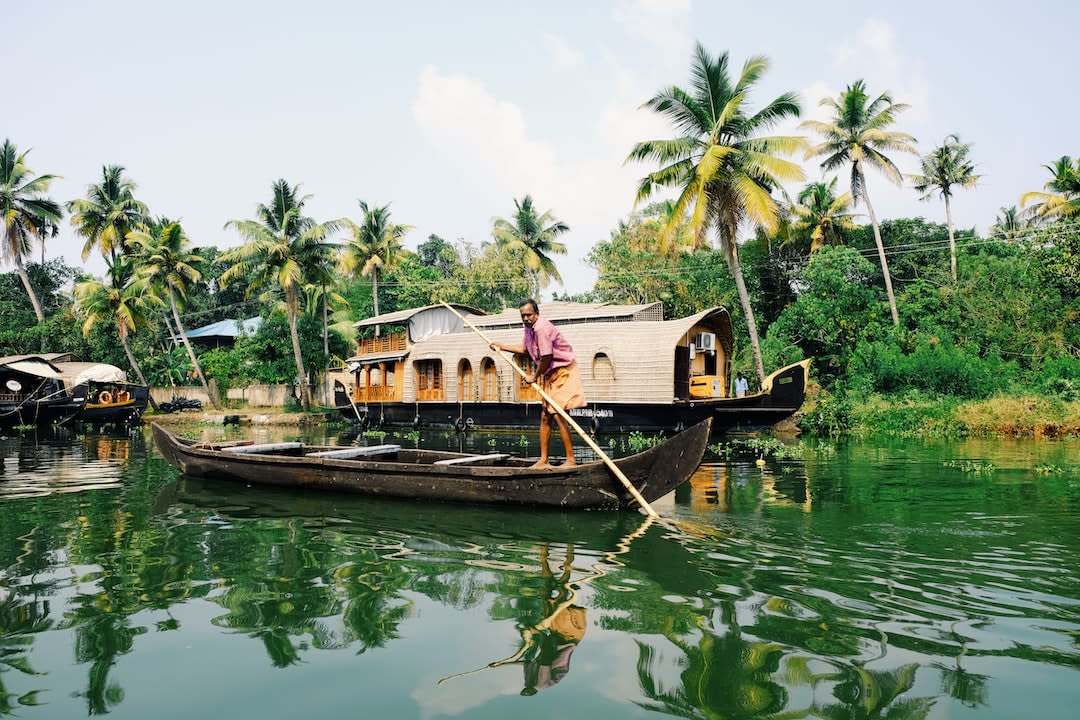
1. Ecotourism in Kerala
Kerala, a state in India’s tropical Malabar Coast region, is renowned for its palm-lined beaches and backwaters. It's also home to numerous ecotourism sites like the Silent Valley National Park .
Here visitors can explore the area’s diverse flora and fauna while enjoying activities such as trekking, boating or bird watching. There are also plenty of cultural attractions like temples and palaces to explore . Kerala is the perfect spot for those seeking a distinctive excursion that blends natural wonders with cultural attractions.
2. Ecotourism in Hampi
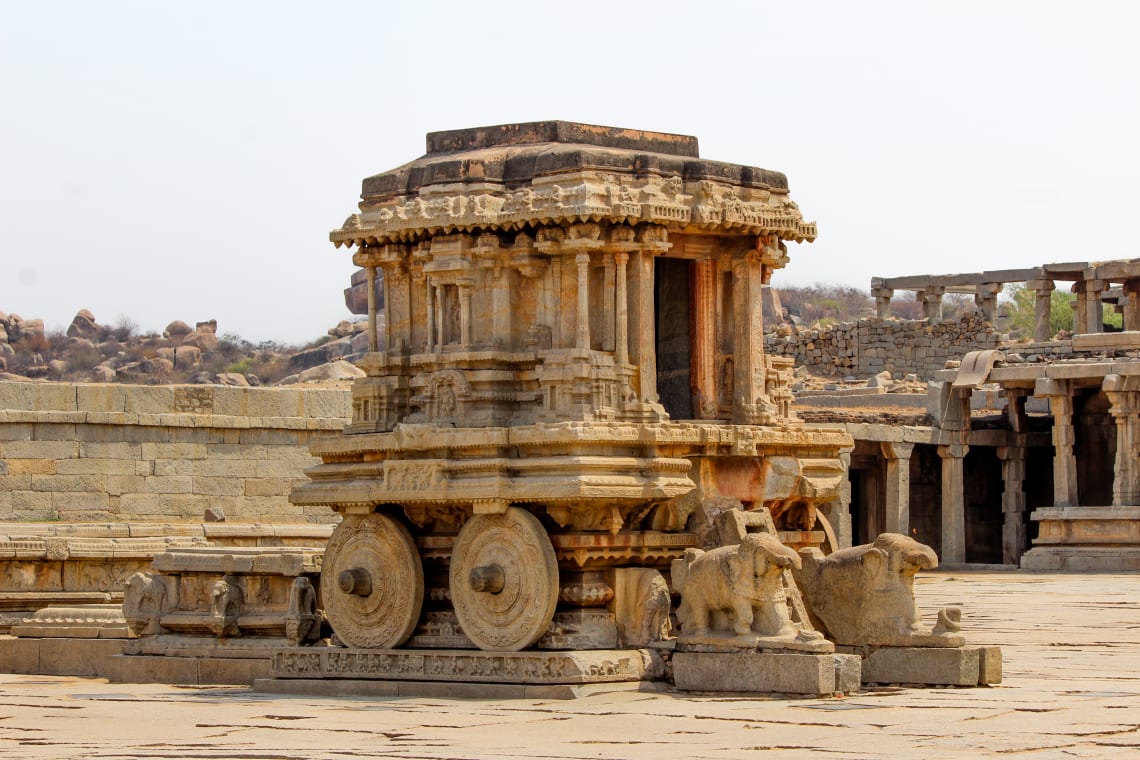
Hampi, a UNESCO World Heritage Site renowned for its ancient ruins and captivating scenery created by wind erosion, is an increasingly popular ecotourism destination in Karnataka.
Its ancient ruins are surrounded by hills dotted with boulders that have been intricately carved by wind erosion over time, creating a stunning scenery for visitors to marvel at . From spotting tigers and elephants in Bandipur National Park to exploring these captivating ruins, eco travellers will be sure to get their fill of nature and culture on this trip.
3. Ecotourism in Andhra Pradesh
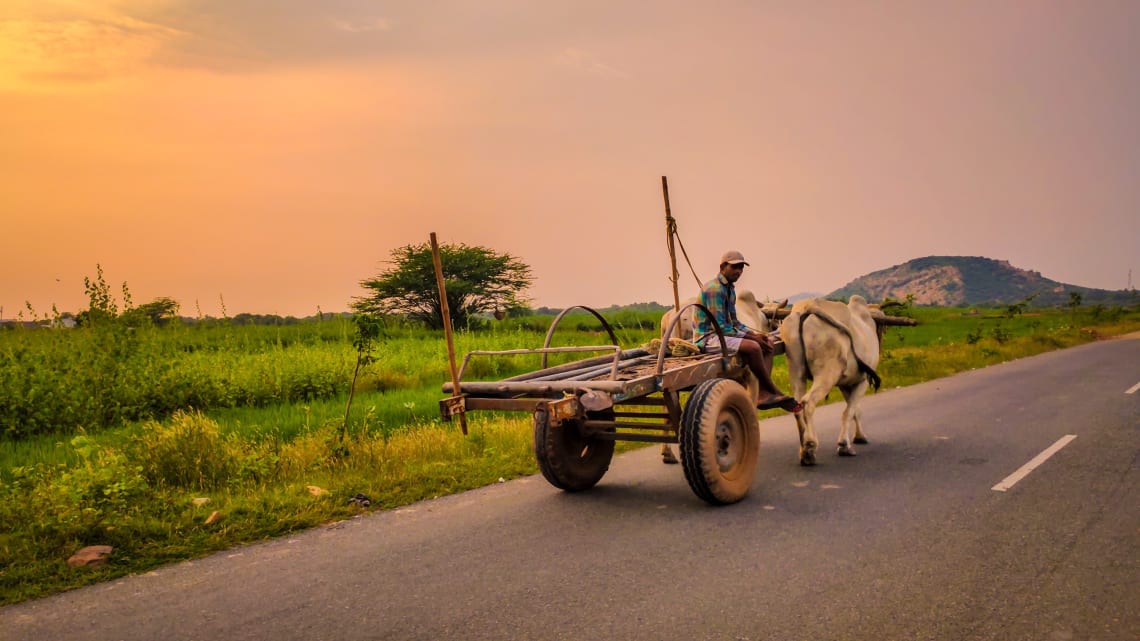
If you're lucky, you may spot endangered species like the blackbuck antelope while exploring wildlife reserves located throughout Andhra Pradesh . For those seeking a more active experience, rappelling down cliffs and mountain biking through dense forests can be enjoyed near Araku Valley, where one can also get to know local customs firsthand from friendly locals eager to share their stories with you.
These three states all have something special on offer when it comes to ecotourism - whether you want an adventure filled holiday full of outdoor activities or just some peace and quiet away from hustle and bustle, these destinations have got something for everyone.
With so much beauty and diversity on display, India definitely deserves its place amongst the top global tourist spots when it comes to ecotoursim experiences, so don't forget your camera because this trip will be worth capturing every moment.
Volunteer with ecotourism in India with Worldpackers
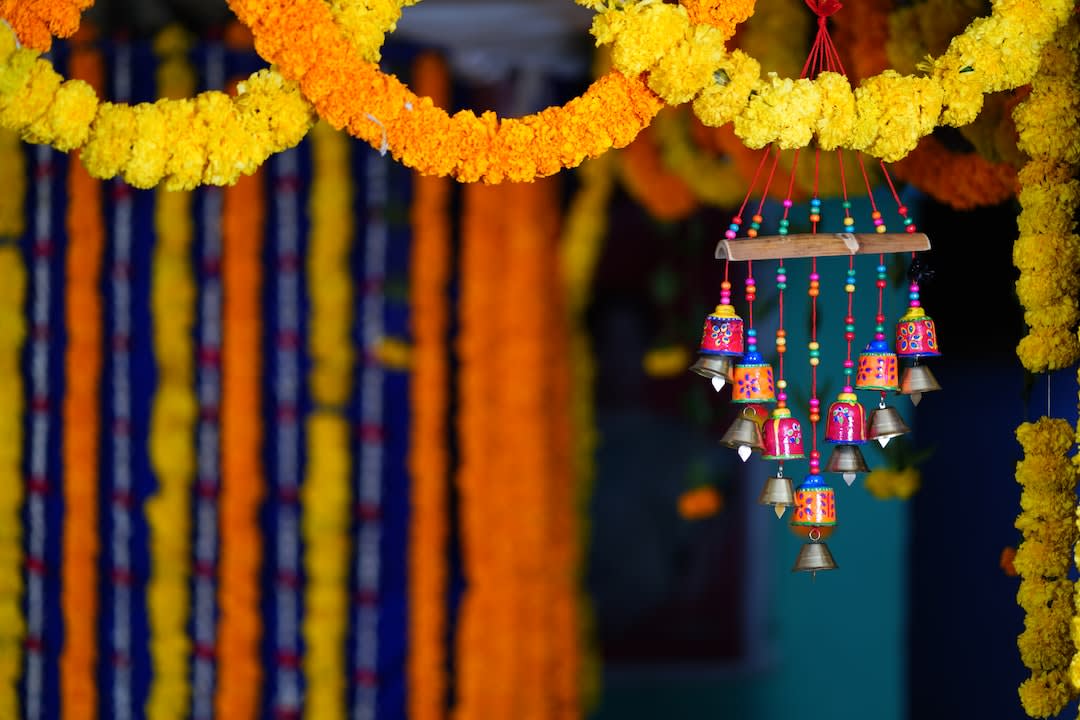
Worldpackers is an online platform that connects travelers with volunteer opportunities all around the world. India has seen a surge in popularity of Worldpackers, due to its cost-effectiveness and adaptability .
Indian Hosts can offers a wide range of benefits, from accommodation and meals to language classes and travel tips . Through this platform, volunteers can gain valuable experience while helping out local communities in need.
You can find free accommodations at hostels, guesthouses, homestays, farms and other unique locations across the country. They also provide meals at most locations as well as access to Wi-Fi, so volunteers can stay connected during their travels.
Try to look for hosts that also provides language classes, in that way, you can learn a little Hindi or another regional dialect while volunteering abroad. Finally, they can provide comprehensive travel advice and safety precautions such as what vaccinations are required before entering certain areas of the country and how best to protect yourself.
Volunteers have a lot of possibilities when it comes to projects available through Worldpackers in India, ranging from teaching English at schools to working on organic farms or conservation initiatives such as planting trees and building water systems for villages without access to clean drinking water.
One major benefit offered by volunteering through Worldpacker’s is the opportunity to immerse oneself into Indian culture while giving back directly by aiding local communities who may not have access to resources otherwise provided by government organizations.
This type of hands-on approach allows volunteers to make a real difference while gaining invaluable life experiences along the way. Furthermore, because these trips are often low cost (or even free), travelers are able to get off the beaten path and explore regions rarely visited by tourists which adds yet another layer of personal growth potential.
Volunteering with Worldpackers in India is an excellent opportunity to acquire meaningful knowledge and have a positive effect on the local population . For those looking for an immersive cultural experience, India offers a range of ecotourism destinations ideal for enriching their travels.
How can you be a responsible ecotourist?
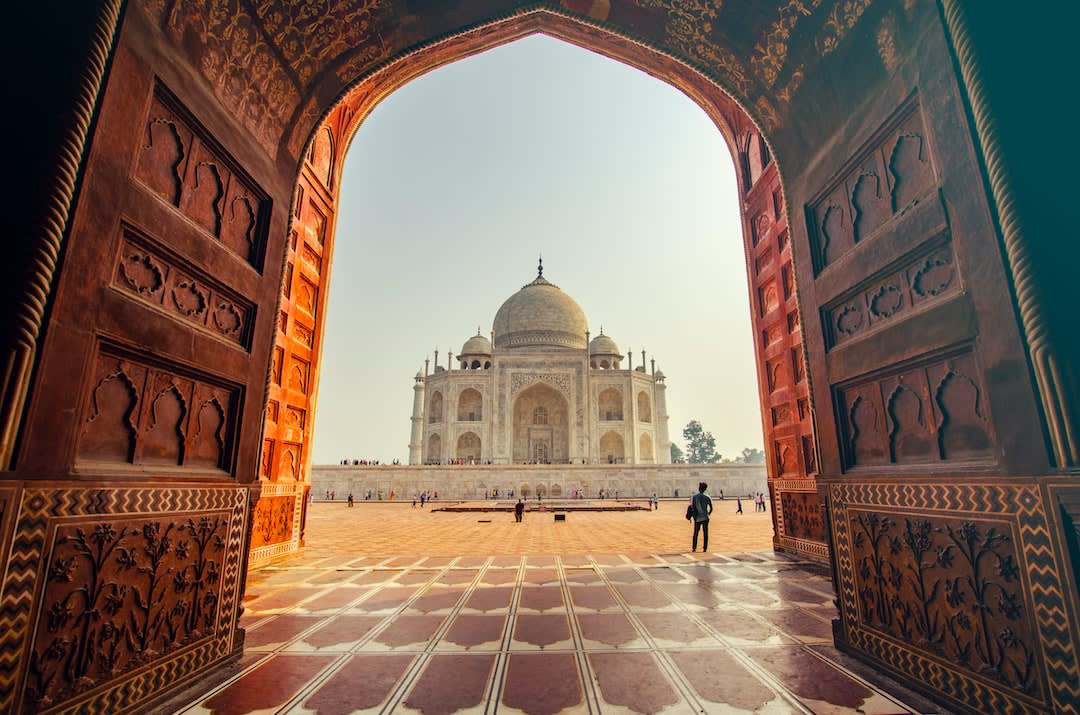
When travelling to India, it is essential to observe and abide by the local cultural norms in order to show respect for the people and places you visit. Respectful behavior should always be practiced when visiting any destination, but this is especially true in India where cultural norms are deeply rooted in tradition.
As an ecotourist, it’s essential that you show respect for the people and places you visit while on your trip. This includes being aware of how you dress , refraining from taking photos without permission , learning some basic phrases in the local language and understanding different religious practices.
Minimizing environmental effects is a fundamental element of responsible ecotourism . Simple steps such as bringing reusable water bottles or bags can make a big difference when travelling around India. You should also try to avoid single-use plastics wherever possible and dispose of rubbish responsibly by using designated bins or recycling points whenever available.
Finally, supporting local businesses and communities is another way to ensure that your trip has a positive impact on its surroundings. This could include:
- Buying locally produced souvenirs from small shops
- Eating at restaurants run by locals instead of international chains
- Opting for public transport over private taxis
- Volunteering with Worldpackers who have projects all across India
By doing so, you will help create economic opportunities for those living nearby as well as preserving traditional cultures that may otherwise be lost due to tourism development pressures.
Exploring India's natural splendour through responsible ecotourism can be a rewarding experience that benefits both the local populace and environment. To ensure you have an enjoyable and safe trip, it is important to prepare properly for your ecotourism adventure by researching your destination, packing appropriately, and getting vaccinated.
Keep reading: ecotourism jobs: discover the world through nature
How to prepare for an ecotourism trip to India?
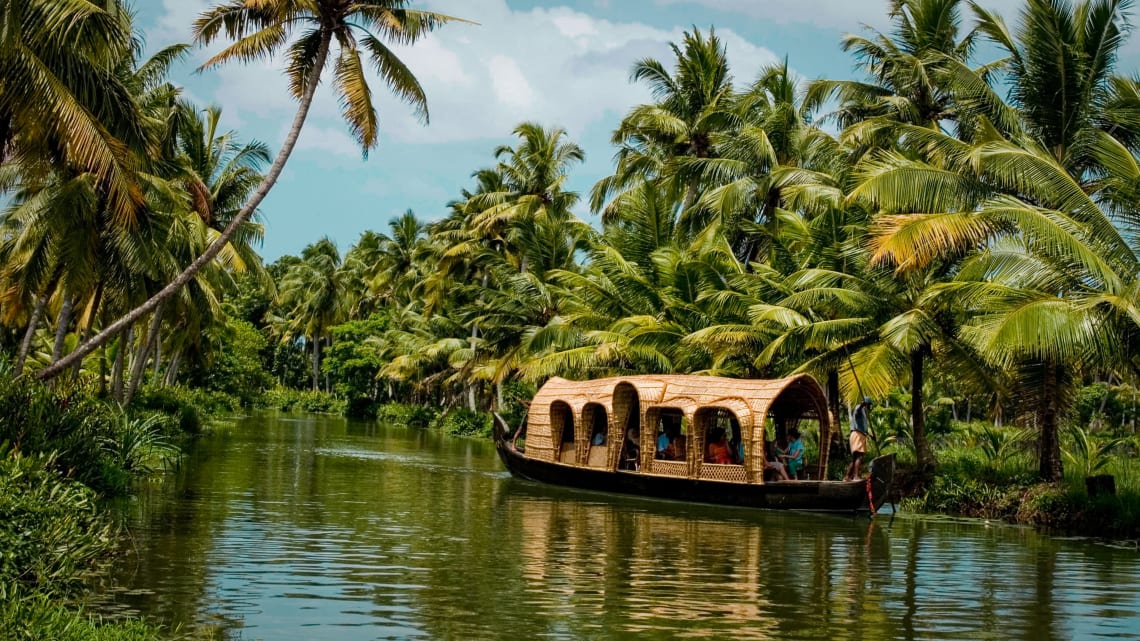
Before embarking on an ecotourism journey in India, it is important to be adequately prepared. Whether you’re planning a trip for yourself or with friends and family, the following tips will help ensure your journey is as safe and enjoyable as possible.
Research your destination
Before booking your tickets, take some time to research the destination you plan on visiting . Check out local attractions and activities available at your destination such as national parks, beaches and temples, so that you can make an informed decision about what type of experience you would like to have while there.
Look also into any potential health risks associated with the area such as mosquito-borne illnesses or water contamination.
Pack appropriately
Once you’ve decided where you want to go and what type of experience you would like to have while there, start packing accordingly.
Bring items that are suitable for outdoor activities, including sunblock, insect repellent and long sleeved shirts and pants made from natural fabrics like cotton or linen which provide better breathability in hot climates than synthetic materials.
Take care of your health
Before travelling abroad, it is essential to consider vaccinations and other preventive measures for a safe and enjoyable experience. For instance, avoid drinking tap water unless it has been boiled first and opt for cooked food instead of raw vegetable and meat.
It's always good to frequently wash hands particularly after using public restrooms and wear protective clothing when outdoors especially during peak mosquito hours (dusk till dawn). Moreover, if you are coming from an infected area outside India , then yellow fever vaccination may be mandatory prior entering the country - check with your doctor beforehand.
In conclusion, these tips should help ensure a safe yet memorable ecotourism experience in India whether it's trekking through the Himalayas or exploring its rich cultural heritage. So don't forget them next time round.
Traveling to India with Worldpackers

Worldpackers offers an incredible opportunity for travelers and backpackers to volunteer in India in exchange for accommodation, food, and cultural experiences. From Kerala to Karnataka, there are plenty of eco-friendly destinations with amazing sights and activities that can be enjoyed responsibly by following some simple tips such as respecting local customs, minimizing your environmental impact, and supporting local businesses.
Before taking off, it's essential to gain knowledge about the area you're traveling to, pack suitable clothing based on the weather of your destination, and get any required vaccinations. So what are you waiting for? Start planning your ecotourism adventure today. With Worldpackers , you can volunteer with local communities and help make a positive impact on the environment while having life-changing experiences.
Whether it be exploring Hampi or living in a Holistic Center in Karnal, ecotourism offers travelers an opportunity to have meaningful encounters that will stay with them for years to come. With this guide, you are now equipped with the knowledge to make your ecotourism trip to India a rewarding and exciting experience that will bring you closer to nature.
Want to learn more about planning your trip? By subscribing to the WP pack plan you have unlimited access to +120 courses at Worldpackers Academy, the travel school made by travelers! Follow @solanomundo for more travel content.
Join the community!
Create a free Worldpackers account to discover volunteer experiences perfect for you and get access to exclusive travel discounts!
Raquel Pryzant
www.solanomundo.com.br
Travel journalist, author of the @solanomundo project and collaborator in different media such as Viajes National Geographic, Folha de S. Paulo and Qual Viagem Magazine. Read more: www.solanomundo.com.br
Be part of the Worldpackers Community
Already have an account, are you a host, leave your comment here.
Write here your questions and greetings to the author
Muhammaddiyor
May 12, 2023
Jun 04, 2023
Hi.. Do check our blogs on our website holidaydada.com our most recommend blog https://holidaydada.com/2023/07/04/outdoor-adventures-in-surrey-hiking-biking-and-beyond/ read it out. Thank you
More about this topic

Japan on a budget: live like a local and save your dollars
Australia travel tips for first-time travelers: when to visit and the best things to do.
Top 10 things to do in Indonesia: Bali and beyond
How do Worldpackers trips work?
As a member, you can contact as many hosts and travel safely as many times as you want.
Choose your plan to travel with Worldpackers as many times as you like.
Complete your profile, watch the video lessons in the Academy, and earn certificates to stand out to hosts.
Apply to as many positions as you like, and get in contact with our verified hosts.
If a host thinks you’re a good fit for their position, they’ll pre-approve you.
Get your documents and tickets ready for your volunteer trip.
Confirm your trip to enjoy all of the safety of Worldpackers.
Have a transformative experience and make a positive impact on the world.
If anything doesn’t go as planned with a host, count on the WP Safeguard and our highly responsive support team!
After volunteering, you and your host exchange reviews.
With positive reviews, you’ll stand out to hosts and get even more benefits.
unsustainable
sustainability • ethics • climate • waste • renewables • ecology • poverty • equality
Eco-Friendly Tourism in India: 10 Green Travel Destinations
If you’re looking for “responsible travel India” or “sustainable travel India,” you’ve come to the right place. This guide to eco-friendly tourism in India explores the environmental and ethical concerns for those who wish to visit this incredible subcontinent without causing harm to its wondrous peoples and landscapes, while we examine India’s top 10 green travel destinations.
By Ruma Dey Baidya of The Holiday Story
Table of Contents
Sustainable Travel in India
India is a country of diverse landscapes and cultures. Its rich biodiversity has allowed the rapid growth of sustainable tourism associated with green travel destinations.
Green travel, also known as eco-tourism, is a lifestyle choice that one adopts while traveling to reduce their carbon footprints. It’s a great way to explore nature while healing it simultaneously. Tourists must be responsible for their actions and conscious of the environment.
For further reading, see The Holiday Story’s complete India Tour Guide
Also visit Laure Wanders for a complete guide to visiting the richly diverse country of India . As a solo female traveller, Laure has a unique perspective and captures her experiences through beautiful photography and immersive stories.
Wander With Jo also heaps a huge section on travel around India , with beautiful articles such as the Travel Guide to Fambong Lho Wildlife Sanctuary, Gangtok, Sikkim .
Top 10 Green Travel Destinations in India
Given below is a list of ten green travel destinations in India.
Mawlynnong Village, Meghalaya
Mawlynnong Village of Meghalaya was announced as Asia’s cleanest village in 2003.
It’s located in the East Khasi Hills at a distance of 90 km from the state capital Shillong. Locals take active participation in keeping the village clean and beautiful. Plastic is wholly banned here, and smoking is also prohibited. The entire village has facilitated the use of bamboo dustbins to collect litter. All villagers and tourists are supposed to follow these rules strictly. Any defaulters are heavily charged.
This village also stands out in having a hundred percent literacy rate, and most villagers can converse in English.
The main inhabitants of Mawlynnong are the Khasi tribe, who follow a matriarchal society. Its location on the Indo-Bangladesh border provides a mesmerizing view of lush greenery.
Monsoon is the best time to visit Mawlynnong village.
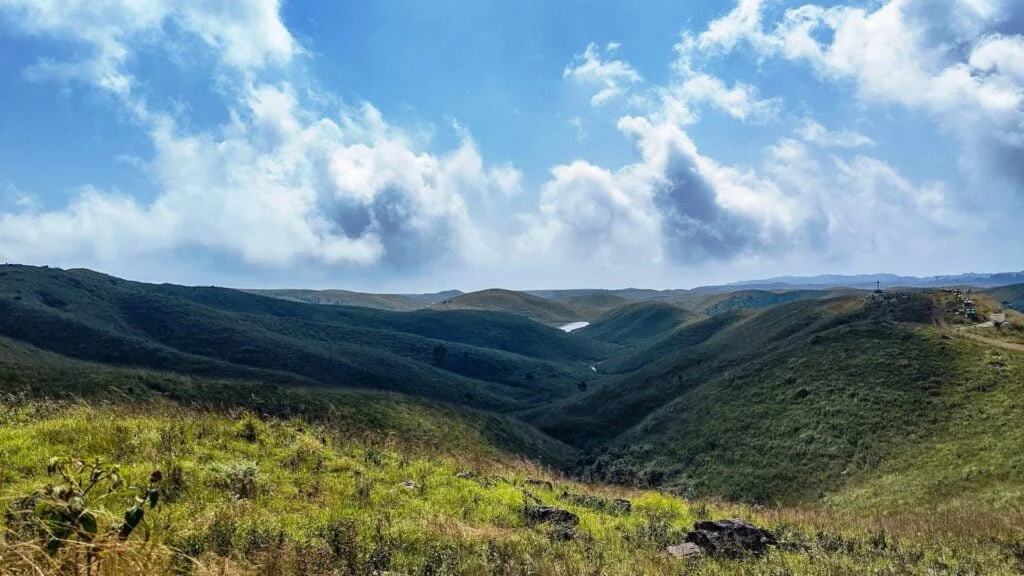
Khangchendzonga National Park, Sikkim
The Khangchendzonga National Park is a well-known UNESCO World Heritage site of Sikkim.
You can cover the distance between this National park and Gangtok in a four-hour drive. It’s a part of the Himalayan global diversity hotspot and home to many indigenous plant and animal species. The park is built around the third highest mountain peak in the world, Kanchenjunga.
There are lush green valleys, glaciers, lakes, and caves inside the national park. Visitors are instructed to maintain cleanliness inside the park and should not litter or disturb the vegetation inside by plucking leaves or flowers. Travelers should discard nonbiodegradable items outside the park.
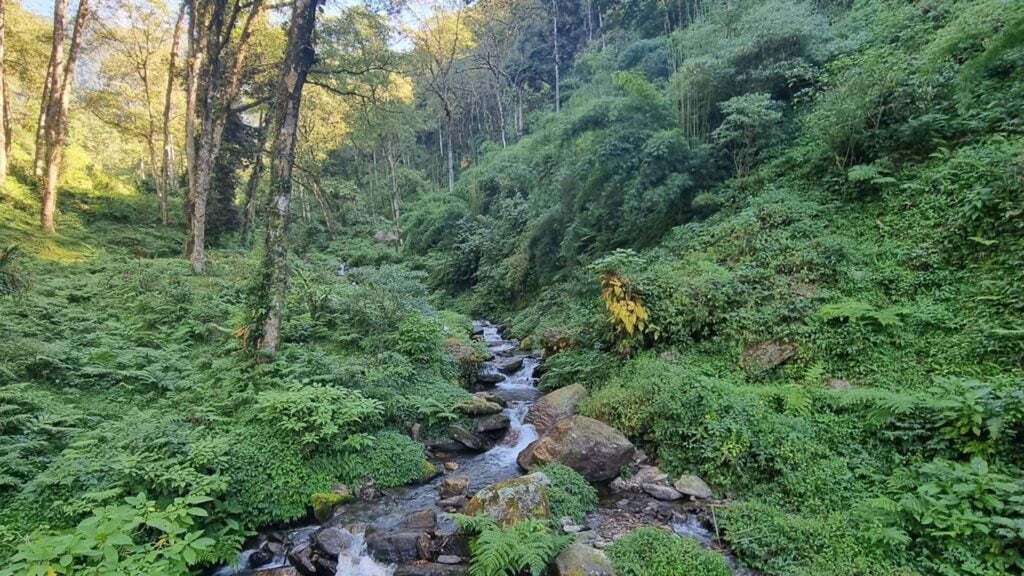
Thenmala, Kerala
Thenmala is India’s first-ever eco-tourism center.
It spreads across the hills of Kollam and Trivandrum regions of Kerala. It lies at a distance of 70 km from the capital city of Thiruvananthapuram.
The term Thenmala means “honey hill,” as the region is known for producing superior quality, honey. The livelihoods of locals depend on forest provided products like honey and rubber.
It’s a major tourist spot in the state. The main attraction is the Thenmala dam. Tourists are encouraged to indulge in environment-friendly activities like boating, rock climbing, and trekking. Huts inside the woods allow tourists to spend the night in the forest depths.
Winters in southern India are mild and comforting; thus, it’s the best time to explore this green travel destination.
Khonoma Village, Nagaland
The Khonoma Village of Nagaland used to be a well-known hunting spot.
The majority of the inhabitants of this village depended on hunting birds and wild animals as their source of livelihood. However, near the end of the 1990s, the government banned hunting in this region. Since then, the village has gradually developed into India’s first green village.
It mainly formed the Khonoma Nature Conservation and Tragopan Sanctuary to protect the Blyth’s Tragopan, a native endangered species. The sanctuary encompasses a total area of 70 sq km and contains a variety of flora and fauna. The majority of the population here is part of the Angami tribe.
The tribe believes in preserving trees and keeping their lands clean, gathering all their waste in one place and burning them. Tourism is promoted through activities like trekking and camping .
Coorg, Karnataka
Coorg is a hill station nestled within the Western Ghats of Karnataka.
Its misty hills, great green valleys, and rolling plains are a wonder of nature that mesmerizes tourists. It’s located at a distance of 252 km from the state capital Bangalore.
It’s the home to Nagarhole National Park, a haven of beautiful plants and animal species. Coffee and cardamom plantations are also prominent here. There are several rivers and waterfalls in Coorg. Exploring the backwaters of Kaveri is an important tourist activity.
The pleasant South Indian weather and picturesque scenery make it a favorite vacation place for tourists. Tourism in Coorg is mainly about admiring and respecting nature.
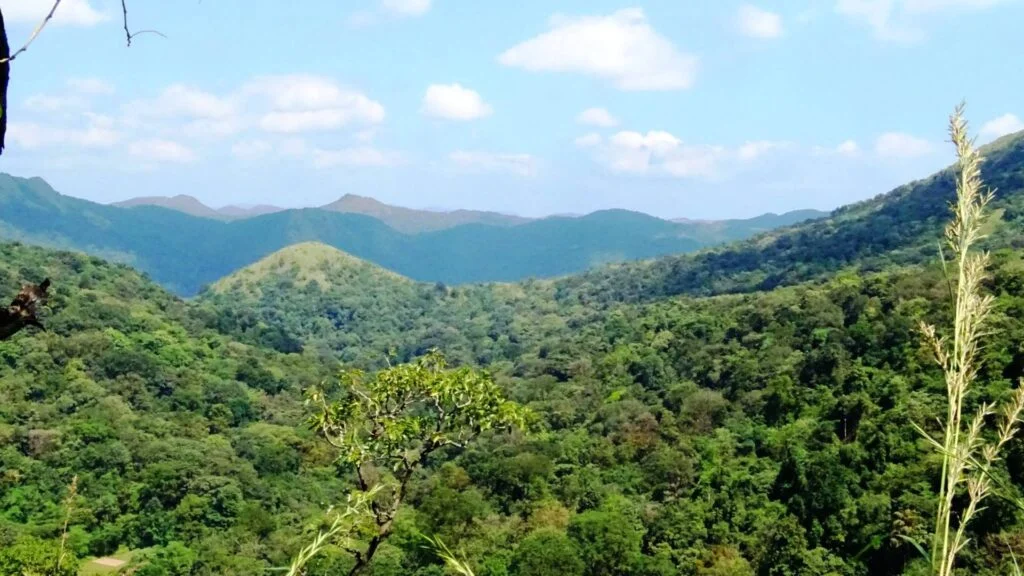
Sitlakhet, Uttarakhand
Sitlakhet is a beautiful hill station in Almora, Uttarakhand. This Himalayan hamlet is known for its picturesque Kumaon scenery and serenity.
Sitlakhet is an up-and-coming tourist spot located near the famous Ranikhet. There is no shortage of greenery here. Trekkers are the primary visitors to this region. The easy to moderate level trekking routes make it easier for beginners to try this new challenge.
All other activities here are also eco-friendly. People from the city visit Sitlakhet for a relaxed and soulful vacation devoid of any city pollution.
Daringbadi, Odisha
Daringbadi is a part of the Eastern Ghats in Odisha, located in the Kandhamal district, which is 251 km from the capital city of Bhubaneswar. This hill station is filled with tiny green hills and hillocks, rivers, and waterfalls. Pine and sal trees are dominant in this area.
You can also find coffee plantations here. The natural beauty of Daringbadi has gained the nickname of Kashmir of Odisha, and it’s the face of Odisha’s green travel destinations. There are several parks and reserves made to preserve nature.
The local communities have built nature camps all over the place to educate visitors about the region’s natural resources. The early winter months are the ideal time to visit Daringbadi.
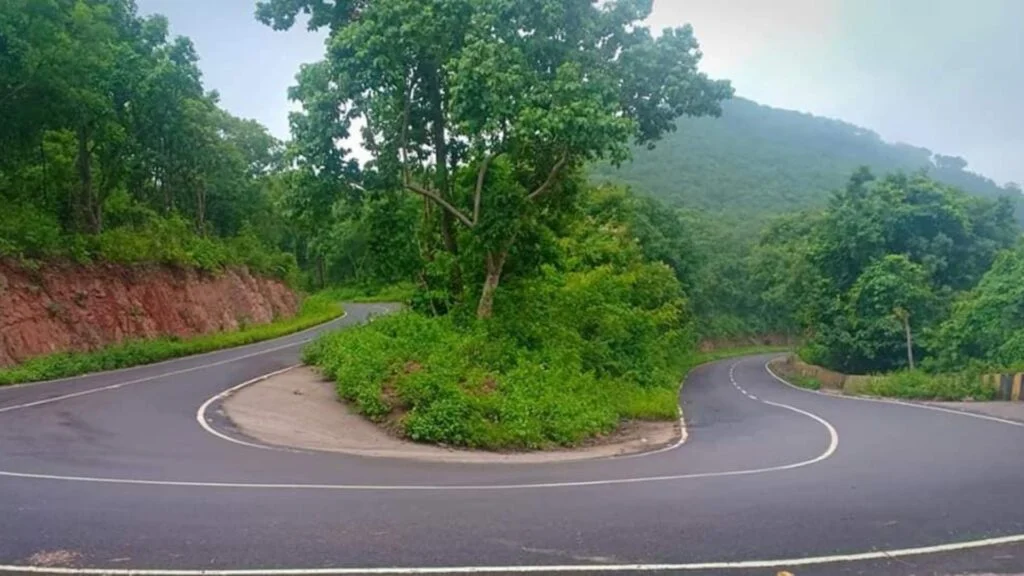
Pondicherry, Tamil Nadu
Pondicherry was a French colonial settlement till 1954.
This pristine town on India’s west coast is now a major United Territory of the country. Its sandy beaches, deep blue ocean, and cultural diversity attract tourists from all over the world. Its roads and buildings still represent the essence of its earlier French settlement.
Tourists are urged to rent bicycles to explore the town in an eco-friendly way . You can spend your day participating in water activities like scuba diving, snorkeling, surfing, and more.
Pondicherry is also a well-known spiritual retreat. Places like Aurobindo Ashram, Manakula Vinayagar Temple, and Sacred Heart of Jesus church provide calm and serenity to visitors.
Majuli, Assam
Majuli is the world’s largest river island on the Brahmaputra in Assam.
The distance between Majuli and the state capital Guwahati is 347 km. Its picturesque scenery of rural India attracts people from all over the world.
This freshwater island is a pollution-free region that promotes sustainable tourism. The island was brought under the spotlight recently as it was on the verge of submerging due to rapid erosion. The local government has announced a ban on single-use plastic on the island. Apart from the scenic beauty, the island also has several cultural and religious buildings.
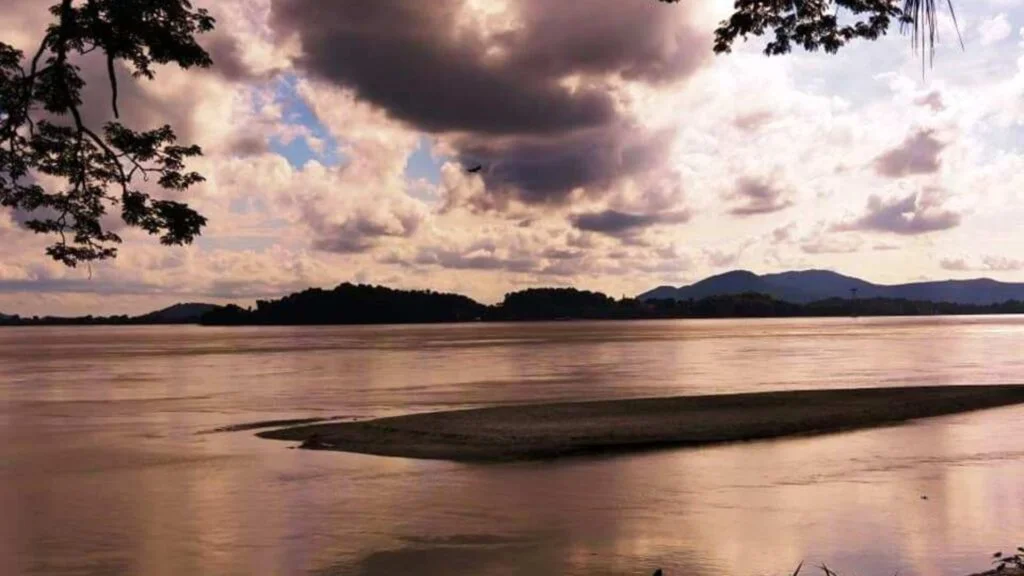
Matheran, Maharashtra
The small hill station Matheran is in Raigad, Maharashtra.
It’s a part of the Sahyadri Hills of the Western Ghats and a biodiversity hotspot in India. The capital city Mumbai lies at a distance of 80 km. Matheran means the ‘forest on the forehead’ in English.
The forest-covered hills of Matheran keep pollution out of its boundaries, thus creating a quiet, clean summer retreat. It was also announced as an eco-sensitive area by the Ministry of Environment.
Visitors can experience trekking, bird watching, and other nature-friendly activities here. Visit Charlotte Lake for some breathtaking views.
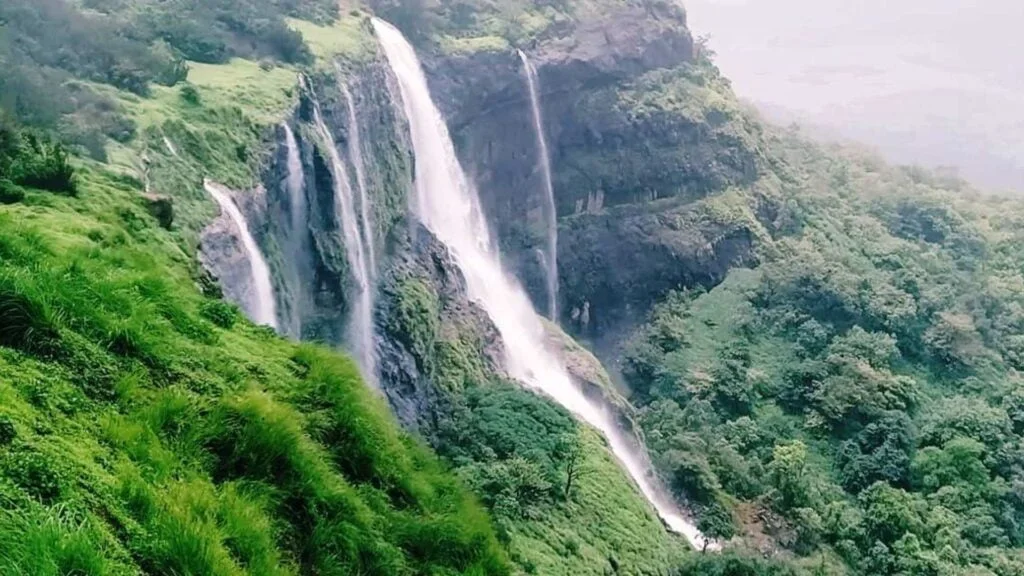
Share this article
Related articles:.
- How to Travel Sustainably in New England: A Visitor's Guide
- Top 12 Sustainable Travel Destinations for Your Bucket List
- Your Guide to Sustainable Travel in Milan - Visiting Italy
- 6 Sustainable Travel Trends for 2023 - Ethical Tourism Tips
- Educate Your Kids While Traveling: 5 Simple Techniques
- A Sustainable Guide to Edinburgh
hosted by greengeeks
CONTACT Authors Submissions
In the spirit of reconciliation Unsustainable Magazine acknowledges the Traditional Custodians of country throughout Australia and their connections to land, sea and community. We pay our respect to the Elders past and present and extend that respect to all Aboriginal and Torres Strait Islander peoples today.
© unsustainable 2024
EcoTourism In India - All You Wanted To Know
What is ecotourism.
Simply put, it is tourism with an ecological conscience. It involves visiting fragile, pristine, and relatively untouched natural areas, with the intention to support conservation efforts. One observes the flora and fauna in their natural environment and cause as little impact as possible. It is often done on a small scale and is a great alternative to the mainstream commercial tourism.
Ecotourism is critical. We have far left behind the years when this was simply ‘important’- today it is critical. Today each one of us must contribute towards nature. Nature has all the resources to satisfy man’s need. Although humans have become increasingly greedy (our ‘needs’ remain the same, our ‘wants’ spiral out of control), we need, we want but no one gives back. No one replenishes what they take.

Let me explain biodiversity in the simplest way- the variety of life on earth that exists where each and every species is given equal importance. Homo Sapiens understand the importance of Gender Equality, they promote equal rights for both sexes and give equal importance to both men and women. We know that genders are interdependent. Men can’t live without women and visa versa. Similarly in an ecosystem, species of plants and animals live with each other. Not to forget man also forms a part of an ecosystem. Why then are different species of plants and animals not afforded the same importance, why is the perception of importance between species so skewed?

This photo was clicked on the outskirts of Bangalore at Hessarghatta lake bed and grassland. The habitat is rich in biodiversity but has suffered extensive damage due to over-enthusiastic travellers, unethical photographers, overgrazing cattle and off-roading and motor biking activities by locals and tourists
Importance of Ecotourism
Various human activities have triggered an increase in the population of invasive species which make the survival of other species difficult. This directly hampers the food chain along with the habitat and leads to vulnerable existences in the ecosystem. Today mother earth is screaming for protection and man is single-handedly responsible for having put her in such a trouble. There is still time to put a full stop to this destruction by those responsible for this vulnerable position we find ourselves in. You might like to question me- why should I conserve. To them I say go- back to school and read your 8th Std science textbooks once more.
Here’s why you must conserve:
- Rain-forests are responsible for a stable climate; heard of global warming? Destruction of rainforests is a major contributor!
- Most resources and raw materials that we use today for medicinal or industrial purpose come from the forests
- The ozone layer is still intact, thanks to forests, else we’d be dying of skin cancer
- Studies say that pollution and temperature rise shall destroy all the coral reefs in the next 20-40 years
- The earth’s biological treasures are thrashed and scientists are calling it the 6th mass extinction event
- Thanks to birds that today we can fly Mumbai-Delhi and overseas in no time. Nature is highly inspirational

The Small Pratincole clicked at Malyadi Bird Sanctuary in Karnataka
The reasons for conservation are infinite. If I sit back and start writing it would take me a lifetime- suffices to say, if we don’t conserve mother nature, mother nature will not sustain us. There are many ways by which you can do your bit for nature. I would want you to focus on your roles towards conservation via eco-tourism, one of the fun ways of conserving and helping nature. The tourism that we are exploring today isn’t about living in luxury resorts, throwing waste on streets and in lakes, travelling in AC cars, feeding wild animals, habitat destruction and disturbing the entire balance of the ecosystem. We are talking about responsible tourism where you trek, cycle, live with local tribes, experience the real jungle, learn and conserve. Promising yourself to do all that it takes to protect nature- that’s what makes you a responsible eco-tourist.
Steps to Become an Ecotourist
So if you are planning on promoting Ecotourism in India and also becoming an ecotourist, here are a few points to remember:
1. Read and collect Info: Read as much as you can about the place you’re travelling to- before you go there. Read about all the wildlife found in that ecosystem, distance to maintain from these animals and activities to do without causing disturbances to that habitat.
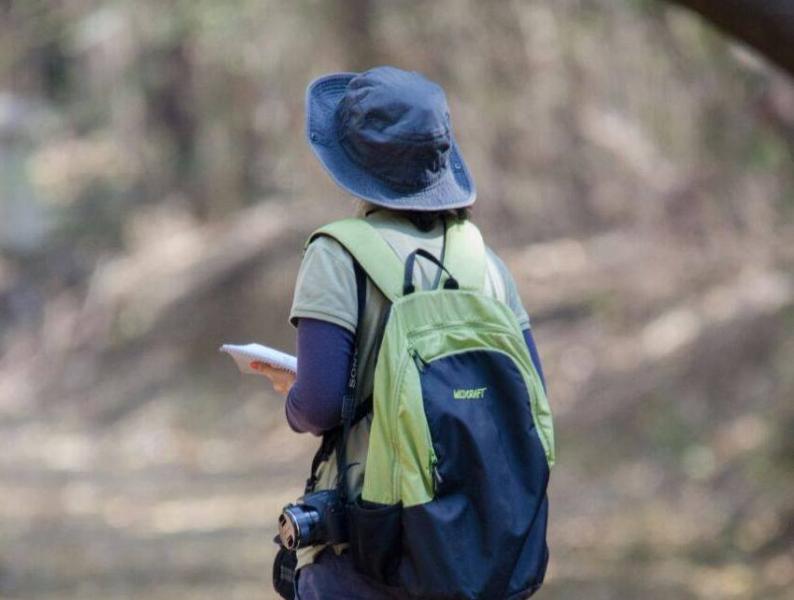
Preparation is key!
2. Don’t encourage ill practices: Clicking pictures with wild animals or throwing stones to see them react, unruly behavior with local communities, feeding animals, off-roading on open spaces and grasslands
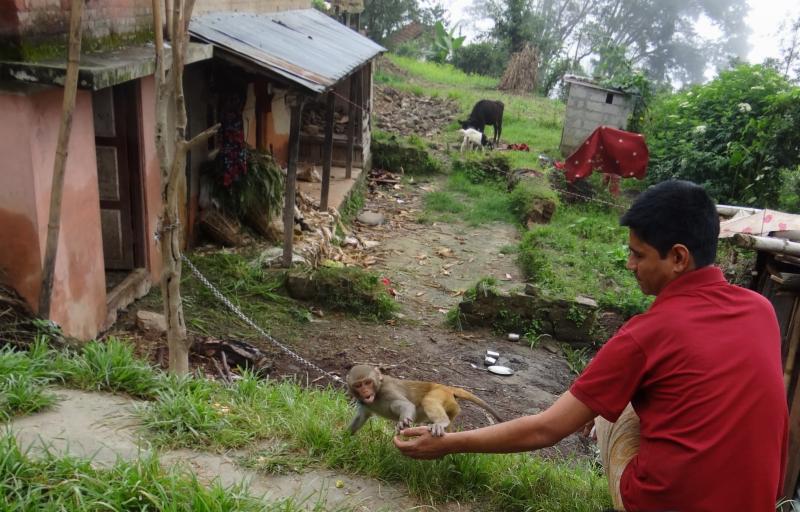
I came across this Rhesus Macaque baby near the Shivapuri National Park in Nepal. I am totally against petting wild animals. Most of these locals end up earning money when people pose with their pets. Encouraging these poor villagers for petting wild animals is a very common mistake done by most travellers who are not yet eco-travellers! 3. Avoid plastic: Avoiding plastic as much as you can is a good practice in day to day life and also a way of promoting ecotourism in India. According to a recent study, 5 trillion pieces of plastic are floating on the world’s ocean weighing about 269,000 tonnes. India ranks 12th on the list of twenty worst marine polluter countries. While on your eco-tour try to reuse your plastic bottle or replace them by steel bottles. Plastic is one the biggest pollution problems in natural spaces and cities.

Plastic ruins the entire ecosystem!
4. Follow the “Leave Only Footprints Approach”: While you explore jungles try and bring back the smallest of your waste. Dispose wherever it is possible to reuse/recycle or is the most appropriate place.

Leave Only Footprints
5. Stay on the trail when you go on treks within the wild: This is beneficial for both you and the wild animals. You can easily find your way back without disturbing the animals or invading in their personal space.

Follow the trail- always!
6. Avoid smoking: This is good for your lungs and the earth’s lungs- the forests. Umpteen times cigarettes thrown in dry deciduous forests have triggered uncontrollable forest fires. Forest fires are the single most important cause of destruction of many species at once. It is imperative that we take all necessary precautions to prevent such avoidable disasters, which are against the very essence of ecotourism in India and all over the world. Also cigarette butts take about two to twenty-five years to biodegrade, if ingested by wildlife animals or marine life it’s often fatal for them.

Cigarette butts are not only notoriously non-biodegradable but also a forest fire hazard!
7. Learn to be ethical in the forests: Photographs are one of the essentials in a traveller’s diary. Learn photography ethics or simply talk to the experts to get an idea of how to click wildlife without disturbing them. This is an important factorwhen it comes to ecotourism in Inda. Here are a few links to help you:
http://www.digicamhelp.com/how-to/nature/wildlife-photography-ethics/
http://focusingonwildlife.com/news/nature-photography-ethics-and-conservation-issues/

I personally like distant photography. This photograph speaks so much about the animal’s habitat. Isn’t it better to capture and witness a Wild Elephant family enjoying at their home. Clicked at Anamalai Tiger reserve in Tamil Nadu
8. Get involved with organisations who promote ecotourism in India: You can choose to work and be an active part of these organisations. I would like to list a few names here- bigger organisations like WWF-India and BNHS run tours and events. Also other private and self funded organisations, one of them being Flock Together- conduct weekend eco-tours based out of Bangalore and Mumbai, learn and have fun.

Organizations which promote ecotourism
9. Make Donations: Everyone must make it a point to donate to conservation efforts! If you do not like ecotourism and wish to travel with all your luxuries and disturb nature- then it’s even more imperative to donate to causes that support conservation. Everyone needs to support the cause. Here are a few links to help you:
https://www.snowleopard.org/shop/index.php?main_page=donate
http://support.wwfindia.org/index.php?link=1&source=WWF_WEB

Donate for a greener tomorrow!
Places for Ecotourism in India
I would now like to take you through a number of ecotourism destinations in India that you can explore once you have decided to become an eco-tourist. India is a land with a huge diversity of dry deserts, snow-clad mountains, rainforests and the grasslands which are perfect for ecotourism.
1. Valparai, Tamil Nadu
The endangered Nilgiri Tahr (A large mammal, a close relative of sheep, shares common ancestors with cattle, horses etc) protected under section I of the Wildlife Protection Act in India can be witnessed grazing here. Valparai is located at 3,500 feet above the sea level on the Anamalai Hills in Tamil Nadu. While you trek down the Shola forests and the lush green tea gardens you might come across Wild Elephants and Great Hornbills. Homestays for tourists is the best option to live and explore the place.

Nilgiri tahr takes a stroll where no human would dare to walk!
2. Chatru and Chandratal lake, Himachal Pradesh
Eco-tourism in India is about visiting the clearest and most pristine lakes in India while at the same time ensuring that it stays like that! You should always reach these spots by foot because that will help keep the water pure. According to locals, this lake situated at a height of 4,300 meters, has immense spiritual significance. The water can be consumed without much purification. The temperature here reaches up to -20 degrees.

The snow-hooded mountains turned upside down by the beauty of Chandratal Lake
3. The Seven Sister States
The North-East of India (The states of Arunachal-Pradesh, Assam, Meghalaya, Tripura, Mizoram, Manipur and Nagaland) is a must-visit on every eco-traveller’s bucket list. These rich tropical rainforests harbour rare and unique species like the Clouded Leopard, One-horned Rhino, Gayal- in the most simple words the wild ox and the only ape found in India-the Hoolock Gibbon. The Hornbill Festival in Nagaland is a once in a lifetime experience, celebrated every year in the first week of December.
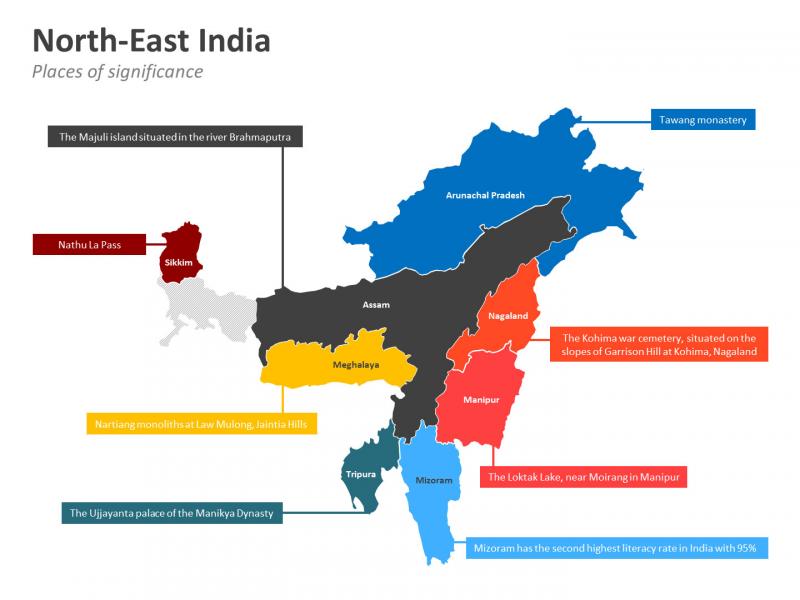
The seven sister states and their relative positions!
4. Kokrebellur near Mysore
This village is a prime example of a harmonious relationship between humans and threatened birds- the Spot Billed Pelican and the Painted Storks. The villagers let these birds occupy trees and roofs of their houses, they say the bird droppings are organic manure for their crops. The villagers here welcome the birds like their daughters. When you reach this place as a traveller you would love to hear incredible stories on sustainable living from kids here.

The Spot-billed pelican takes-off
5. The Crocodile Park, Puducherry
Chennai to Puducherry is a beautiful long drive along the stunning coastline of the Bay of Bengal. Every year Olive-Ridley Turtles come to the shore of Puducherry and lay eggs. A lot of destruction has been caused by tourists visiting these beaches from December to February. Most of these turtles are caught by fishermen and the eggs are consumed by locals. Sometimes mere presence of tourists and touristic activities can unknowingly cause disturbances to this vulnerable species. Ecotourism in India can help in changing the general mindset of the people.

This is what you wouldn’t do because you are now an eco-tourist. You have promised to take all necessary steps for conservation
6. Spiti-Valley
One of the most magnificent valleys in the Himalayas is a home for the near threatened Griffon Vulture. Vultures have suffered 99.9% population decline- most of it owing to habitat destruction and lack of food. The clear blue water of Spiti river is breathtaking and pollution free although at some places you will find traces of human waste disturbing the fragile ecosystem. At Spiti you may come across the elusive snow leopard- if you’re really lucky! There are only 400 odd left in India. The temperature here might go up to -20 degrees. It is advisable to go well prepared to enjoy this picturesque tranquil valley.

On careful observation you might be able to see the river bed through the crystal clear water of Spiti River!
7. Bisle Rainforest, Western Ghats
The western ghats in India are a biodiversity hotspot. Bisle rainforest is a home for numerous snakes, frogs, birds and mammals. Although I must warn you before you head out on an exploration here -the forest here is dense vegetation with fog, cold breeze and rains adding to it. Leeches are among the least creepy creatures that you will come across. Be prepared for facing Wild-Elephants, Leopards or a group of Wild dogs. If this doesn’t excite you enough the most dangerous sloth bear might just be waiting outside your tent. Be careful and recall the first point I had mentioned at the start of this post.

Clouds took over while I was driving through the Bisle forest range
This post was published by Madhushri Mudke
Share this post on social media Facebook Twitter
India Travel Packages
Compare quotes from upto 3 travel agents for free
Srinagar Package for 5 Nights with Sonamarg Excursion
Manali volvo tour package - excursion to solang valley, ladakh 7 days itinerary - summer holiday package with nubra & pangong stay, darjeeling tour package for family: gangtok & kalimpong, sikkim tour package for 7 days - excursion to tsomgo lake, andaman island trip package - snorkeling at elephant beach, related articles.

IRCTC Announces Pay-on-Delivery For Train Tickets

Best Spots to Go Paragliding in India

Travel Tips
Drinking Water Standards In India
Best Places For Scuba Diving In India
Top Places For Hot Air Balloon Ride in India
River Rafting in India - Best Places & Basic Guide
Best Spots for Rock Climbing in India

Experiences
Hot Water Springs in India
12 Highest Motorable Roads In India
Dangerous Roads in India For That Memorable Road Trip
Vaccinations Required While Travelling To India

Hottest Places in India Where The Sun Gets Scorching

Art & Culture
Places To Visit This Independence Day To Experience Patriotism
27 Caves in India That are a Must Visit for a History Buff!

Beaches & Islands
14 Beautiful Islands of India for a Perfect Escape
Indian Visa Requirements - Application Process, Eligibility, Fee & More
Handicrafts of India - A Shopping Guide
Music Festivals In India That Every Music Enthusiast Must Attend!
Travelling With Children In India

Fairs & Festivals
Diwali 2023 : All You Need To Know About Diwali in India
15 Dances of India - Classical Indian Dance Forms and Their States of Origin

Wildlife & Nature
Biodiversity Hotspots in India
List of Best Art Galleries In India - For The Hidden Artist In You!
Bachelor Party in India - Best Party Destinations in India Before Getting Hitched!

Luxury Trip
Luxury Cruises in India for Your next Big Vacation
10 Best Places for Horse Riding in India - Saddle Up!
Souvenirs To Buy from 29 States Of India! - A Shopping Guide
Amazing Places to Celebrate Holi in India in 2024
Skydiving in India: Feel The Feeling of Free Fall
Kite Festivals in India - The Fight Of Colourful Kites Flying Through The Sky
Comments on this post
Browse package collections, india package collections.
India Honeymoon Packages
North East Tour Packages
South India Tour Packages
International Honeymoon Packages
International Tour Packages
Honeymoon Packages
Top Listed Packages
Kerala Munnar Tour Package with Thekkady and Alleppey
Spiti Valley in Summers: 1 Week in Breathtaking Kinnaur & Spiti
Kashmir 8 Days Itinerary: Enthralling Trip with Srinagar Houseboat Stay
Sikkim Tour Package for 5 Days
India Tour Package with Best of Himachal
3 Days Tour Package in India: Char Dham Yatra By Helicopter
Luxury India Honeymoon Tour Package - Tri-City Tour
Sikkim Tour Package for Couple - 8 Nights
5 Days Trip in India: Alleppey, Kovalam & Munnar
Gangtok Itinerary of 7 Nights 8 Days Package
Meghalaya Tour Package 7 Days with Shnongpdeng
Browse Hotel Collections
By hotel type.
Best Private Pool Villas in India
Best Cottages in India
Best Hostels in India
Capsule Hotels in India
Ski Resorts in India
Eco Friendly Resorts in India for Those Who Travel Consciously
Best Heritage Hotels in India for a Royal and Luxurious Stay
By Budget Category
Most Expensive Hotels in India for a Royal Stay
Best Luxury Hotels in India
Best Luxury Resorts in India
By Star Category
Best 5-Star Hotels in India
For Special Purposes
Resorts & Homestays to Work from Mountains in India
Best Yoga Retreats in India
Beautiful Treehouses in India Perfect for a Quick Staycation
Best Beach Resorts in India
Most Romantic Resorts in India

Top Places in India

Get the best offers on Travel Packages
Compare package quotes from top travel agents
Compare upto 3 quotes for free
- India (+91)
*Final prices will be shared by our partner agents based on your requirements.
Log in to your account
Welcome to holidify.
Forget Password?
Share this page

19 Best Eco Friendly Destinations in India
Lately in India as all over the world eco-tourism is the new buzzword. Eco-friendly destinations in India are all about being responsible travelers and giving back, not just to nature but to the entire ecosystem.
Eco-tourism is all about giving developing a friendship with nature, getting acquainted with the concept of responsible travel, and promoting the concept of sustainable living among the locals.
It is also a way of seeking the various ways and means of conserving nature and biodiversity. Eco-tourism is not just about enjoying nature but ensuring her participation in it along with those dependent on it.
India, blessed with natural biodiversity, makes for a great eco-friendly destination. The diversity in its natural landscape makes it an immensely friendly eco-tourist destination. Whether it’s the backwaters of Kerala, a quaint village in Uttarakhand, or a National Park in Madhya Pradesh, every destination provides a wonderful experience while leaving you with a deep appreciation of nature.
Why Eco- Tourism in India?
As a developing nation, there’s much diversity and disparities in India as far as development goes. Tourism adds a lot of stress to both the local economy and culture as well as the environment. Many off-beat places in India that were so 10-15 years ago are now very well-developed tourist places because of how information travels these days: thanks to travel bloggers and social media.
However, this popularity is also leading to many adverse impacts when it comes to sustaining the local environment as well as the culture & economy. Seeing the countryside littered with plastic waste, mountain trails becoming noisy, accommodations getting pricier, and locals becoming more commercial than friendly is the bane of rampant tourism which quite a lot of us are now getting used to. Eco Tourism offers a way to preserve the local ethos and culture while providing the locals with means to sustainable development alternatives while preserving what was pristine in the first place.
How to be an Eco-friendly Traveler
- Be respectful of local culture
- Don’t litter, especially plastic
- Prefer homestays over hotels
- Don’t disturb nature or the trails
- Travel in small groups
- Immerse yourself in local activities and culture
- Prefer local consumption of foods and other necessities to support the local economy
- Try to spend long-term instead of weekend breaks
How Ecotourism Helps
- Minimize physical, social, behavioral, and psychological impacts
- Build environmental and cultural awareness and generate respect
- Provide positive experiences for both visitors and the local populace
- Provide direct financial benefits for natural and ecological conservation
- Generate financial benefits for both local people as well as industry
- Deliver unique experiences to travelers that help raise sensitivity to the local community
- Recognize and work for the empowerment of local values and beliefs and help empower them
- Infrastructure for hospitality is created to be as low an impact on ecology as possible
Eco Tourism in India
India, blessed with abundant natural diversity, makes for a great eco-tourist destination in the world. The diversity in its natural landscape makes it an immensely friendly eco-tourist destination. Whether it’s the backwaters of Kerala, a quaint village in Uttarakhand, the virgin woods and hills of North East, tribes of Chhattisgarh, or a National Park in Madhya Pradesh, many destinations in India provide a wonderful experience while leaving you with a deep appreciation of nature as well as local ethos and culture. You also become acquainted with several local cultures, as eco-tourism is as much about community living as nature preservation.
Top 19 Eco-Friendly Destinations in India
By traveling to eco-friendly destinations in India, you also become acquainted with several local cultures, as eco-tourism is as much about community living as nature preservation. If you are interested in knowing more about it, then here are the 19 eco-friendly destinations in India in no particular order you should travel to.
- Khangchendzonga National Park, Sikkim
- Lahaul Spiti, Himachal Pradesh
- Khonoma Village, Nagaland
- Thenmala, Kerala
- Mawlynnong Village, Meghalaya
- Coorg, Karnataka
- Sitlakhet, Uttarakhand
- Kanha National Park, Madhya Pradesh
- Pragpur, Himachal Pradesh
- Melghat Tiger Reserve, Maharashtra
- West Bengal
- Uttar Pradesh
- Chhattisgarh
1. Khangchendzonga National Park, Sikkim
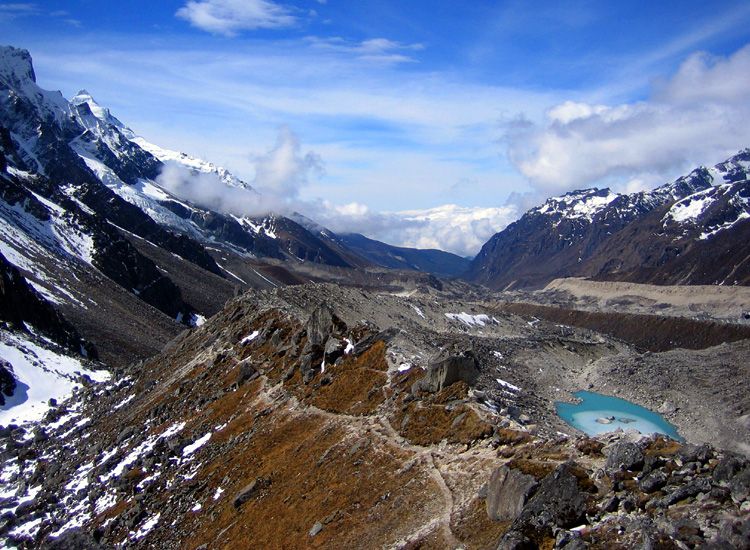
Khangchendzonga National Park covers almost 30% of the total land area of Sikkim in northeast India. It was given the status of a UNESCO World Heritage Site list in 2016. Its natural beauty escapes the description of words, while its landscape is marked by lakes, glaciers, rivers, valleys, plains, and caves. The park is home to a variety of mammal species, some of which include snow leopards, musk deer, red pandas, and Himalayan blue sheep. Almost half of India’s bird species and one-third of the country’s flowering plants are found within this park. Mt. Khangchendzonga also holds a deep spiritual significance for the locals. Taking a trek in this park is the best way of exploring its ecosystem.
Explore Packages to Plan your Trip to Sikkim
Back to Top
2. Lahaul Spiti, Himachal Pradesh
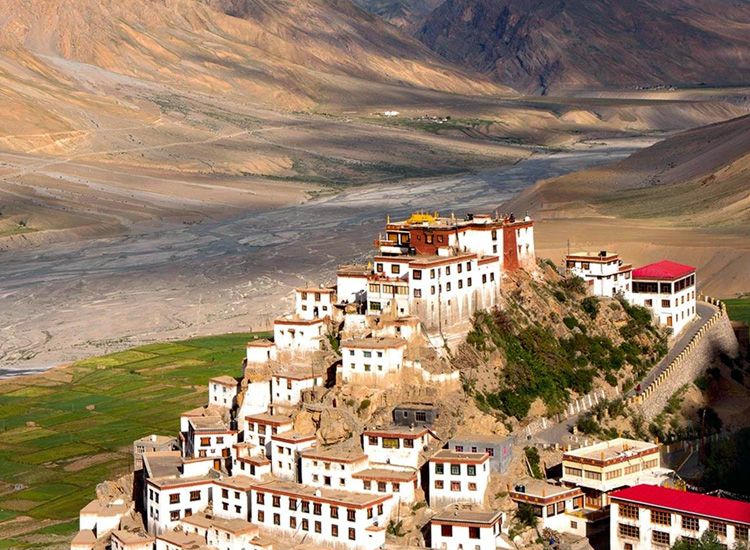
One of the best places for ecotourism in India is Lahaul Spiti in Himachal Pradesh. Its mostly craggy terrain and extreme climate, where temperatures are known to fall beyond minus 30 ° C, provide very few opportunities to earn a livelihood. However, there are a few organizations that are enthusiastic in their endeavor to save the ecosystem through the encouragement of sustainable tourism in this region. Adventure here means trekking through the Pin Parvati Pass, biking through difficult Himalayan trails, and enjoying a spiritual experience in one of many meditation centers. All throughout their stay, however, visitors are requested to cause minimum impact on the Spiti Valley’s ecosystem.
Explore Packages to Plan your Trip to Spiti

3. Khonoma Village, Nagaland
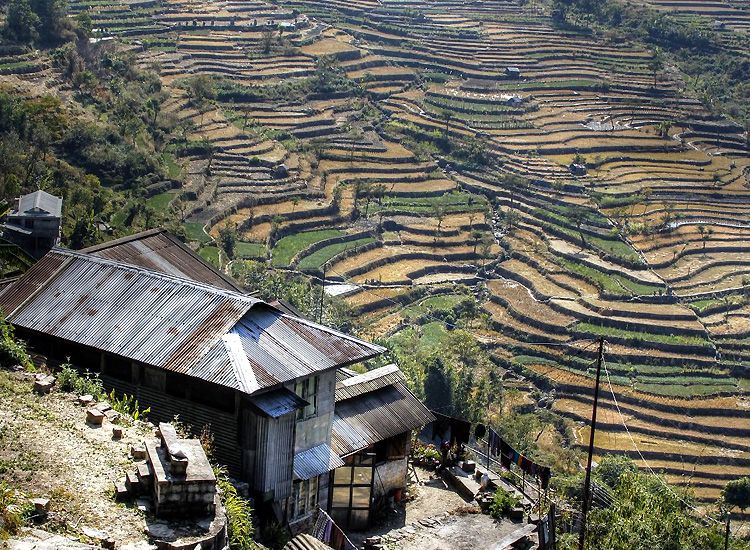
Khonoma Village lies about 20km from Kohima, itself famous for hosting the great Hornbill Festival. The village, which is also referred to as Khwunoria, is believed to be around 700yrs old. Over the last decade, Angamis, one of Nagaland’s tribes, have made enormous progress in strengthening their natural resource management, conflict resolution, village administration, and other forms of development. Biodiversity and wildlife are also given special emphasis.
Visitors to the village are left pleasantly surprised at the various kinds of activities the villagers seem to be absorbed in. Besides, Khonoma is the only village in India that boasts a global citizenry along with a self-identity. September 1 is celebrated every year as the village’s birthday. Another interesting fact is that the Khonoma Nature Conservation and Tragopan Sanctuary (KNCTS), which was set up in the year 1998, is the private property of the people of Khonoma Village.
Explore Packages to Plan your Trip to Nagaland
4. Thenmala, Kerala

Thenmala, one of the lesser explored destinations in India, is India’s first eco-tourism destination in India. Its 10 eco-tourism spots cover the hill ranges of Thiruvananthapuram , Pathanamthitta, and Kollam districts. Thenmala means “honey hill” in the local language, and quite appropriately, it’s a major exporter of high-quality honey from this area. Its terrain, dotted with rubber, forests, and tree plantations, was selected by the World Tourism Organization, as one of the most premier eco-friendly projects in the world.
A visit to Thenmala allows you to enjoy various kinds of activities. From boat rides to leisurely walks to adventure sports like rock climbing and mountain biking, there are a lot of options to keep you entertained. Visiting the Thenmala Dam is a favorite for tourists. In the deep, dark woods of Thenmala, there are tree huts which allow you to spend an evening deep inside the forest. One of the highlights of your trip is a boat ride to the wonderful Shendurney Wildlife Sanctuary.
[ Explore Packages to Plan your Trip to Kerala ]
5. Mawlynnong Village, Meghalaya
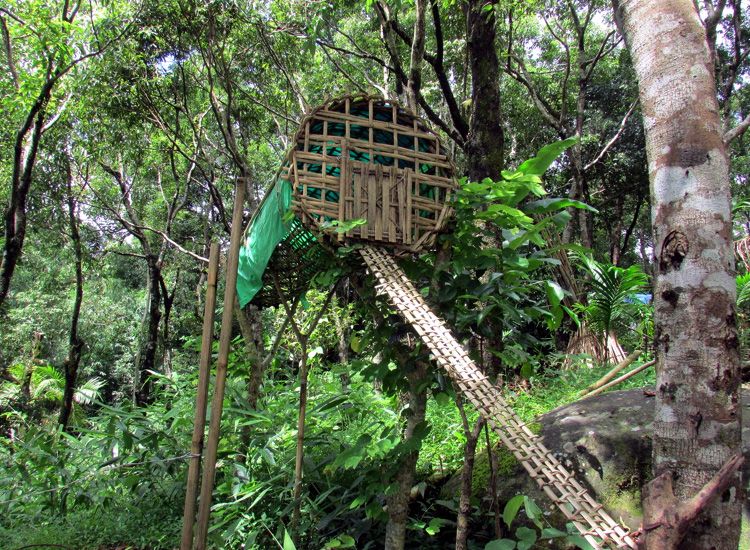
Mawlynnong Village holds the claim of being one of the cleanest village in India. Situated about 90km from Shillong along the Indo-Bangla border, its home to several natural attractions, from the living root bridge to the eccentric phenomenon of one boulder balancing on top of another. Agriculture is the main occupation of the people and they mostly grow betel nut.
An impressing sight in the village is a dustbin made of bamboo which ensures that dirt and filth are collected properly, instead of being littered and strewn on the streets. Another enormous achievement of this village of 100% literacy, is the complete banning of plastic. Mawlynnong Village is drawing a large number of tourists from across the globe. The rest houses, constructed from bamboo, are very hospitable and inviting. Visiting the village promises to be an enriching experience, in terms of eco-tourism.
Read about Asia’s Cleanest Village “Mawlynnong” .
Explore Packages to Plan your Trip to Meghalaya
6. Coorg, Karnataka
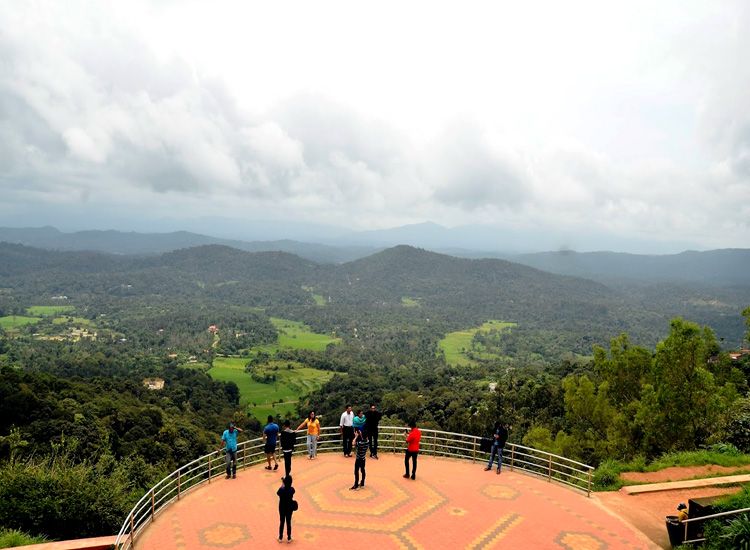
Coorg, located on the Western Ghats of Karnataka , is one of the best places to visit in India. It boasts well-preserved biodiversity and is blessed with abundant flora and fauna. Dressed in old-world charm, dreamy-looking hills, coffee, and cardamom plantations, it is the perfect eco-tourist destination. The hospitality of the people belonging to the Kodava community will win you over, as will the picturesque beauty of the place. After exploring and absorbing the beauty of Coorg , you should check out other attractions like Abbey Falls. Its cascading water resembles a brilliantly painted curtain. Eco-tourism in Coorg is about admiring the various aspects of its natural beauty, exploring its coffee and cardamom plantations, and learning about the unique history of the Kodava community.
Read about Initiatives to Save Ecologically Fragile Coorg .
7. Sitlakhet, Uttarakhand
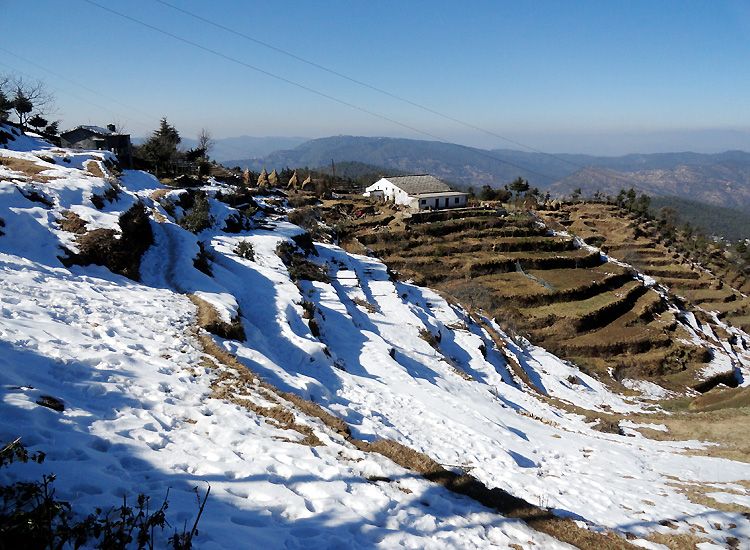
Looking for the best summer destinations in India ? Head to Sitlakhet in Uttarakhand. Visiting this place lets you leave the hustle-bustle of city life behind you. Situated in the district of Almora, Sitlakhet is one of the best offbeat destinations for eco-tourism in the Kumaon Himalayas.
In terms of eco-tourism, this place has much to offer. Panoramic views, opportunities for hiking, going for nature walks, appreciating the wildlife, and enjoying mountain biking, among others. In the morning and evening, one can enjoy 200-degree views of the Garhwal and Kumaon Himalayas. Hiking to the Syahi Devi Temple is another enjoyable activity as it takes you through the dense pine forests and tiny hamlets. Further, you can also enjoy nature walks and come closer to nature, because that’s the entire point of eco-tourism, isn’t it?
8. Kanha National Park, Madhya Pradesh
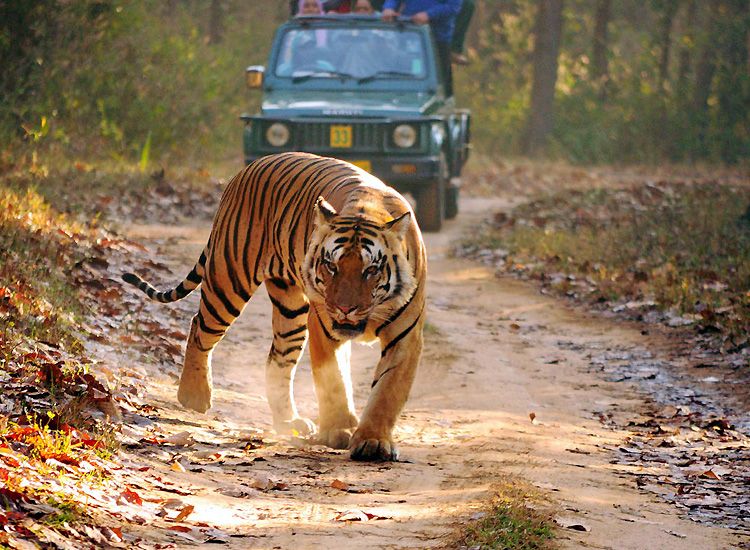
If you are planning a tour to India, then make it a point to visit Kanha National Park in Madhya Pradesh . In this region, the Royal Bengal Tiger is found in large numbers. The park is renowned for saving the Barasingha from extinction, besides enjoying the reputation of being one of the best-managed parks in Asia. Besides these, it’s also a part of Project Tiger.
The park is home to over 350 species of birds along with various kinds of flora. A safari in this park is a wonderful experience as you get to explore meadows, huge plateaus, and valleys. It’s your lucky day here when you spot a Barasingha or catch a glimpse of a tiger in the jungle. Ever wondered how sindoor (vermillion) is made? From the Sindoor Tree, which is found in abundance here. You also come across sites related to mythology, sites such as Shravan Tal, where Shravan Kumar, the devoted son of Ramayana, came to fill water for his parents.
9. Pragpur, Himachal Pradesh
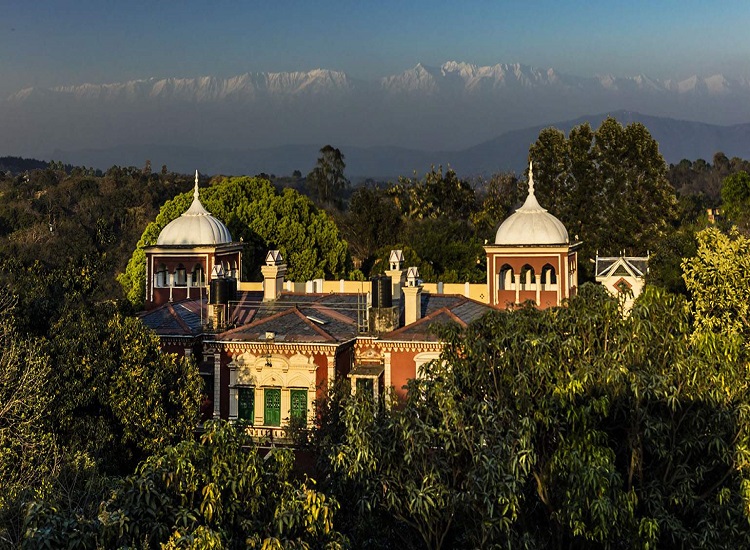
If you are planning to visit Himachal Pradesh, then June is the best time to do it. Once in Himachal, head for Pragpur, India’s first heritage village. The architectural style of the houses in this village reminds you of a past era. The village, named in honor of a princess from the Jaswan royal family, acquired the status of a heritage village in December 2007.
Among the beautiful mud-plastered and slate-roofed houses, you find the presence of exquisite havelis, mansions, and Italianate buildings. Ask the locals though, and they will tell you of the mansions being 300yrs old. In this heritage village exist heritage buildings, such as the Judges Court. Of course, there are tales of villagers to be enjoyed and their lifestyle to be experienced. Pragpur is another example of how enjoyable and educative ecotourism can be.
[ Explore Customized Himachal Pradesh Tour Packages ]
10. Melghat Tiger Reserve, Maharashtra
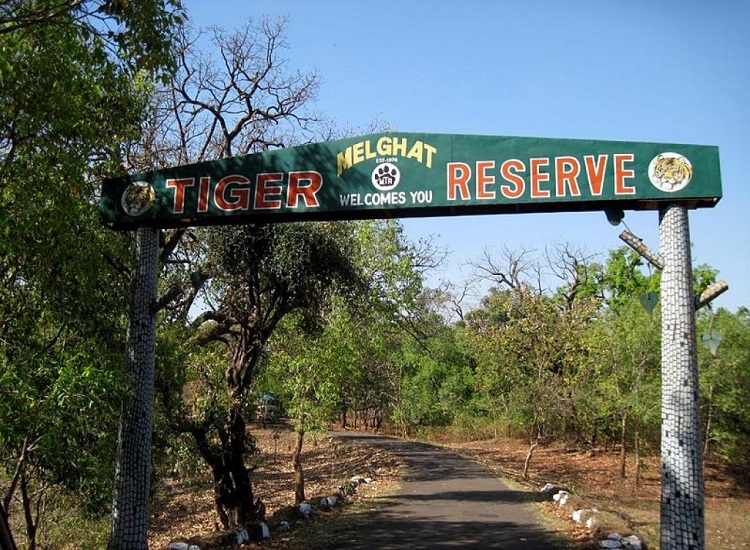
Located in the northern part of Amravati district, the Melghat Tiger Reserve is a great eco-friendly destination which you should visit during your trip to Maharashtra. Spread over 3,600sq.km, this tiger reserve covers the Gugamal National Park and Melghat Wildlife Sanctuary, along with the rich deciduous reserve forests in the neighboring areas.
The sight of the leisurely flowing Sipna River through the dry deciduous forest is very pleasing and allows for some amazing photography. Observing the tribal communities of Korkus and Gaolis and their lifestyles promises to be a unique experience, and sheds light on the harmonious existence of humans with nature.
It gets even better when you get to walk alongside the Sipna River with a Korku adivasi as he hunts for fish using innovative hunting techniques. In the forests of Melghat Tiger Reserve, you can also spot handsome crested serpent eagles and crested hawk eagles. However, nothing beats the sight of the racket-tailed drongo, with its amazing talent for imitating over 15 types of birds.
Read about Matheran, Asia’s Only Car-Free Hill Station.
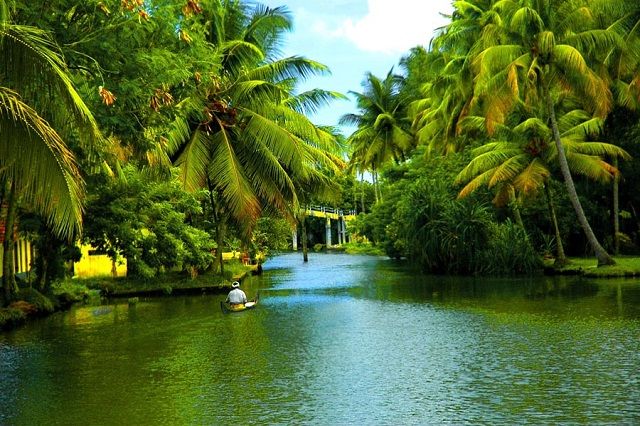
Referred to as ‘god’s own country,’ Kerala is blessed with immense biodiversity. The Western Ghats and Arabian Sea as well as the tropical location geographically makes, Kerala one of the most attractive eco-friendly destinations in India. No wonder National Geographic Traveller mentioned Kerala as one of the ‘Must Visit Places in a Lifetime.’
Kerala is a popular beach destination in India and is also renowned for India’s ancient science of healing Ayurveda. To be honest Kerala is one of the major tourist destinations in India but despite its fair share of tourism, Kerala is still one of the best destinations for eco-tourism in India.
Thenmala, one of the lesser explored destinations in Kerala, is India’s first eco-tourism destination in India. Its 10 eco-tourism spots cover the hill ranges of Thiruvananthapuram, Pathanamthitta, and Kollam districts. Thenmala was handpicked by the World Tourism Organization, as the foremost eco-tourism project in the world.
A visit to the ‘honey hill’ offers a lot of opportunities to travel responsibly, experience nature, and to engage with locals at both cultural and economic levels/. From boat rides to leisurely walks to adventure sports like rock climbing and mountain biking, there are a lot of options to keep you engaged with the community and ecosystem. A boat ride in the Shendurney Wildlife Sanctuary is one of the major highlights of the trip eco-tourism in Thenmala.
Alleppey renowned for its backwaters, Kumbalangi, Thommankuthu, Silent Valley National Park, Periyar National Park, Gavi, and Munnar are some of the major ecotourism destinations down South in India to stay in nature’s embrace and have mental and spiritually uplifting travel experiences.
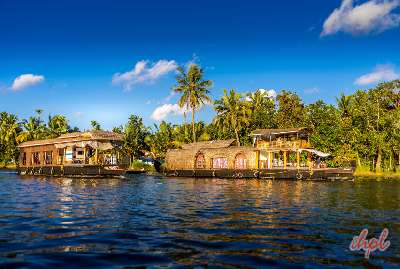
12. West Bengal
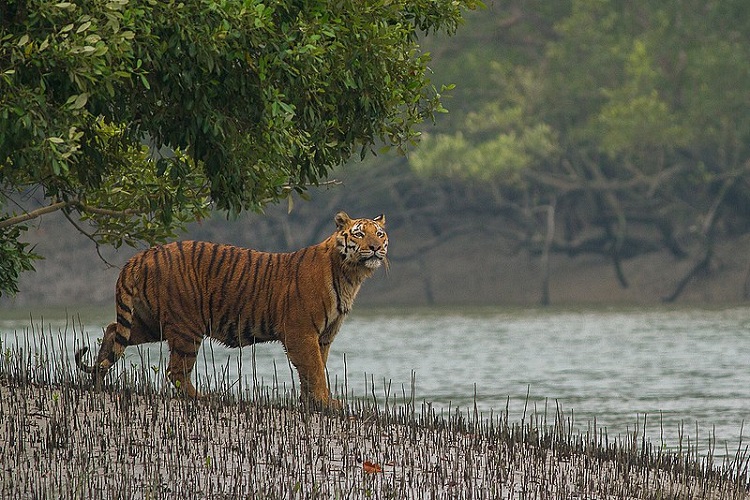
West Bengal surprisingly is one of the leading destinations for eco-friendly destinations in India. With its coasts, hills, tea gardens, and forests, there is a lot of focus and effort put in to promote ecotourism in West Bengal.
Sundarbans National Park was perhaps the earliest such example. It is a bio-diverse place stretching across India and Bangladesh with a healthy population of Royal Bengal Tigers. Sabujdwip, the river banks of Teesta and the Hooghly as well as the Ganges are notified ecotourism destinations as well with a lot of local and cultural experiences to offer. Then to uncover the rich heritage and history of Bengal, places like Bishnupur, Murshidabad, Malda, Krishnagar, Nabadwip, and Birbhum are especially promoted by the state government for eco-tourism in West Bengal.
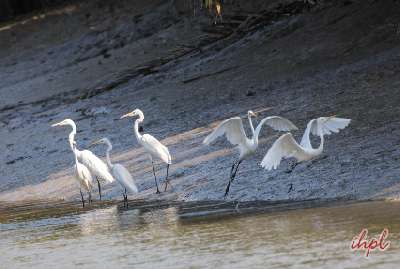
Orissa is one of the most culturally vibrant and yet one of the lesser developed states in India. There are several tribes that live in this coastal state. They have kept intact their tribal practices and culture which offer unique cultural travel experiences to travelers not just from India but from across the globe.
The tourism ministry of Orissa has especially set up an eco-tourism department to promote and sustain the local culture, economy, and nature of these places while also increasing tourism-related activities. Orissa is dotted with jungles, hills, lakes, and wildlife. Camping, homestays, tribal experiences, and nature resorts are some of the various experiences through which ecotourism in Orissa is being developed in a sustainable way.
Major places where you could get involved in ecotourism in Orissa include Chillika Lake, Debrigarh Nature Camp, Bhittarkanika Nature Camps, Simplipal, and Satkotla Nature Camps. The range of activities includes adventure sports like boating, biking, treks, etc. as well as tribal dances and sports activities.
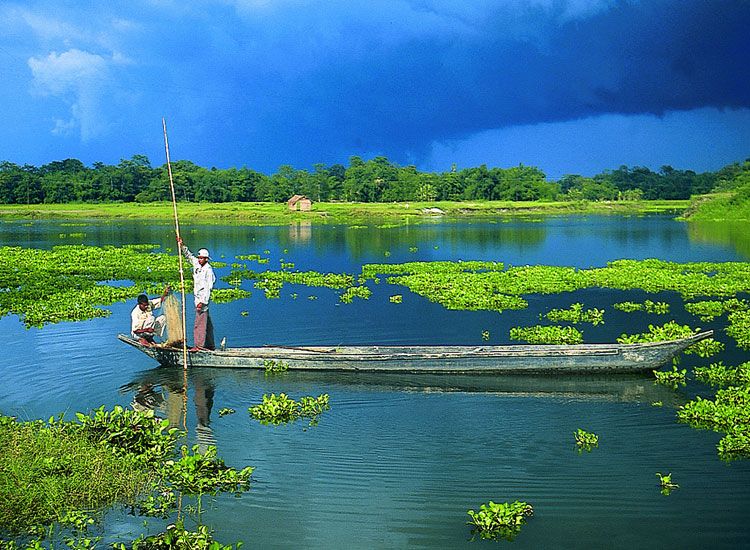
Assam in North East India is one of the prime eco-tourism destinations in India. With its immense geographical diversity and vivid wildlife, Assam attracts a lot of nature and wildlife enthusiasts from around the globe. The Great single-horned rhinos and the elephants are the big two of the wildlife in Assam. Then Kaziranga National Park is home to a significant population of Royal Bengal Tigers as well besides over 200 species of fauna.
Assam is also a culturally teeming place with various tribes and cultural experiences. Several local fests and dance forms are major highlights of any eco-tourism activities in Assam. The mighty Brahmaputra River also allows several river cruise options which offer a glimpse into the local culture and tribal diversity and experience the natural and ecological beauty of Assam. The most eco-diverse places in Assam include Kaziranga, Majuli , Manas, Orang, Nameri, Kamakhya, Tezpur, Nambor, and Namdhapa.
15. Uttar Pradesh
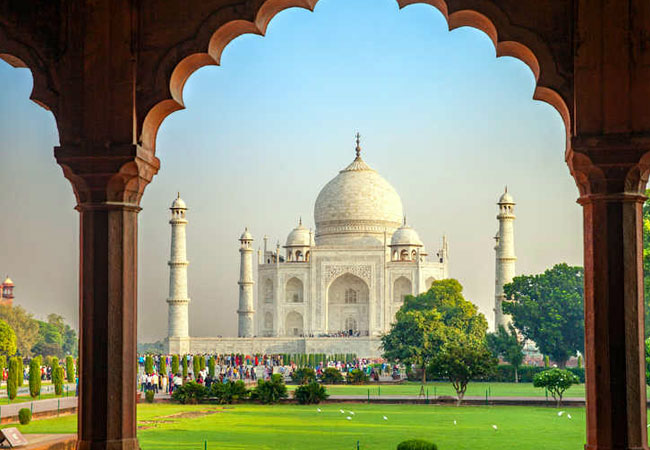
Although the Taj Mahal in Agra is claim to its global fame when it comes to tourism in Uttar Pradesh, the state government has taken quite some initiatives to promote ecotourism in this largest Indian state. It has especially earmarked a few wildlife zones for promoting eco-tourism in India.
Dudhwa National Park with its high tiger density, Katarniya Ghat National Park with its crocodile and tortoise population, and Motipur and Chuka National Park have been declared eco-tourism hotspots in Uttar Pradesh . You can experience a range of local activities and conservation efforts while getting to know the local culture and natural diversity of these places. The fact that these destinations remain off the chart of tourists for the most part of the year makes them ideal places for ecotourism in Uttar Pradesh.
16. Chhattisgarh
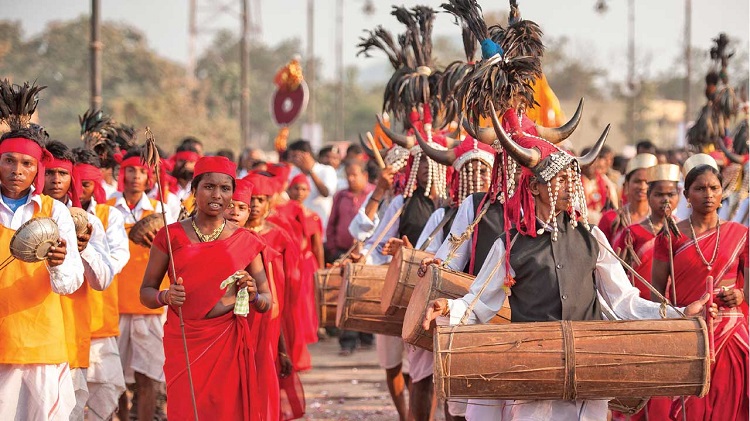
About a year back, India got its first tribal circuit in Chhattisgarh. Inaugurated by the state’s tourism minister, the circuit will include Jashpur, Kunkuri, Mainpat, Kamleshpur, Maheshpur, Kurdar, Sarodadadar, Gangrel, Kondagaon, Nathiya Nawagaon, Jagdalpur, Chitrakoot, and Tirthgarh. The fact that Chhatisgarh is renowned for its various tribes, natural abundance, and rich culture makes it one of the major ecotourism destinations in India.
Several projects and a significant budget has been approved to improve and develop ecotourism in Chhatisgarh with special efforts to sustain the local tribes and their culture and economy. About 44% of the area of the state falls under the forest category. Bilaspur, Raipur, and Jagdalpur are developed specifically conserved and developed to promote ecotourism activities in Chhatisgarh. Some of the main ecotourism destinations in Chhatisgarh include Chitrakool, Kanger Valley, Nanadanvan, and Sitanadi among others.
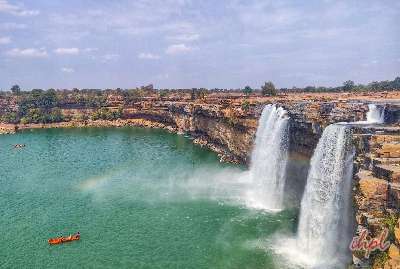
Made up of and bound by mountains, Ladakh is India’s last Shangri La. Although in recent years, this destination in India has become quite popular among tourists, Leh Ladakh is still one of the most unspoiled travel destinations in India due to its connectivity from the rest of the country and its challenging landscape.
The fact that it is mostly located at a mean altitude of above 10,000 feet is the first deterrent when you are planning a trip to Ladakh. What doesn’t help is that for the most part of the year, Leh Ladakh remains cut off from the rest of India by road as the Rohtang Pass in Manali and Zoji La Pass near Sonamarg in Kashmir becomes inoperable by road due to annual snowfall from June till October every year. The Atal Tunnel in Rohtang was supposed to make Ladakh connected by road throughout the year but what they don’t tell you is that Kunzum Pass towards Spiti Valley and Baralacha La and Taglang La towards Leh are equally high passes and they will remain inoperable too for the most part of the year.
Coming back to eco-tourism, well Ladakh is definitely a jewel and we all need to strive to keep it as pristine and uncorrupted by modernity as we could. It’s the enviable land of Tibetan Buddhism. Even road signs tell you in advance that ‘don’t be a Gama, in the land of Lamas,’ the unaffected smiles and ‘juley’ greetings even as you ride down the road are enough to fill you with joy and amazement.
Traveling to Ladakh is definitely one of the must things one could have up their travel bucket list. The azure lakes of Tso Mori Ri and Pangong Tso are mesmerizing to behold, and so are the golden snow-laden and bare Himalayan mountainscape as the sun’s rays pierce the sky and form a golden canopy up top. The weather condition changes as dramatically as the sun’s position in the sky but for the most part of the year, the temperature remains mostly freezing especially as the sun bids adieu to the day.
Eco-tourism is the buzzword when it comes to tourism and surprisingly, this place is yet pristine thanks to the tribes of responsible travelers who form the bulk of visitors to this remote country.
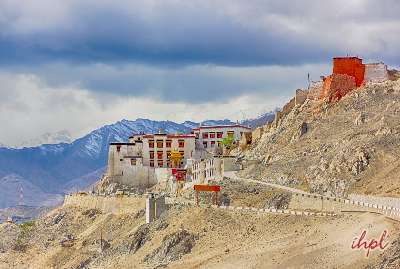
Sikkim happens to be the first declared ‘Organic State’ in India. Lying in the North East region of India, Sikkim is nowadays becoming one of the most sought-after tourist destinations in India. With its unspoiled hills, salubrious weather conditions for the most part of the year, and culturally vibrant tribes and traditions, Sikkim has generated a lot of buzz amidst the savvy class of discerning travelers around the world.
Nestled in the Himalayas and wrapped in nature’s abundance, Sikkim is one of the mainstays of ecotourism in India. Recently the Khangchendzonga National Park was inscribed as one of the Natural Heritage Sites in the World by UNESCO for its immense biodiversity. 48% of this state economy is dependent on tourism or the tertiary sector and that is a reason why the authorities have taken great pains to promote ecotourism in Sikkim to keep intact the local culture and economy by giving special attention to creating and strengthening community-based tourism activities.
With the significant rise in tourists to Sikkim, some of the zones like Lingdok-Pangthang, Okharey, Kitam, and East Pendam are notified as ecotourism destinations in Sikkim. Several conclaves and societies have been formed and organized to keep all state holders informed and educated about the need of promoting ecotourism in the region. In Lachen, even the sale of the packaged plastic water bottle was banned a few years ago and waste management practices are constantly upgraded so that nature and ecology don’t get adversely affected.
To sum it up, over 39 species of Rhododendron flowers, 558 species of Orchids, almost 600 species of bird species, and more than over 2000 species of moths and 658 species of butterflies along with approx. 4000 species of flowers & abundant medicinal herbs and plants make Sikkim a unique destination for Ecotourism.
Sikkim is especially popular among couples, honeymooners as well as people looking to explore mountains and Buddhist culture. With home to numerous monasteries, lakes, hills, trekking trails, and numerous adventure sports activities, Sikkim is one of the major travel destinations for offbeat and adventure travelers in India.
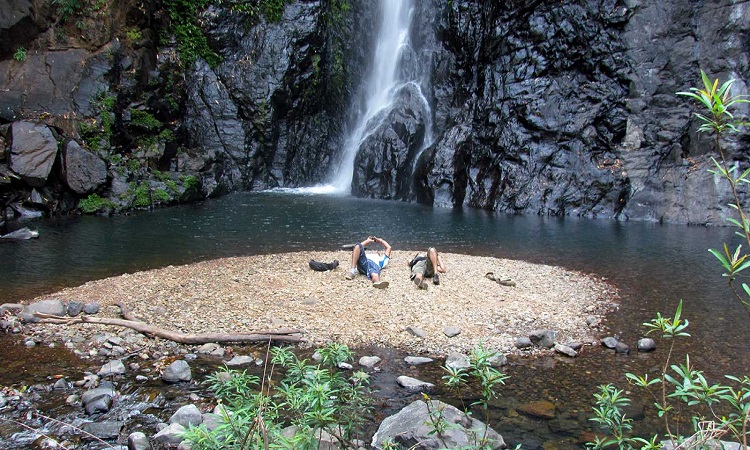
Thanks to the Western Ghats, Goa is blessed with diverse animal and plant life. In fact, there are over 1500 species of flora, 40 species of mammals, and over 60 reptilian species in the state of Goa. More than 10% of the geographical area of Goa is declared a wildlife reserve.
Although popular due to its beaches, adventure sports activities, river cruises, and vibrant nightlife, Goa is also developed as a major ecotourism destination in India.
Besides world-class hotels and resorts, several farms, plantations, and wildlife reserves in Goa form the backbone of ecotourism in Goa. Salim Ali Bird Sanctuary, Bondla Wildlife Sanctuary, and Cotigao Wildlife Sanctuary are major ecotourism destinations that are developed by the state to promote ecotourism and create sustainable tourism models in this highly commercialized state.
Besides, there are several waterfalls, lakes, and springs in Goa as well which still remain off the beaten path destination. Village tourism and other cultural activities are also something which are increasingly coming under the purview of responsible tourism in Goa .
One of the major sites promoting ecotourism in Goa is the ‘Jungle Site.’ Sprawling over 240 sq. km in Bhagwan Mahavir Wildlife Sanctuary and stretching as far as the ocean and covering the Dudhsagar Waterfalls . The most popular ecotourism camp set up by them is the ‘Jungle Book’ which is home to over 70 eco-cottages. Responsible travellers could embark on jungle safaris, spend a day at ecological training and lessons spend time at plantations give bathing sessions to elephants and stay at eco-resorts far from the din of the city and bustling beaches of Goa .

- 11 Best Hill Stations in Maharashtra
- 10 Famous Treks in Maharashtra
Nikhil Chandra
Digital marketer by profession and a keen traveler, amateur photographer and avid book reader by passion, Nikhil Chandra’s writing and photographs have been published in various travel magazines and blogs including Travel & Leisure, Seat 61, Mode&Tendances, Oryx Magazine (Qatar air inflight magazine) among others. Holding a masters in Literature and Marketing Management, Nikhil Chandra applies his educational qualifications, professional experience, and wander wisdom to write on a range of topics that includes search engine, PPC, content marketing, photography tips and travel. He summarizes himself succinctly as a writer here and there and on this and that.
Related Posts

Best Places to Visit in Maharashtra in May
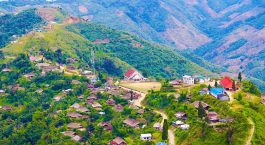
Best Places to Visit in Nagaland in April

Best Places To Visit in Arunachal Pradesh in April
- Adults Ages 13 or above - +
- Children Ages 2–12 - +
- Partners and Fundings
- events & news
- green hotels
- who’s talking about us
Sustainable Travel In India

Travel, they say is a way of life, beneficial , liberating, rejuvenating, enlightening and the list of expressions is exhaustive. There is something for everyone when they travel. If these experiences have so much impact on our lives, this is even more true for sustainable travel . In this article, Rahul Chadha, adventure traveller and Indian writer takes stock of the new trends, challenges, and possibilities of sustainable travel in India.
Evolving & Breaking the Old Barriers
A number of different travelling styles have taken entry into the English lexicon, like Workation , Staycation , Backpacking, Solo Travel etc. There is a whole clan of youngsters who are trying to break the conventional career path and treading into new lesser travelled pastures.
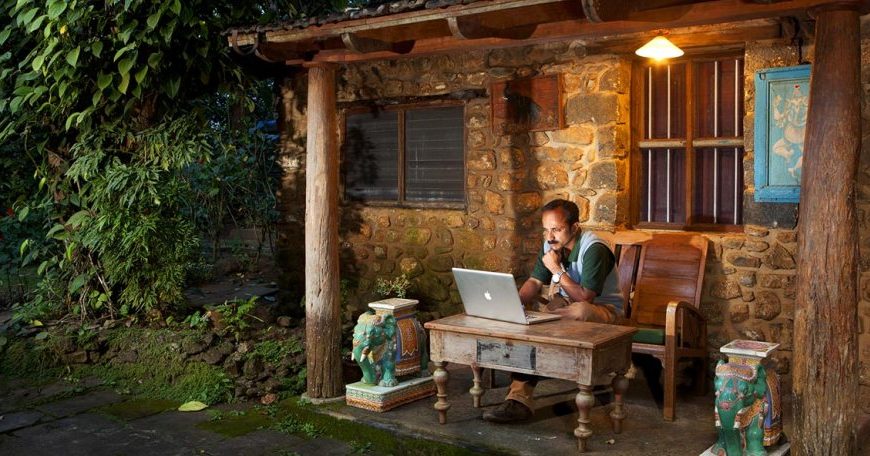
There are so many professionals who are either opting to travel and work from different destinations via Home Stays, Hostels or Service Apartments. And, there are also the likes who have quit their cushy jobs and have taken a sabbatical while choosing a staycation to discover themselves and invest their time to learn a new skill set and decide from where would they want to restart their career.
The Challenges
Indian Traveller’s carbon footprint is the fourth-largest in the world as per a study conducted in 2018 and ironically tourism industry has a disastrous impact on the environment . Rampant construction of hotels at the cost of the local habitat and the pollution caused by their operations has been a major concern.

The dichotomy that we are facing is that on one hand travel industry is generating employment and growth opportunities for the youth and local communities and on the other hand, all this mindless growth is happening at the cost of killing the same habitat on which they are thriving.
A New Trend
The travel industry is evolving and so does the travellers and there is a silver lining. The latest trend of sustainable community hostels and the eco stay has given new hope and also a solution to the challenges that we are facing.
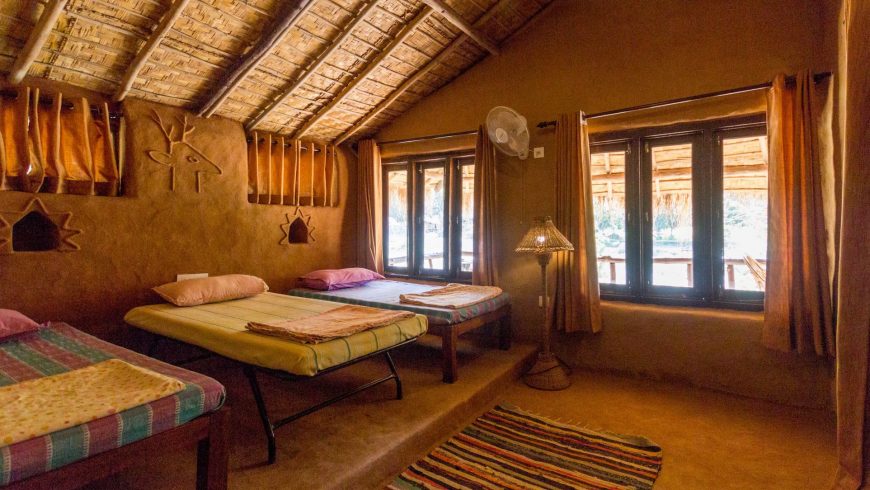
These community spaces and eco-friendly accommodations in India are either made of mud, stone, or wood thus promoting local architecture. The food served in these eco spaces is cooked from the local farm produce and is more hygienic and healthy. They encourage organic farming and takes corrective measures like solar power panels to generate electricity,rainwater harvesting are a few of the measures that are being practiced to contain the pollution.
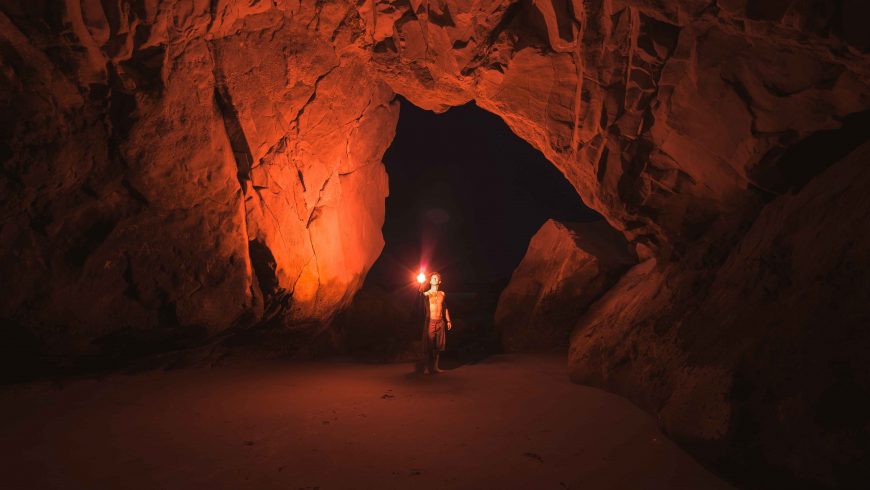
These eco spaces are either being managed by locals or young professionals who are sensitive towards the environment. They aspire to create a space where people from different walks of life can come together and contribute to the cause of sustainable development and save the local flora and fauna and imbibe the culture and practices of the locals.
Travel For the Environment
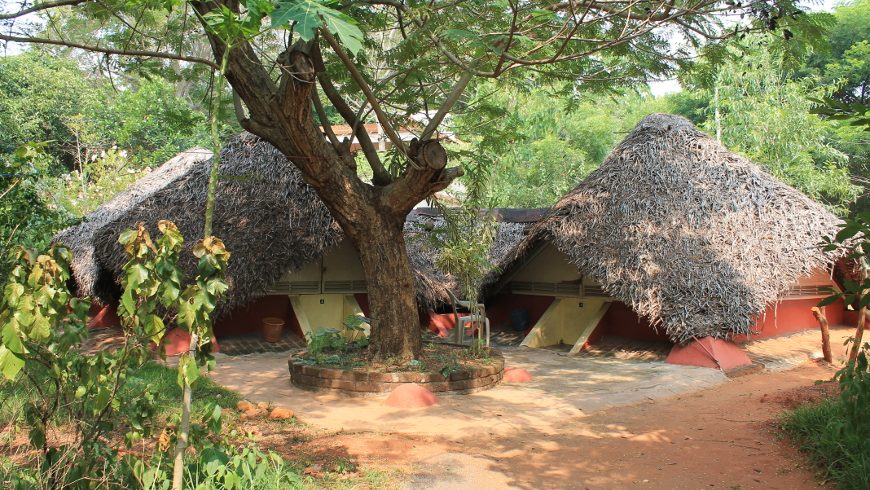
The trend of sustainable travel is not new and it has been successfully practiced all over the world and in India too. Auroville in Pondicherry is the epitome of this model. The only difference is that now it’s been mushrooming in all parts of India via these small and medium community spaces while spreading awareness among the masses.
The idea behind the concept is to sensitize the travellers to mind their old habits of littering and be more proactive towards their surroundings. A number of workshops are also being conducted to teach how to recycle waste and decrease their carbon footprints apart from generating awareness towards sustainable travel and living.
Cover image: photo via Pexels

You might also like

India: The 10 Best Eco-Stays
Our journey discovering the world of sustainability today is bringing us far away: next stop, India! Find out 10 of the best eco-stays in the land of temples, of the River Gange, and of the hundreds of colors. But first, we should try to answer an important question. Which one? Keep reading to find it […]
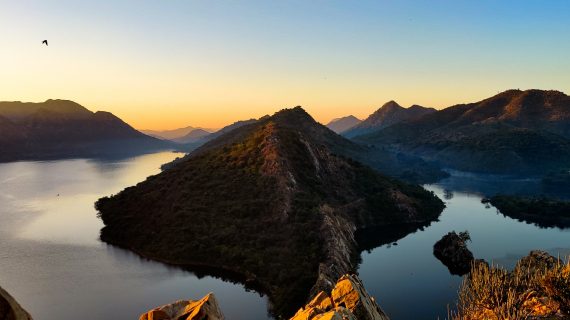
India: How conventional travel is shifting towards Eco-travel post corona
Suddenly, the world stopped Travelling! The roads were deserted. The travel folks were sitting at home waiting for airports to open. But there was something that brought a smile to everybody’s faces. People were happy to see clear skies, many living in polluted cities were watching stars from their houses for the first time. We […]
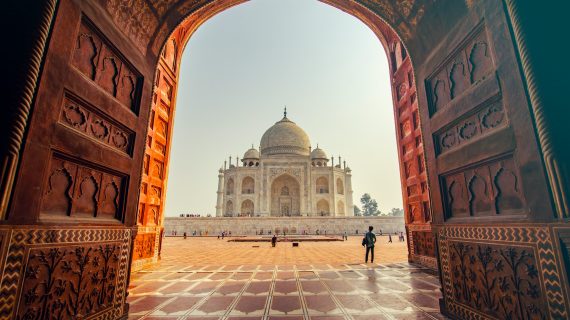
Top 8 Tips to Travel Safe in India
How to travel to India and stay safe? Here are 8 tips to ensure your next (or first) trip goes as smoothly as possible Foreigners travelling to India are excited to explore its diversity but they are concerned about their own safety. Being a female traveller, I have to agree with the safety concerns of […]
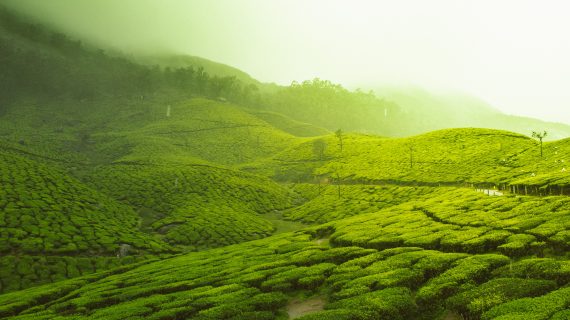
10 Must-Do Experiences in India for Eco Travelers
From living in a royal palace, to experience a train journey. From exploring a natural park on a boat, to eating Langar at Golden temple, or celebrating an Indian festival… find out the best must-do experiences in India! India is so diverse that you can get a glimpse of the whole world in one country. […]
- The Best Eco Friendly Destinations...
The Best Eco-Friendly Destinations in India

Whether it’s a large biosphere reserve or a small village where community-based initiatives flourish, India has some splendid eco-friendly destinations. Here are some perfect places away from the urban jungles we all need an escape from every so often.

Khangchendzonga National Park, Sikkim
Khangchendzonga National Park, which covers almost 30% of the total land of Sikkim in northeast India, was initiated into the UNESCO World Heritage list in 2016. It provides one of the most breathtaking panoramas in the entire world. Along with the imposing Khangcheecndzonga, the third highest mountain in the world, there are spectacular glaciers, lakes, rivers, valleys, caves and plains.
Khangchendzonga National Park provides sanctuary to a wide variety of mammal species, including musk deer, snow leopard, red panda and Himalayan blue sheep. It has almost half of India’s bird species and one-third of the country’s flowering plants. Mount Khangchendzonga also holds a deep spiritual significance for the people of Sikkim. A trek across this remarkable land is an experience like no other.
Lahaul Spiti, Himachal Pradesh
Life can be hard in the cold mountain desert of Spiti Valley, where the craggy terrain and unforgiving climate (temperatures can dip to minus 30°C) provide very little means to sustain a livelihood. A few organisations such as Spiti Ecosphere are on a quest to preserve this vulnerable ecosystem by developing sustainable tourism in the region, which also helps in fuelling the local economy.
Whether trekking across the thrilling Pin Parvati Pass , biking through challenging Himalayan trails or having a spiritual experience in humble meditation centres, travellers are encouraged to have as little impact on Spiti Valley’s environment as possible.
Khonoma Village, Nagaland
About 20km from Kohima, the capital of Nagaland , is a 700-year-old emerald landscape known as Khonoma Village. Since the Naga tribes have always depended on hunting as a means of sustenance, about 300 Blyth’s tragopans, the state bird and an endangered species, were killed in 1993 alone.
In addition, timber merchants carried out unchecked deforestation over large parts of the area around the same time. The residents of Khonoma had bravely defended their land against British invasion in the 1800s and it was now time to do the same against a different kind of enemy. So the concerned villagers put a complete ban on hunting and logging, and since then Khonoma has become renowned as Nagaland’s ‘green village’.
Thenmala, Kerala
Thenmala, which means Honey Mountain, holds pride of place as the first planned eco-tourism destination in India. It is surrounded by dense evergreen forests, rich in timber and a thriving rubber plantation. The beautiful green hills of Thenmala, nestled in the midst of the Western Ghats, holds many surprises for the traveller. The biodiversity of the region is evident at Butterfly Safari Park, the Deer Rehabilitation Centre and Shenduruney Wildlife Sanctuary. For the adventurous soul, Thenmala has activities such as biking, rock climbing, hiking, abseiling and camping. On the other hand, the sprawling tea plantations at the nearby Ambanad Hills are ideal for a relaxing stopover.
Mawlynnong Village, Meghalaya
Best known as the cleanest village in Asia, Mawlynnong leads by example. The use of plastic has been banned here and so has smoking. Keeping the spirit of eco-friendliness alive, the streets are lined with bamboo dustbins and, unlike in most parts of India, there’s hardly every any litter to be found. What’s more, many of the guest houses are constructed of bamboo. Composting and nourishing tree plantations are also common practice in the village. The Living Roots Bridge , a UNESCO World Heritage Site and a must-see structure, is at the neighbouring Riwai Village, which is a short hike from Mawlynnong. The Khasi tribes of Meghalaya created these natural bridges by weaving together the roots of ficus trees.
Parambikulam Tiger Reserve
Parambikulam Tiger Reserve is another eco-tourism destination in the southern state of Kerala. The environment here is fiercely defended and during jungle safaris visitors aren’t allowed inside the heart of the tiger reserve in order to keep the wildlife protected. The community-based eco-tourism has been designed to provide livelihoods to indigenous communities living in the area. They are involved in making bamboo products, paper bags, locally sourced honey and other souvenirs from recycled plastic waste, which are all available at the ecoshop inside the reserve. The earnings from tourism initiatives go towards environmental education and research, as well as activities related to the protection of the forest.

Did you know – Culture Trip now does bookable, small-group trips? Pick from authentic, immersive Epic Trips , compact and action-packed Mini Trips and sparkling, expansive Sailing Trips .
Culture Trips launched in 2011 with a simple yet passionate mission: to inspire people to go beyond their boundaries and experience what makes a place, its people and its culture special and meaningful. We are proud that, for more than a decade, millions like you have trusted our award-winning recommendations by people who deeply understand what makes places and communities so special.
Our immersive trips , led by Local Insiders, are once-in-a-lifetime experiences and an invitation to travel the world with like-minded explorers. Our Travel Experts are on hand to help you make perfect memories. All our Trips are suitable for both solo travelers, couples and friends who want to explore the world together.?>
All our travel guides are curated by the Culture Trip team working in tandem with local experts. From unique experiences to essential tips on how to make the most of your future travels, we’ve got you covered.

Simran Lal, Founder of Nicobar, On How She Launched Her Lifestyle Brand and Tips On Travelling to India

Film & TV
Embrace the barbie spirit by visiting the world's most colourful cities.

Guides & Tips
Top tips for travelling in india.

See & Do
The top things to do and see in jaipur.

A Guide To Madhya Pradesh’s Tiger Reserves

This Homestay Could Help Save Rajasthan’s Nomadic Camel Pastoralists

The Best Places to Travel in November

How To Spend a Week in Maharashtra

Fun-Filled Travel Experiences to Boost Your Serotonin Levels

How to spend 10 days in Madhya Pradesh, India

Photo Journal: 10 Photos From Jaipur's Ganguar Festival

5 Delicious Indian Dry Bean and Lentil Recipes
Culture trip spring sale, save up to $1,656 on our unique small-group trips limited spots..

- Post ID: 1643671
- Sponsored? No
- View Payload
You will be redirected to your dashboard shortly. We will also call you back in 24 hrs .
- Ecotourism In India: 10 States That Are Encouraging Responsible Travel In 2024!
22 Apr 2021
With more traveling comes bigger responsibility! The sooner we understand this, the better it is for us and nature around. Ecotourism in India might not be a very popular terminology, but those who care about it are doing their bit to conserve country’s natural heritage, even if it’s one baby step at a time. Being aware of small changes, promoting the lesser developed areas, and upholding the traditions and culture of the place are our responsibilities as a traveler. Let’s begin with delving slightly deeper into how ecotourism in India is shaping up and making its presence felt in popular as well as lesser explored destinations in India.
About Ecotourism

Image Source
Ecotourism works towards the conservation of nature and biodiversity. It also promotes responsible travel, which can be initiated by minimum destruction, environmental growth, adventure, and preaching sustainable ways of living on the planet.
In the process, ecotourism glorifies offbeat places, their rich culture, and centuries-old traditions. The advantages are many; we as a traveler get to live moments, and nature as a whole gets to live!
Intentionally, nobody likes stressing nature while trying to destress themselves but a reality check is much needed. Non-profit organizations are taking the lead in promoting the cause and even the government contributes its bit by boosting city tours and adventure treks. Volunteer travel programs are being designed to seek the attention of youngsters and nature lovers; and Eco Sensitive Zones (ESZs) have been developed to put spotlight on India’s wildlife sanctuaries, forest reserves, and biodiversity parks.
Looking To Book A Holiday Package?

Spellbinding Cochin Family Tour 2D/1N Package @ Rs 2,750
Plan your trip today!

Himachal Family Tour Package 4D/3N @ Rs 8,750
Get quotes from multiple travel experts.

Exciting Andaman Family Trip 5D/4N @ Rs 10,250
Compare & customize quotes before booking.

Gangtok & Darjeeling Tour Package 5D/4N @ Rs 13,000
Have Questions? Talk to our travel experts today.

Wonderful Goa Family Package 3D/2N @ Rs 6,500
Best prices guaranteed.

Riveting Rajasthan Vacation 3D/2N Package @ Rs 6,499
EMI option available.

Enchanting Uttarakhand Tour 4D/3N Package @ Rs 7,199
Explore best destinations with our experts.

Delightful South Weekend Tour 3D/2N Package @ Rs 4,999
Thrilling weekend full of fun.

Marvelous Gujarat Tour 3D/2N Package @ Rs 4,999
Talk to our experts today.

See more at TRAVELTRIANGLE.COM
The Need For Ecotourism In India

The constant threat of global warming and degradation of nature has brought the idea of ecotourism in the limelight. Besides, promotion of fragile & undisturbed nature, and connecting secluded environs with the mainstream are a few concerns that have been duly addressed by ecotourism in India.
However, the reduction of carbon footprint is equally emphasized when we speak of ecotourism. Today, there are a number of sprawling farms, resorts, homestays, and eco-friendly hotels in India that offer a natural retreat in India’s popular tourist destinations.
Suggested Read: 20 Unbelievable Experiences In India That You Must Add On Your Bucket List To Enjoy An Offbeat Escape
Steps To Become A Responsible Ecotourist

For promoting ecotourism in India and that too in the right way, you must follow these steps that will help you as well as nature. Take a look!
- First of all, select your destination and read all about the flora and fauna existing there. Get acquainted with all the species that can be easily spotted so that you are prepared for them when they are in front of or near you. Maintain a safe distance and be aware of your surroundings.
- Plastic is harmful for our ecosystem and when you are on your vacation try avoiding the use of plastic water bottles and other things. Whether you are visiting a national park or a wildlife sanctuary, don’t throw used packets and bottles. Carry them in your bag and throw them in the dustbin.
- Don’t try to interact with the wild animals or feed them as they might harm you. Animals don’t like to be disturbed and you should not do the same for clicking pictures or making videos. Keep a distance and just enjoy the view instead of disturbing them.
- Trekking is an adventurous activity that you can indulge in on your vacation. Pay attention and stick to the trails so that you can easily complete your trek and come back. The trails are made in such a way that they keep you and the wild animals safe from each other.
- Smoking is injurious to health as well as our surroundings. Don’t smoke and disturb the ecological balance. Cigarettes have caused forest fires a lot of times in the past and you must avoid it at all costs.
- Photography is an essential part of any trip and when done without entering the personal space of wild animals is considered ethical. Learn the basics of photography and consult wildlife photographers on the right way to click pictures that won’t disturb the animals and will give you great shots.
10 States That Are Encouraging Ecotourism
Eco Sensitive Zones in India boast of geographical diversities and lovely tourist places that have been or are rapidly becoming popular getaways in India! Take a look at these states that are promoting ecotourism!
- Ladakh: Traveling To The Himalayas Done Right
- Himachal Pradesh: Responsible Travel In The Highlands
- Delhi: Good Vibes Straight From The Capital
- Uttarakhand: Cascading From The Garhwal Himalayas
- Arunachal Pradesh: Crown Of The Northeast
- Meghalaya: Into The Abode Of Clouds
- Assam: Of Secluded Environs And National Parks
- Sikkim: Taking Indian Tourism To Another Level
- Karnataka: Of Rainforest, Wildlife, And Adventures
- Kerala: T here In The Foothills Of Western Ghats
10. Ladakh: Traveling To The Himalayas Done Right
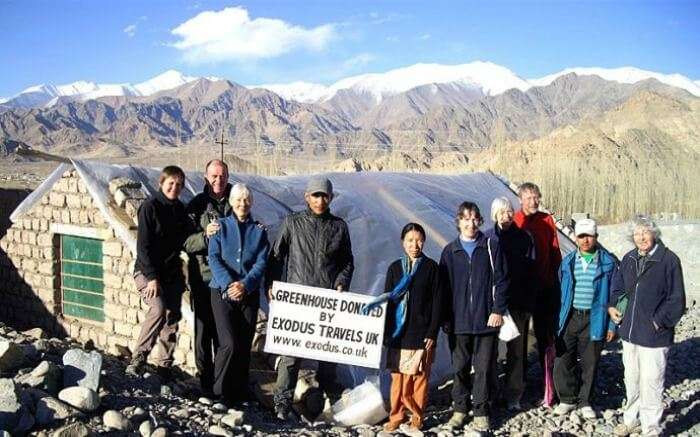
The Himalayas have been on top of every traveler’s bucket list and therefore left gasping for breath in recent times. Now that tourism has found a foothold in Trans – Himalayan region and most of the places have been glorified, ecotourism is penetrating to encourage sustainable travel and extensive tours.
Leh Nutrition Project , established by Save The Children Fund (UK) in 1979, happens to be the NGO working towards the overall upliftment in Ladakh. They have been addressing issues related to child care, development, education, livelihood, and watershed development in the difficult terrains. In addition to that, Leh Nutrition Project and Ladakh Ecological Development Group have been actively working to promote the sustainable society in Ladakh.
Attractions For Eco-Travelers In Ladakh: Hemis National Park, Tsomoriri Wetland Conservation Reserve, ancient monasteries, treks spanning across villages, chance to experience the life in the valley Eco-Friendly Stays In Ladakh: Eco Popular Resort in Leh, Himalayan Eco Resort in Leh, and homestays in Leh
Suggested Read: 11 Secret Homestays In Himalayas That Will Possess You For Life
9. Himachal Pradesh: Responsible Travel In The Highlands

The mountainous landform of Himachal, bordering Tibet and Jammu & Kashmir, has rich biodiversity, which attracts a large number of tourists every year. As a result, popular holiday destinations in Himachal are suffering due to excessive commercialization.
The Ecotourism Society in Himachal has been practicing Community-Based Ecotourism (CBET), which is a collaborated effort towards the conservation of nature and cultural resources in the region. Various approaches like Participatory Forestry Management for the development of forests have been initiated. The efforts have been widely appreciated by the people of Himachal as well as tourists. Besides, they’ve generated a lot of revenue for the state.
A huge credit for promoting ecotourism in Himachal also goes to Ecosphere – an organization that focuses on initiatives for saving the rich bio-reserve, keeping the environment sound, and making lesser known places more popular.
Attractions For Eco-Travelers In Himachal Pradesh: Great Himalayan National Park, Pin Valley National Park, Chandratal, 3300 plus varieties of flora, the indigenous tribes of the region Eco-Friendly Stays In Himachal Pradesh: Oakwood Hamlet in Shimla, The Himalayan Village in Kullu, and Homestays in Spiti Valley
Suggested Read: Top 10 Richest Cities In India Let You Witness The Best Of Modern Lifestyle & Old World Charm
8. Delhi: Good Vibes Straight From The Capital

New Delhi has seen a commendable effort from organizations like Ecotourism Society of India that have been encouraging sustainable practices in the capital. From minimizing carbon footprint to creating awareness and further collaborating with like-minded bodies to promote eco-tourism, they have come a long way.
Resources have also been fuelled towards identifying new ecotourism destinations and making them popular. For example, Chhawla-Kanganheri – an ecotourism park near Najafgarh drain has been revamped and recreational activities like boating, camping, paintball and obstacle course are available for the entertainment of tourists. Farmstays also have a major role in the promotion of ecotourism; a few have come up in the heart of the city, besides many in the outskirts.
Attractions For Eco-Travelers In Delhi: JNU Caves, Yamuna Biodiversity Park, The Ridge, and The Yamuna Eco-Friendly Stays In Delhi: Surjivan Resort, Thakran Farm, and Uppal’s Orchid
Suggested Read: 25 Best Shiva Temples In India For Soaking In The Blessed Vibes
7. Uttarakhand: Cascading From The Garhwal Himalayas

To make travelers aware of the diverse culture and surroundings, several village treks have been initiated by the tourism department of Uttarakhand. These trails give an insight into the lives of Kumaoni villagers. It is a collective effort from Uttarakhand Tourism Development Board, Garhwal-Kumaon Mandal Vikas Nigam , and ecotourism division of the state forest department and has seen the successful execution of eco-tours, which has taken adventure tourism to new heights. The organizations also run homestays in the area by providing essentials and required finances to the homeowners to operate efficiently.
State Bird Spring Festival organized by forest department has experienced a tremendous growth over the years and has been a boost to the tourism. Communities like Pawalgarh Conservation Reserve – a tiger conservation reserve in Ramnagar has been highly benefitted because of all the eco-friendly initiatives taken at places in Uttarakhand.
Attractions For Eco-Travelers In Uttarakhand: Valley of Flowers, and Nanda Devi Biosphere Reserve Eco-Friendly Stays In Uttarakhand: Emerald Trail, camps and eco lodges in Jayalgarh, Auli, and Ghangaria
Suggested Read: 33 Regal Forts In India That Are Popular Tourist Attractions Today
6. Arunachal Pradesh: Crown Of The Northeast
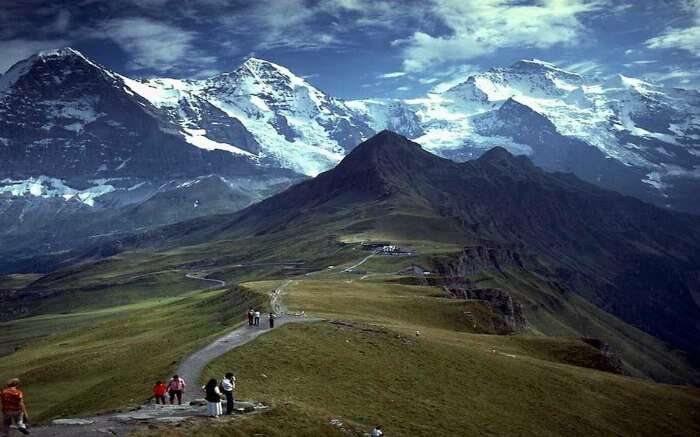
Arunachal Pradesh is one of the prized jewels of the Northeast India. It boasts of diverse topography and unexplored terrains, which make it a popular destination for ecotourism in India.
Organizations like Future Generations Arunachal and Green Pastures have been focussing on projects to impart awareness on ecotourism and encourage homestays in the region. Also, institutions like Ngunu Ziro by Future Generation Arunachal have been contributing towards the cause of preservation of tribal culture and safeguarding the nature around.
Apatani Plateau Initiative, Ziro and Tangsa Community Conservation Reserve Initiative, Changlang District have been major initiatives executed by Association for Conservation and Tourism in the state. They aim at the sole motive of creating a friendly environment for tribals and making conserving the pristine environment.
Further, game viewing at wildlife sanctuaries, climbing, trekking and nature walk in the valleys and splendid sightseeing make Arunachal Pradesh an ideal place for ecotourism.
Attractions For Eco-Travelers In Arunachal Pradesh: Namdapha National Park, Tsanga Community Conservation Reserve, and Apatani Plateau Eco-Friendly Stays In Arunachal Pradesh: Homestays in Ziro run by an NGO called Ngunu Ziro , homestays at Bagun Welfare Society in Thembang, responsible guesthouse in Namdapha National Park run by an NGO called SEACOW
Suggested Read: 43 Must Visit Places When Travelling to the North East
Planning your holiday but confused about where to go? These travel stories help you find your best trip ever!

Nikhil Recites A Tale Of 11 Friends Who Went From Bengaluru To Ladakh
Bengaluru - Delhi - Leh - Ladakh - Leh - Delhi - Amristsar - Chandigarh - Bengaluru

Pranav Took A Solo Trip To Andaman & It Was Truly Wonderful
A backpacker's guide to the predominant Honeymoon destination!

Shivani Talks Of Her Trip To Mcleodganj & Dalhousie With Her Husband And Friends
Sunset views. Monasteries. Bhagsunath falls. And amazing street food.

Kanika Proves That Traveling With An Infant To Kerala Is Totally Safe & Wonderful
Beaches, Backwaters, Spas, & More. Take me there now, please!

Here's Why Aakanksha's Trip To Manali Changed Her Idea About Group Tours
Ideal long weekend getaway from Delhi! Isn't it?

Isha Elaborates On How She Went Solo To Kasol & Returned With Lots Of Friends
And tales of her exciting Kheerganga & Chalal trek...

Prasham's Account Of A Goa Tour Proves That Goa Is More Than A Party Destination
Adventure, sightseeing, laid-back beach tours, and it doesn't stop there!

Bhavya Gives An Extensive Account Of His Jaisalmer Trip With Friends
Desert safari, haunted Kuldhara village, & Gadisar Lake. There's more...

Ashish Tells Why Kashmir Turned Out To Be A Winter Wonderland For His Family
For Gondolas, Shikaras, and plenty of snow!
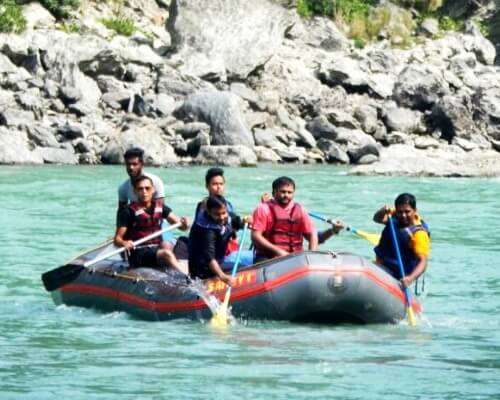
Arunav Can't Stop Praising His Adventurous Trip To Sikkim & Darjeeling With Friends
For adventure in Air, on Land, and in Water!

Avneet Describes Her Trip To Spiti With A Group Of Strangers That Became Friends
Sightseeing. Monasteries. Trekking. And beauty all along
5. Meghalaya: Into The Abode Of Clouds

This unexplored paradise in the northeast has a lot of cultural diversity and plenty of secluded wonders. Living Roots Ecotourism Society has unearthed a hidden treasure in the northeast and glorified Nongblai – a lesser-known village in the East Khasi Hills district. The village has record 16 living root bridges . Raid Nongblai – a collective organization of Nongblai, Suthim, and Wahlyngkhat villages have jointly taken up the responsibilities of these living root bridges that are like a god to them.
Regional Workshop on Environmental Service Learning , conservation of Hotspots of Biodiversity and Ecotourism that focusses on biodiversity conservation and ecotourism. Moreover, the exciting village tours and untarnished natural beauty has a raw appeal for every aspiring traveler.
Attractions For Eco-Travelers In Meghalaya: Mawlynnong Village, Mawphlang Sacred Forest, East Khasi Hills, and Jakrem Hot Spring Eco-Friendly Stays In Meghalaya: Ecotourism homestays with the Khasi tribe in Mawlynnong, NG Eco Homestay in Cherrapunjee, and Ri Kynjai Eco-resort in Shillong
Suggested Read: 20 Perfect Reasons To Visit India: We Bet You Can’t Resist Packing Your Bags
4. Assam: Of Secluded Environs And National Parks
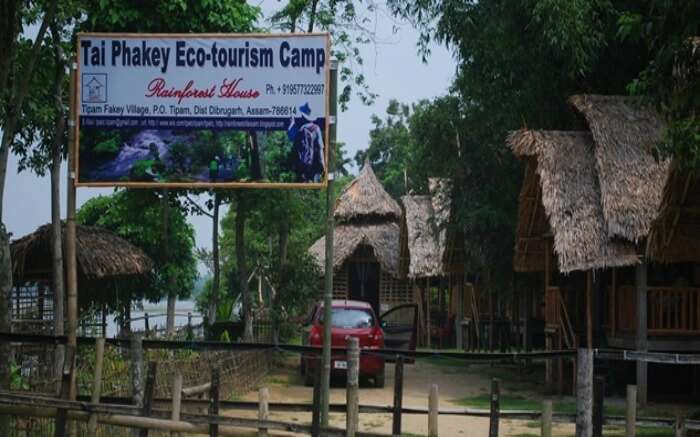
Remote places, tribes, and their exciting traditions make Assam an exciting destination for ecotourism in India. People, over the years, have shown acceptance to responsible travel and now workshops are conducted at different places.
Understanding the need of the hour, Ecotourism Society of India in partnership with Assam Tourism has been organizing workshops to promote responsible tourism. Assam Tourism Development Corporation (ATDC) has also been keen on supporting initiatives by setting up eco-camps all managed by deprived youths in the region. These camps, mostly frequented by the foreigners and backpackers are a huge boost to the tourism.
Attractions For Eco-Travelers In Assam: Kaziranga National Park, Manas National Park, and The Pobitora Wildlife Sanctuary Eco-Friendly Stays In Assam: The Singpho Eco Lodge at Margherita-Pengari road, Faneng Village at Lekhapani, The Nature Hunt Eco Camp at Kaziranga National Park, and Chandubi Jungle Camp at Chandubi Lake
Suggested Read: 15 Secrets Of North East India Locals Have Been Keeping To Themselves
3. Sikkim: Taking Indian Tourism To Another Level
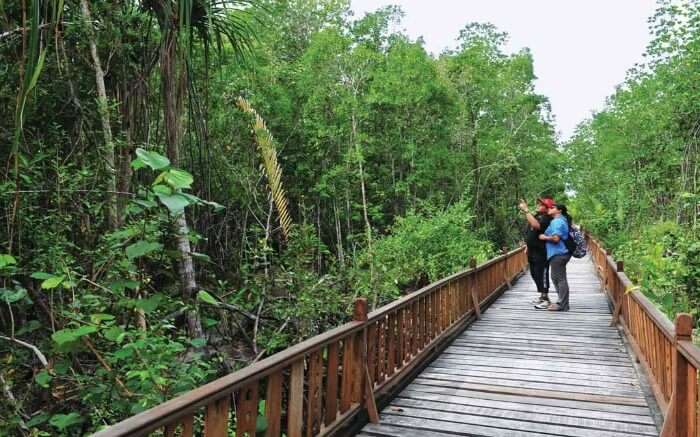
In the lap of the Himalayas, Sikkim experiences large number of footfall; especially honeymooners! People who turn out to be ignorant while making memories end up spilling garbage at random thus affecting the nature.
To save the beautiful environment of the northeast, sustainable tourism and eco-friendly measures have been devised by Directorate of Ecotourism in association with Forest Department of Sikkim. In this region, promotion of wildlife and nature has remained a prime focus.
GoingWild is another responsible organization in the northeast working towards the development of ecotourism by promoting several wildlife and birding tours.
Attractions For Eco-Travelers In Sikkim: Maenam Wildlife Sanctuary, and Khangchendzonga National Park Eco-Friendly Stays In Sikkim: Teen Taley Garden Resorts in Rumtek, Eco Paradise Resort & Spa in Gangtok, and Cherry Village Resort in Pelling
2. Karnataka: Of Rainforest, Wildlife, And Adventures
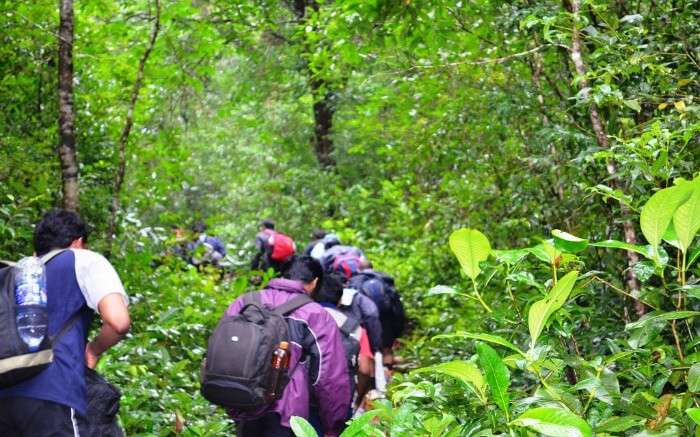
There couldn’t be anything more exciting than taking up eco-trails, walking through the valley, and spending moments camping in the dense rainforests of Western Ghats. The vastness of nature in the Ghats has treasured ecological diversity, which needs to be explored and brought into the people’s knowledge.
Jungle lodges, heritage sites, and resorts make Karnataka a popular ecotourism destination in the country. For all the rush and visitors that come down to visit the city, Karnataka Ecotourism Development Board (KEDB) and National Tiger Conservation authority have collectively rolled out policies aimed at attracting more investment, creating more awareness at the tourist hotspots, and facilitating ambitious activities to attract tourists.
Attractions For Eco-Travelers In Karnataka: Bisle Rainforest, Nagarhole, Kabini Backwaters, Hassan, Chikmagalur, and Devbagh near Karwar Eco-Friendly Stays In Karnataka: Jhari Ecostay, Silver Oak Resort, and Chukki Mane
Suggested Read: Flee To These Best Homestays In South India For A Soulful Retreat
1. Kerala: There In The Foothills Of Western Ghats
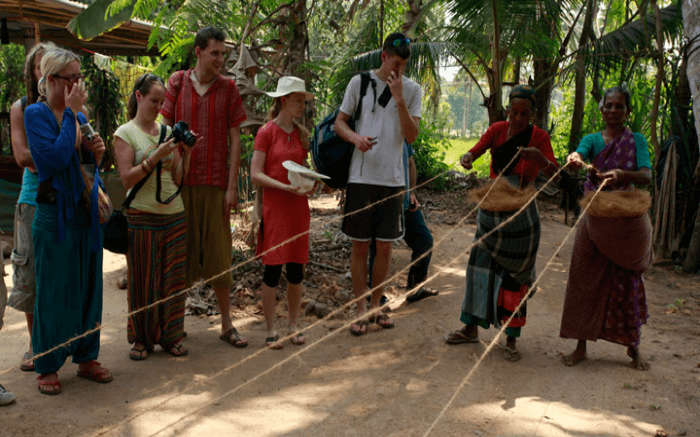
From being the first place to execute planned ecotourism in India to treating the visitors with warmth, Kerala – in the heart of the Western Ghats, is a popular sojourn for nature lovers. The Ghats are counted among the top 18 biodiversity hotspots in the world and boast of quite a few endangered wildlife species.
Hill stations, plantations, backwaters, and the unique biological settings of Kerala make it a perfect ecotourism destination. The infinite gardens and tea estates are perfect for nature walk and treks. Thenmala Ecotourism Project is a prominent development in the South India that works towards the development of Shendurney Wildlife Sanctuary Reservoir and Deer Rehabilitation Center . The sanctuary offers a number of leisure and adventure zone for tourists.
Center for Ecotourism of Kerala Institute of Tourism and Travel Studies has been promoting sustainable tourism by organizing seminars and community service in the area.
Attractions For Eco-Travelers In Kerala: Thenmala, Konni, Parambikulam, Aralam, Silent Valley National Park, and Periyar Tiger Reserve Eco-Friendly Stays In Kerala: Wild Elephant Eco-Friendly Resort, Ela Ecoland, Shendurney Wildlife Sanctuary Reservoir, and Hinterland Village
Further Read: 15 Mind-blowing Farmstays In India For A Refreshing Break
Ecotourism in India is has taken over like a movement and the effects can be seen in the extreme places where youngsters can be spotted moving around picking up the leftovers voluntarily, teaching the underprivileged kids and helping the locals grow. So, plan your vacation in India and let the environment be the winner as you travel.
Disclaimer: TravelTriangle claims no credit for images featured on our blog site unless otherwise noted. All visual content is copyrighted to its respectful owners. We try to link back to original sources whenever possible. If you own the rights to any of the images, and do not wish them to appear on TravelTriangle, please contact us and they will be promptly removed. We believe in providing proper attribution to the original author, artist or photographer.
Please Note: Any information published by TravelTriangle in any form of content is not intended to be a substitute for any kind of medical advice, and one must not take any action before consulting a professional medical expert of their own choice.
Frequently Asked Questions About Ecotourism In India
What is ecotourism in simple words?
Ecotourism is an alternative to commercial mass tourism. It is a form of tourism which focuses on traveling responsibly and environmental sustainability. Ecotourists go on small-scale and low impact trips to keep their carbon footprint low.
Why is ecotourism important?
Ecotourism is important for the welfare of mankind as well as planet Earth. It will help in environmental conservation and well-being of the local people. In return, ecotourists will cultural awareness and respect.
What are the types of ecotourism?
As per the United Nations, there are three types of ecotourism. They are: adventure ecotourism, soft ecotourism, and hard ecotourism. The hard ecotourist is motivated by scientific interests. They indulge in bird watching, botanical trips, and nature photography. The soft ecotourist is interested in participating in the local culture. They are not as risky as the sports adventure ecotourists engage in, like surfing and scuba diving.
How popular is ecotourism?
Ecotourism is slowly picking among travelers. Since its inception, many travel influencers have started propagating the lifestyle of an ecotourist. Responsible tourism should become a lifestyle for everyone.
How can we promote ecotourism?
We can promote ecotourism by building awareness for the environment and minimizing the impact of your trip to a destination, take, for instance, the impact on roads.
How does ecotourism help the economy?
Ecotourism helps in the preservation of the environment, and by extension, biodiversity. This, in turn, drives our economy. If a country invests in ecotourism, its economy can get a much-needed boost.
Is ecotourism bad for the environment?
No, ecotourism is great for the environment. It has a very low impact on the environment and contributes to our economy. It also fosters environmental education. Every voice can create an impact.
Looking To Book An International Holiday?

Trip to Sri Lanka at Rs 13,500/-
Plan Your Vacation Today!

Trip to Singapore at Rs 20,499/-
Get Quotes From Local Experts

Mauritius Holiday Starting at Rs 65,000/-
Talk to Our Experts Today

Maldives Honeymoon Trip at Rs 39,800/-
Pay with easy EMI Option

Europe Trip at Rs 89,999/-
All Inclusive Deals

Vacation in Dubai at Rs 27,499/-

Hong Kong Holiday at Rs 24,999/-
Money Safe Guarantee

Thailand Holiday at Rs 7,999/-
Flights Excluded
Recent Posts

7 Best Spas In Sri Lanka For A Rejuvenating Getaway

10 Cheapest Cities In Europe Where Backpackers Can Travel On A Budget!
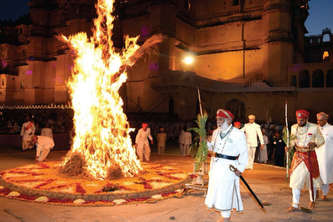
Holi In Udaipur 2023: A Royal Affair For All Those Who Love The Festival Of Colors
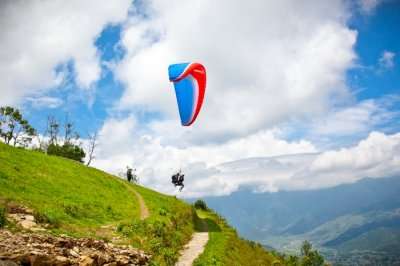
Go Paragliding In Khajjiar For A Thrilling Weekend Retreat In 2023
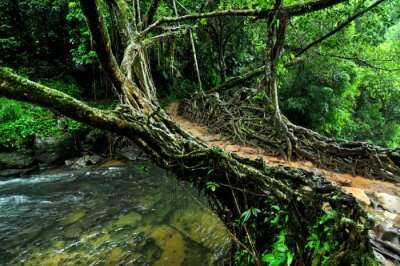
The Ever Growing Living Root Bridges, Meghalaya – A Nature’s Marvel In The Northeast

Paragliding In Kalimpong Completes A Northeast Trip In The Most Sumptuous Way
Trending Blogs

20 Mysterious Places In India To Visit In 2024 More Bizarre Than The Bermuda Triangle

10 Scariest Roads In India That Are A Driver’s Nightmare

101 Places To Visit In India Before You Turn 30 in 2024

35 Exotic Places To Visit In December In India 2024 To Enjoy A Surreal Vacation

60 Best Honeymoon Destinations In India In 2024

95 Best Honeymoon Destinations In The World In 2023 For A Romantic Escape!
Best Places To Visit In India By Month
Best places to visit outside india by month.
- TravelTriangle
- topical »
- Tour Packages
- Honeymoon Packages
- Family Packages
- Budget Tour Packages
- Luxury Tour Packages
- Adventure Tour Packages
- Group Tour Packages
- Kerala Tour Packages
- Goa Tour Packages
- Andaman Tour Packages
- Sikkim Tour Packages
- Himachal Tour Packages
- Uttarakhand Tour Packages
- Rajasthan Tour Packages
- Tour Packages From Delhi
- Tour Packages From Mumbai
- Tour Packages From Bangalore
- Tour Packages From Chennai
- Tour Packages From Kolkata
- Tour Packages From Hyderabad
- Tour Packages From Ahmedabad
- Kerala Tourism
- Goa Tourism
- Sikkim Tourism
- Andaman Tourism
- Himachal Tourism
- Uttarakhand Tourism
- Rajasthan Tourism
- Hotels in Kerala
- Hotels in Goa
- Hotels in Sikkim
- Hotels in Andaman
- Hotels in Himachal
- Hotels in Uttarakhand
- Hotels in Rajasthan

The Best Travel & Tourism Blog of India
India Tours
- International Tours
- Destination Wedding
- Medical Tourism

Plan Your trip
Best eco-tourism destinations in india.

“Eco-Tourism in India: A Refreshing Journey through a Highly Diversified Nature”
Ecotourism is an exciting way to explore the natural beauty of our planet while preserving and protecting it for future generations. With ecotourism, you can embark on adventures that will take you off the beaten path and into some of the world’s most incredible natural wonders. Whether you want to trek through dense rainforests, observe rare wildlife in their natural habitats, or discover remote mountain villages, ecotourism offers a sustainable way to travel that is both rewarding and enriching. And, no other place but India comes first in the list when mentioning about these experiences altogether, at a place. India is a country of incredible natural beauty and diverse cultures, making it an ideal destination for ecotourism. From the majestic Himalayan mountains to the lush forests of the Western Ghats and the tranquil backwaters of Kerala, India offers a wealth of ecotourism opportunities that are both sustainable and enriching. Let’s go for a refreshing journey through some of the best ecotourism destinations in India from this article!
List of The Best Ecotourism Destinations in India
Also Check Out: Popular India Tour Packages
Kerala Backwaters
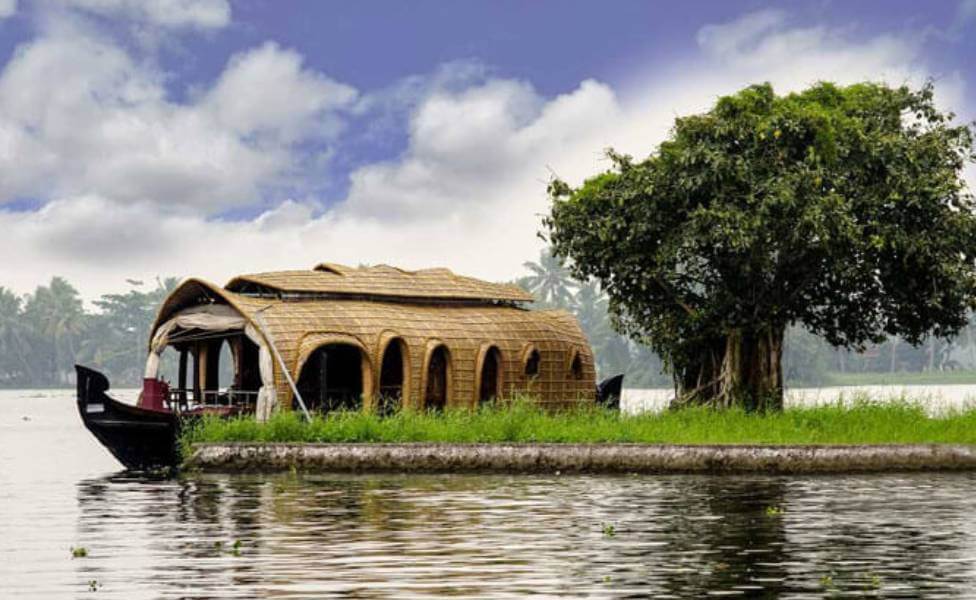
The backwaters of Kerala have its own charm and life on it unlike the other destinations in India. Amidst the paddy fields and lush green palm grove these backwaters have its own gentle rhythm hewed out from the rivers which flow down from the Western Ghats to the coast of India. You can enjoy a frolic cruise on the backwaters along the breathtaking vivid contrasts of lush greens and deep blues on the houseboats, known as Kettuvallam which are the cargo boats that once plied in the backwaters to carry heavy cargo such as Rice, Coconut and Spices and also to provide living accommodation for the boatman. These are now changed over to luxurious accommodation for eco friendly travellers.
Activities: Cruising, Canoeing or Kayaking, Village Visits, Watching Cultural Shows, Taking Ayurvedic Treatments and more.
Where to stay: ATDC Houseboats, Alleppey
Nearest Railhead: Ernakulam Junction railway station, Cochin
Nearest Airport: Cochin International Airport
Other Interesting Blogs to Read
- Best Hill Stations to Explore in Kerala
- Top Places to Visit in Kerala
Munnar, Kerala
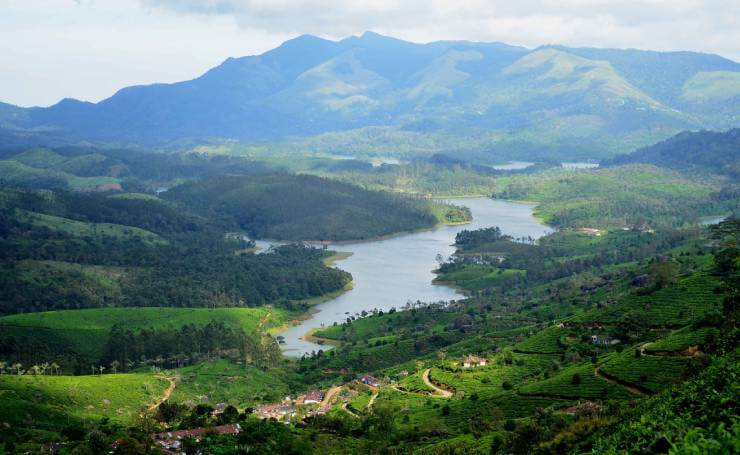
Covered with an extensive layer of forests, grasslands and tea orchards and dotted with several species of exotic flora including the rare Neelakurinji flower, Munnar at an elevation of 1,700 metres is a snug hideout for eco travellers. The small but picture-book hill town in Idukki district in the Western Ghats is home to several protected areas that houses many threatened and endemic species of flora and fauna including the Nilgiri Tahr, Grizzled Giant Squirrel, Nilgiri Wood-pigeon, Elephant, and Gaur amongst the mammals; and Nilgiri Wood Pigeon, Malabar Whistling Thrush, Orange-Crowned Warblers, Nilgiri Pipit, Scarlet Minivet, and Broad-tailed Grassbird amongst the avifauna. If you are travelling to Munnar during the spring and summer seasons you might chance upon the purple-blue hue patches beautifully lying over the lush green bed, that would be a streak of luck though. The gushing streams gutting through the whispering woods and winding lanes cutting through mountains make Munnar one of the popular eco green tourism destinations in India.
Activities: Visiting Tea Plantations, Trekking and Hiking, Wildlife Watching, Waterfalls Visits, Adventure Activities, Exploring Local Markets and more.
Where to stay: Misty Mountain Resort
- Top Tourist Places in Munnar Kerala
- Top Places to Visit in Wayanad Kerala
Thenmala, Kerala

India’s first planned ecotourism destination, Thenmala in Kollam district is majestically set in the midst of evergreen forests in the lap of the Western Ghats and hosts a wide range of adventure and leisure activities for all kinds of travellers. Its growing popularity among both domestic and international tourists is due to its unique vistas, bio-diversity and functioning. Forest trails and night camping in the middle of the jungle allows you to snuggle into nature, whereas a peep into the traditional tree house that is used by the forest dwellers makes your leap into the wild more exciting. Thenmala also boasts a lake where one can go for boating, a rope bridge, a musical fountain, and offers many activities like rappelling, rock climbing, and biking. The Thenmala Eco-Tourism is divided into three different zones such as the Culture Zone, where one can spree into savouring various Keralian cuisine; Leisure Zone, where one can go for a refreshing walk almost up to the dam; and Adventure Zone, where one can go for activities like hiking, rappelling, biking and rock climbing.
Activities: Nature Walks, Trekking, Boating, Adventure Activities, Butterfly Safari, Canopy Walk, Cycling and more.
Where to stay: Apichayans Cliff Resort
Nearest Railhead: Thiruvananthapuram
Nearest Airport: Thiruvananthapuram Airport
Also Read: Best Places to Visit in Kovalam
Thodupuzha, Kerala

The gateway to the Thommankuthu Waterfalls in Idukki district, Thodupuzha is one of the least explored destinations in India that snug knavishly in the Western Ghats. The seven-step waterfall, which was revealed to the world in 1920 by Mr. Thommachen Kuruvinakunnel, a legendary hunter, is one of the major ecotourism destinations in Kerala. Apart from it, the top of Ilaveezhapoonchira, where you can reach while trekking amidst mesmerising views of the surrounding landscapes, is another wonderful spot to visit. The pleasant surroundings dolled up with an evergreen forest blanketed over the rolling hills and housing several species of avifauna and mammals, squeezed gently in the frame of a perfect eco-tourism holiday.
Activities: Wildlife Spotting, Trekking, Waterfalls Visits, Exploring Towns, Attending Festivals and more.
Where to stay: Vettoms Lakeview Resort
Also Read: Water Adventure Sports in Kerala
Eravikulam National Park, Kerala
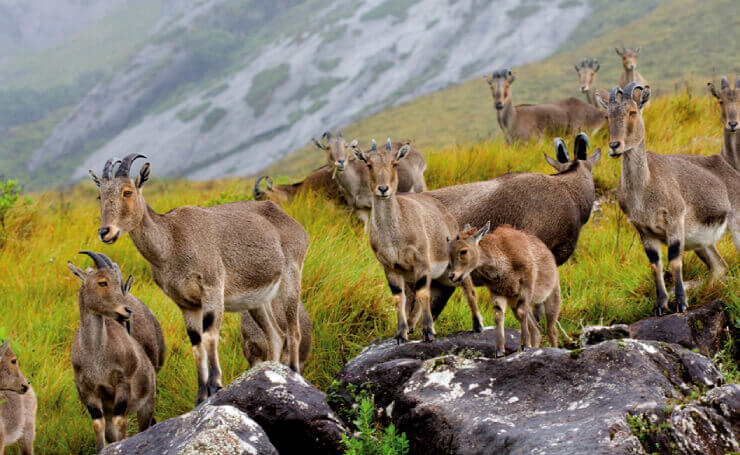
Home to one of the endangered species, Nilgiri Tahr, the Eravikulam National Park that covers an area of 97 square kilometres and ranges from an altitude of 1,200 metres to 2,700 metres is another popular ecotourism place in Kerala. The park comprises high altitude grasslands and is crisscrossed by several perennial streams that merge to form the tributaries of the Periyar River, Cauvery River, and Chalakudy River. The Lakkam Waterfalls on the course of Pampar River is one of the major attractions in Eravikulam National Park. The park is a haven for wildlife enthusiasts as it houses a wide range of animals, birds, insects, amphibians and plants. Further, one can also indulge in activities like forest trails, trekking and wildlife photography.
Activities: Wildlife Safari, Trekking, Nature Walks, Photography, Camping, Visiting Tea Plantations, Bird Watching and more.
Where to stay: Tea Valley Resort, Munnar
Also Read: Popular National Parks & Sanctuaries in India
Periyar National Park, Kerala
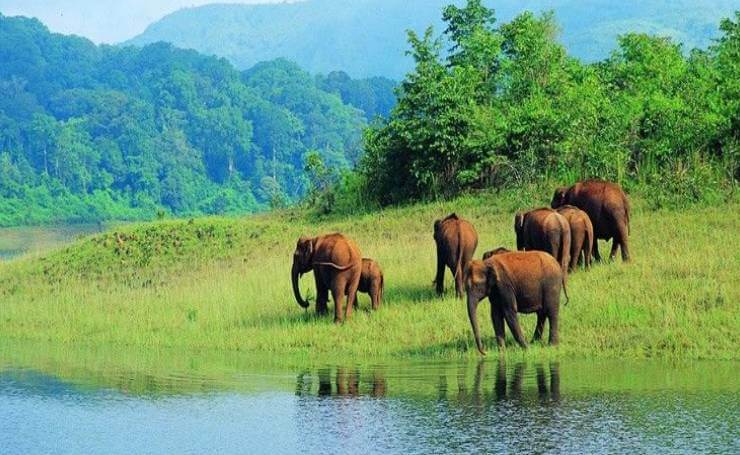
Covering a core area of 350 square kilometres, the Periyar National Park , which is located in the Cardamom Hills and Pandalam Hills of the southern Western Ghats is one of the most visited national parks in South India. As an ecotourism destination, the park is one of the best places to visit as it features sustainable development and conservation. The all-embracing environment turns out to be a paradise for eco-travellers that includes wildlife enthusiasts, botanists and nature photographers. Periyar National Park is notable as an elephant reserve and tiger reserve and also houses several other species of mammals, reptiles, insects, amphibians, and birds. The submerged trees in Periyar Lake are also a treat to the eyes.
Activities: Wildlife Safari, Trekking, Bamboo Rafting, Nature Walks, Boating, Birdwatching and more.
Where to Stay: Bamboo Grove Eco-Lodge
Nearest Railhead: Kottayam
Nearest Airport: Madurai Airport
Also Read: Popular Wildlife Tourism Places in South India
Kodaikanal, Tamil Nadu
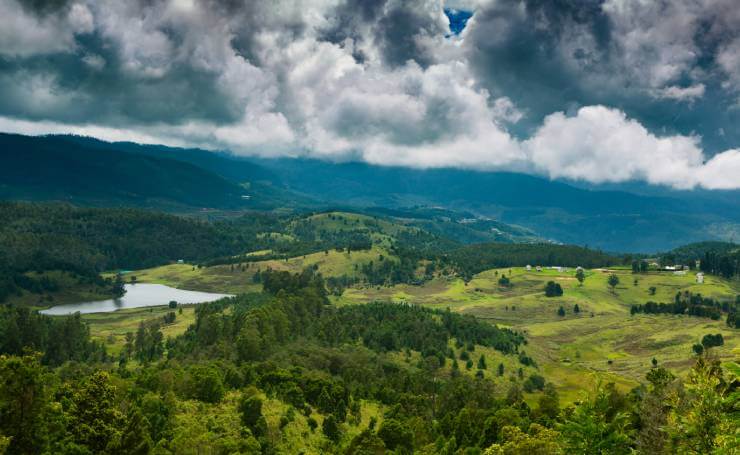
One of the popular weekend getaways in South India, Kodaikanal is graciously set in the Palani Hills, between the Parappar and Gundar Valleys, of the eastward spur of Western Ghats at an approximate altitude of 2,130 metres. Kodaikanal was dotted in the map of India as a summer retreat by the British in 1845 and later due to its propitious location gifted by the forests and grasslands topping the hillsides, it bloomed as one of the major eco-places in India. This mighty hill station in South India is endowed with a nature’s basket comprising the montane rainforests that houses some of the endemic flora and fauna, waterfalls, and perennial streams cutting through the valleys.
The Kodaikanal Lake, Bryant Park, Coaker’s Walk, Bear Shola Falls, Silver Cascade, Guna Caves, Dolphin’s Nose, Pillar Rocks, and Berijam Lake are some of the major natural attractions in Kodaikanal. Further, the Palani Wildlife Sanctuary composing a mystical environment tuned up with several waterfalls, namely the Fairy Falls, Neptune Falls, Pambar Falls, Thalaiyar Falls, Alanthoni Falls, Poombarai Falls, Skamba Falls, and more, is no doubt a haven for naturalists and worth exploring.
The proposed Palani Hills Wildlife Sanctuary and National Park, which will be an upgrade and expansion of the Palani Wildlife Sanctuary, covering an approximate area of 737 square kilometres giving shelter to several threatened species and plant life is another best place to visit for eco travellers. The region is mostly inhabited by the Paliyan tribes which are the descendants of the Dravidian people and are famed as traditional nomadic hunter-gatherers, honey hunters and foragers.
Activities: Visiting Kodaikanal Lake, Trekking, Cycling, Visiting Waterfalls, Horse Riding, Visiting Museums, Yoga and Meditation and more.
Where to stay: Black Band Cottages
Nearest Railhead: Kodai Road
Also Read: Top Tourist Places in Alleppey
Coorg, Karnataka
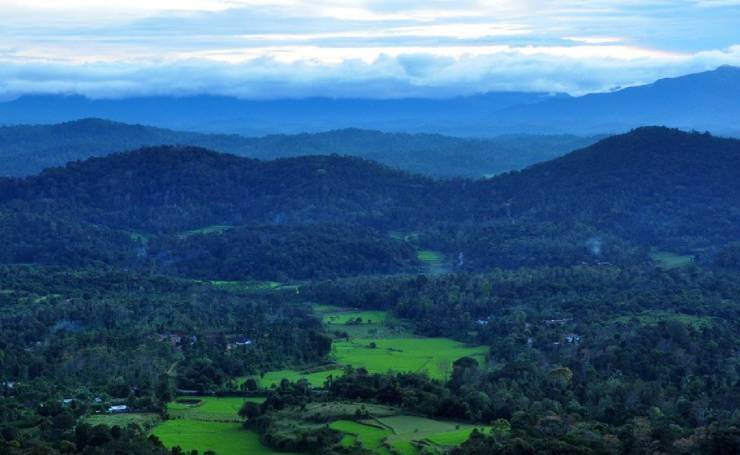
Home to the Kodava tribe, which is one of the indigenous tribes of India, Coorg is definitely a place of complete bliss, delight and peace that is profusely supplied with plant and animal species. Coorg stretches from an elevation of 900 metres to 1,800 metres and is popular for hosting several spice and coffee plantations. Over the years, Coorg , having a vast expanse of elements of nature, has flourished as another eco destination in India, which is located on the western spur of the Western Ghats.
It comprises of three wildlife sanctuaries and one national park that includes the Brahmagiri, Talakaveri, and Pushpagiri Wildlife Sanctuaries, and the Nagarhole National Park that is mostly dotted with bamboo, rosewood, teak, sandalwood, silver oak, and spice plants and housing some of the endangered mammals, reptiles, insects and amphibians. Coorg as an eco-region further constitutes several waterfalls and gushing rivers, thus calving one of the leading water sports in India, river rafting, which can be possible in Barapole and Dubare. Other adventure and leisure activities in Coorg include trekking, hiking, rock climbing, boating and angling.
Activities: Trekking, Coffee Plantation Tours, River Rafting, Wildlife Safari, Camping, Visiting Waterfalls, Visiting Elephant Camps and more.
Where to stay: Alpinia Estate Stay
Nearest Railhead: Mysore
Nearest Airport: Mandakalli Airport, Mysore
Also Read: Best Places to Visit in Coorg
Nagarhole National Park, Karnataka
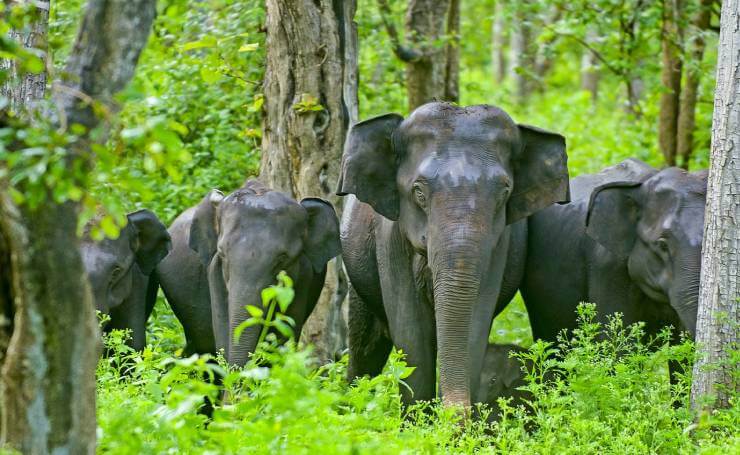
Comprising the districts of Coorg and Mysore and covering an approximate area of 644 square kilometres, the Nagarhole National Park is home to some of the exotic animal species like tiger, leopard, and dhole. Other common mammals and reptiles that are spotted here are chital, sambar, barking deer, jackal, sloth bear, mongoose, hyena, wild boar, squirrels, vine snake, rat snake, bamboo pit viper, Indian rock python, Indian monitor lizard, and common toad. Amongst the avifauna, darters, oriental white ibis, greater grey headed fish eagle, and red headed vulture are some of the ‘near threatened’ ones, whereas the blue winged parakeet, Malabar grey hornbill, and the white bellied treepie remain the major attractions being rare spotted for wildlife enthusiasts. The Nagarhole National Park, which is a part of the Nilgiri Biosphere Reserve, is also one of the Tiger Reserves in India and together it is under consideration of UNESCO World Heritage Committee as a World Heritage Site due it is rich biodiversity.
Activities: Wildlife Safari, Birdwatching, Trekking, Nature Walks, Camping, Sightseeing and more.
Where to stay: Jungle Inn
Also Read: Popular Nature Weekend Getaways in Karnataka
Bandipur National Park, Karnataka
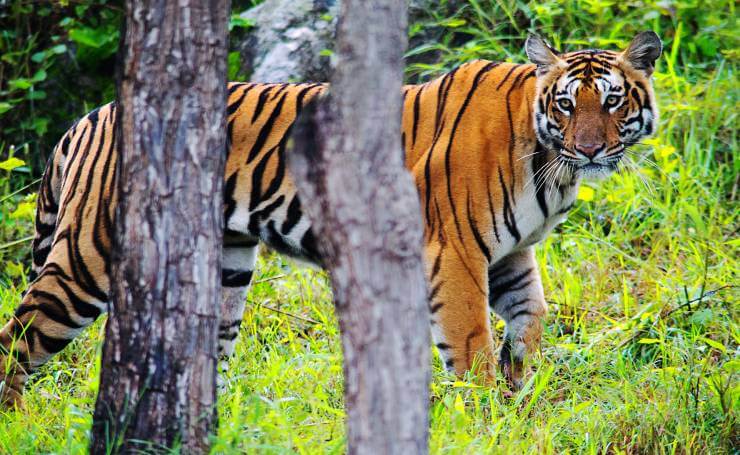
One of the most popular national parks in India and established as a tiger reserve under Project Tiger in 1974, the Bandipur National Park spans over an area of 874 square kilometres and is a part of the Nilgiri Biosphere Reserve. The park comprises of various plant species that include Teak, Rosewood, Sandalwood, Indian-laurel, Indian Kino Tree, Giant Clumping Bamboo, Clumping Bamboo, Indian Gooseberry, Black Myrobalan, Flame of the Forest, Satinwood, Black Cutch, Axlewood, and more. It also gives shelter to a good population of animals including the endangered and vulnerable species like Indian elephants, gaurs, tigers, sloth bears, muggers, Indian rock pythons, four-horned antelopes and dholes and other commonly spotted mammals and reptiles like chital, langurs, squirrels, pythons, vipers, rat snakes, lizards, Indian pond terrapins, and muggers. The Bandipur National Park is also a fairytale world where one can also spot more than 100 colourful butterflies and other insects. With such a rich ecology the park makes for a refreshing escape into the wild for eco-tourists and wildlife photographers.
Activities: Jungle Safaris, Trekking, Bird Watching, Butterfly Spotting, Wildlife Photography, Nature Walks and more.
Where to stay: Bandipur Safari Lodge
Also Read: Best Places to Visit Near Bandipur National Park
Galgibaga Beach, Goa

Despite being located in one of the busiest tourist hubs in India, the Galgibaga Beach in Goa still remains the cleanest beach in India and is well known for turtle nestling. Being one of the secluded beaches in India that is close to the popular Palolem Beach, the Galgibaga beach is least affected by tourists even during the peak season. Thus, it offers you a pleasant getaway where you can dream of an ideal walk over the solitary silver sand dotted with palm trees. If you are travelling during the winter season then you might be lucky to see some Olive Ridley turtle nests/eggs. Because of this ecological factor, the Galgibaga Beach comes under the purview of the forest department.
Activities: Swimming, Sunbathing, Visiting Nearby Wildlife Sanctuaries, Joining Yoga or Cooking Classes, Nature Walks, Trying out Seafood and more.
Where to stay: The Fern Gardenia Resort, Canacona
Nearest Railhead: Madgaon
Nearest Airport: Dabolim Airport
Also Read: Top Things to Do in Goa
Tyda, Andhra Pradesh

The bountiful nature surrounding this small village of Tyda is virtual and vestal modesty that is secretly set in the Eastern Ghats at an elevation of 700 metres (approximately). It is one of the unexplored places in India and thus springs up as an eco-tourism getaway in India with a rich bed of exotic flora including medicinal and aromatic species. The region is also home to several endemic animals and birds such as the chital, sambar, panther, wolf, wild dog, hyena, sloth bear, gaur, black buck, chinkara, chousingha, and nilgai amongst the mammals and red-chested pod chards, pintails, herons, egrets, migratory ducks, water birds, pelicans, teals, ibises and storks amongst the bird species. The region also facilitates many activities like camping, forest trails and trekking.
Activities: Trekking, Camping, Zip Lining, Rock Climbing, Nature Walks, Visiting Tribal Museum, Visiting Waterfalls and more.
Where to stay: Jungle Bells
Nearest Railhead: Visakhapatnam
Nearest Airport: Visakhapatnam International Airport
Maredumilli, Andhra Pradesh

Another least travelled destination in India, the Maredumilli village in the Eastern Ghats exhibits a rich biodiversity with dense wood and grasslands crisscrossed by several small perennial streams. It is located in the East Godavari District of Andhra Pradesh on Bhadrachalam – Rajahmundry highway and has been developed as an ecotourism destination by the Forest Department. The region is also home to several tribal communities who in support with the Andhra Pradesh Forest Department actively participate in conserving the eco-tourism project.
Maredumilli, located in the southeastern region of India, is a picturesque destination known for its serene ambiance, lush greenery, clear night skies, and meandering river. There are several popular tourist spots in Maredumilli, including Jalatarangini waterfall, Amrutha Dhara waterfall, Manyam viewpoint, Sokuleru viewpoint, Bhupathipalem Reservoir, and Rampa Falls. For adventure enthusiasts, Maredumilli offers plenty of trekking opportunities with various trails leading to nearby areas. Moreover, the region is known for its specialty dish, Bamboo Chicken, which every non-vegetarian must try during their visit to Maredumilli.
Activities: Trekking, Camping, Stargazing, Birdwatching, Waterfalls Visits, Tribal Villages Walks, Exploring Bamboo Craft and more.
Where to stay: Jungle Star Resort
Nearest Railhead: Rajahmundry Railway Station
Nearest Airport: Rajahmundry Airport
Also Read: Top Destinations in India for Solo Female Travelers
Chilika, Odisha
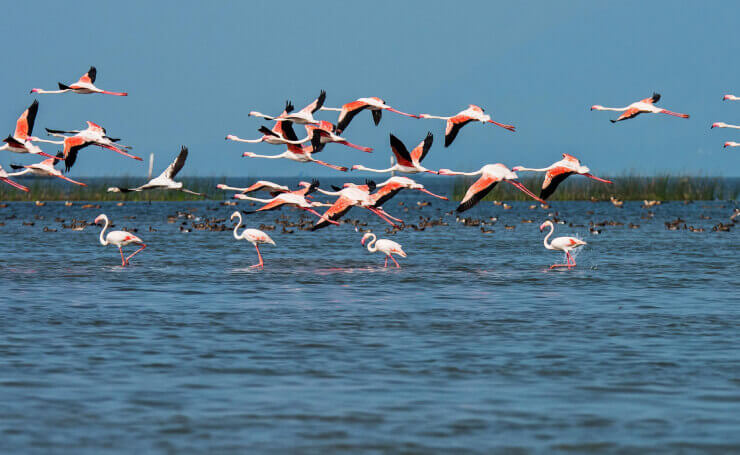
India’s largest coastal lagoon and the world’s second largest, Chilika Lake and its surrounding environment are home to a number of migratory birds and animal and plant species. The area, covering over 3,500 square kilometres, houses the Irrawaddy Dolphins, green sea turtle, dugong, blackbuck, spoon billed sandpiper, limbless skink and fishing cat amongst some of the endemic species. The lake also houses some aqua fauna such as Milk fish, Indo-Pacific tarpon, Ten pounder, Bream, Hilsa, and Mullet and migratory birds like Greater and Lesser Flamingos, Goliath Heron, Grey and Purple herons, Egrets, Spoonbills, Storks and Black-headed Ibis. The list does not end here as you can also spot several rarest bird species here like Asiatic Dowitchers, Dalmatian Pelican, Pallas’s Fish-eagles, migrant Spoon-billed Sandpiper and Spot-billed pelican. The ecosystem is dotted with more than 700 species of flowering plants and is also a shelter to a large number of mammals, reptiles and other amphibians. The region comprises a group of small islands which were declared as a wetland of international importance by the Ramsar Convention and is one of the major ecotourism destinations in India that encourages the wildlife photographers, bird lovers, and naturalists.
Activities: Boating, Dolphin Sightings, Birdwatching, Trying out Seafood, Photography and more.
Where to stay: Panthanivas Barkul
Nearest Railhead: Balugaon
Nearest Airport: Biju Patnaik International Airport, Bhubaneshwar
Also Read: Popular Lakes in India
Sundarbans National Park, West Bengal
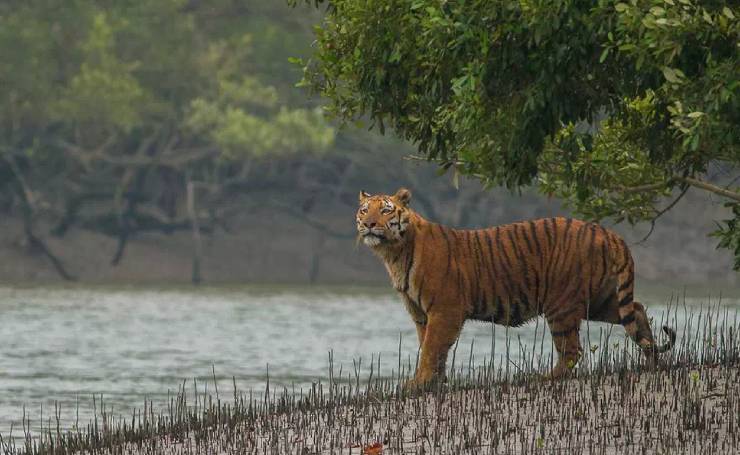
Home to the world’s largest mangrove forest, the Sundarbans National Park covers an approximate area of 1,330 square kilometres. It is the royal residence of the Bengal tigers. The region with 54 small deltaic islands, Sundarban is also a shelter to a variety of bird, reptile, invertebrate species and amphibians. Some of the endangered species, other than the Royal Bengal Tiger, which are found in the Sundarbans National Park are the Saltwater Crocodile, River Terrapin, Olive Ridley Turtle, Gangetic dolphin, Ground Turtle, Hawks Bill Turtle and Mangrove horseshoe crab. Among the endemic marine mammals, the Bryde’s whale, Humpback whale, Irrawaddy Dolphins, Ganges River Dolphins, and Humpback Dolphins are sparsely found near the coastal area.
Many conservation projects are being undertaken by the government to protect the rich biodiversity of Sundarbans National Park , which is one of the main reasons for referring to this abode as an ecotourism hub in the country as well as in West Bengal. The park being located at the confluence of many distributaries of the Ganges and Bay of Bengal, thus receives some unique geographical features; mudflats being one of those, which is largely dependent on tidal currents. The Chargheri Char mudflat in the Sundarbans is open for the tourists, and can be visited during low tide.
Activities: Boating, Cruising, Wildlife Spotting, Birdwatching, Fishing, Village Walk, Island Hopping, Photography and more.
Where to stay: Royal Bengal Resort
Nearest Railhead: Canning
Nearest Airport: Netaji Subhash Chandra Bose International Airport, Kolkata
Khangchendzonga Biosphere Reserve, Sikkim

Covering an approximate area of 1,784 square kilometres and ranging from an altitude of about 1,800 metres to 8,500 metres, Khangchendzonga Biosphere Reserve or Khangchendzonga National Park is one of the high-altitude national parks in India and the only national park in Sikkim. It is home to a large variety of alpine vegetation including medicinal plants, animals and birds who live at different altitudes and thus representing a rich ecosystem which also includes many glaciers, waterfalls, lakes and streams. Amongst the mammals the snow leopard, Himalayan Tahr, wild dog, Himalayan black bear, red panda, Himalayan blue sheep, serow, goral and takin are the major attractions for wildlife enthusiasts, and birds like Blood Pheasant, Satyr Tragopan, Osprey, Himalayan Griffon, Lammergeier, Tragopan Pheasant, Green Pigeon, Tibetan Snowcock, Snow Pigeon, Impeyan Pheasant, Asian Emerald Cuckoo, Sunbird and Eagle make it a haven for bird lovers.
The Khangchendzonga Biosphere Reserve also offers a lot of adventure activities like trekking, hiking, and camping, which makes it easier for the travellers to explore the rich biodiversity. The Green Lake Trek and Dzongri Goechala Trek are some of the best alpine treks in Sikkim that pass through the Khangchendzonga Biosphere Reserve.
Activities: Trekking, Hiking, Birdwatching, Photography, Wildlife Spotting, Exploring Villages and more.
Where to stay: Red Palace Hotel and Resort, Yuksom
Nearest Railhead: New Jalpaiguri
Nearest Airport: Bagdogra Airport
Also Read: Popular Trekking Destinations in Sikkim
Kaziranga National Park, Assam
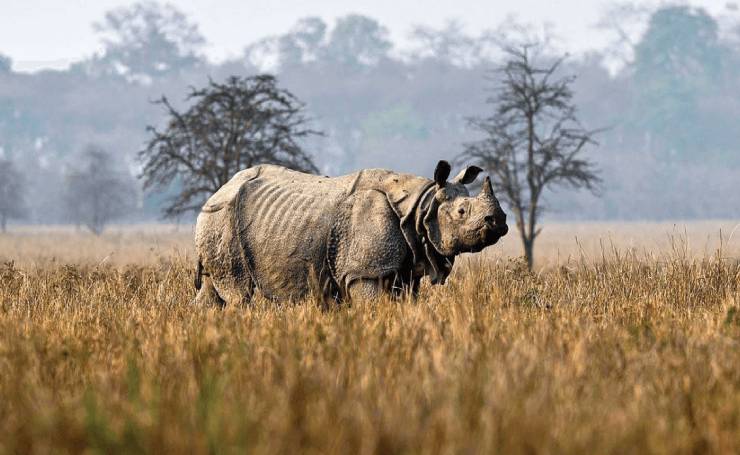
A world heritage site, which is the home to the great One-horned rhinoceros, the Kaziranga National Park , covering an approximate area of 430 square kilometres, is one of the best national parks in North East India that features a highly diversified ecosystem. With the influence of the River Brahmaputra and its tributaries, the national park mostly comprises fertile and alluvial soil and also provides some unique geographical features such as sandbars, beels, and chapories.
It houses a good population of mammals, reptiles, insects, amphibians and birds. Among the animals, tigers, leopards, hispid hare, fox, jackals, bears, and more are sighted and from the bird kingdom, the Great Indian Hornbill and Wreathed Hornbill, Old World babbles, and vultures remain the major attractions. The Kaziranga wildlife sanctuary is also one of the largest homes to reptiles like Reticulated Python, Rock Python, and King Cobra.
Activities: Wildlife Safaris, Village Walks, Tea Plantations Visits, Photography, Birdwatching and more.
Where to stay: Nature Hunt Eco Camp
Nearest Railhead: Guwahati
Nearest Airport: Lokpriya Gopinath Bordoloi International Airport, Guwahati
Also Read: Top Things to Do in Kaziranga
Majuli, Assam
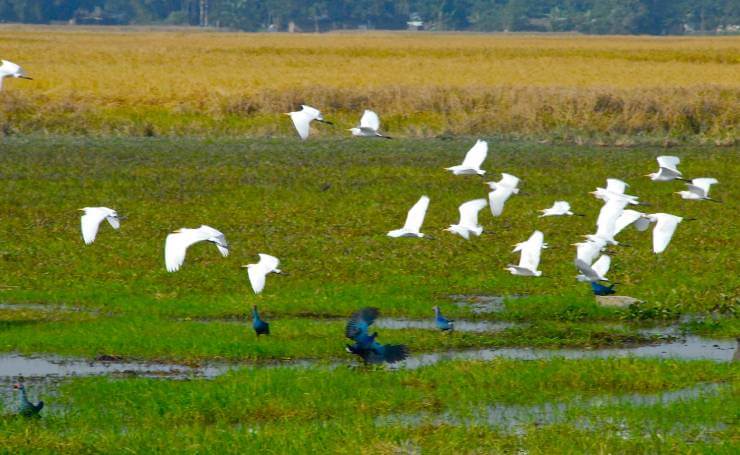
The largest river island in the world, located in the Brahmaputra River in Assam, Majuli is home to several migratory birds. The island is mostly inhabited by the Deoris, Sonowal Kacharis and Mising tribes. Nonetheless, influenced by the Brahmaputra River, the island comprises a unique ecosystem and preserves a rich agricultural base. The region is also home to a large number of amphibians. It’s a large green paradise for nature lovers where locals are also involved in making it one of the best ecotourism destinations in India.
Some of the features found in Majuli which make it one are bamboo cottages, eco-friendly resorts, carbon-free and plastic-free environment, tree plantations and many more. Majuli also offers opportunities for cultural tourism, with several ancient temples located on the island. The Satras, as these religious places are known, are the centres of the unique Neo-Vaishnavite culture of Assam. Visitors can witness traditional dance and music performances and learn about the rich cultural heritage of the island.
Activities: Boating, Exploring Villages, Sightseeing, Birdwatching, Learning about the tribes, Photography and more.
Where to stay: Uttar Kamalabari Satra, Jorhat and La Lolat Eco Camp, Majuli
Nearest Railhead: Jorhat
Nearest Airport: Jorhat Airport
Also Read: Best Places to Visit in Shillong
Mawlynnong, Meghalaya

Located in the East Khasi Hills in Meghalaya, Mawlynnong is considered as Asia’s one of the cleanest villages in the midst of a rich biodiversity. The area surrounding the Mawlynnong village is a basket of abundant natural beauty consisting of an evergreen forest that is a shelter to a large number of animal and bird species, living root bridge, waterfalls and natural caves. The village has been consistently rated as one of the top ecotourism destinations in India, and was even recognized by the Central government as a role model village for the entire country to emulate in 2015. It is known for its picturesque orchards, rushing streams, evergreen surroundings, and swaying palms. It is also the home of the Nohwet Living Root Bridge, a famous icon of Meghalaya. The village has achieved a lot, including a 100 percent literacy rate and a high level of women empowerment.
Activities: Hiking, Trekking, Waterfalls Visits, Village Walks, Exploring the tribes, Sightseeing and more.
Where to stay: Village guesthouses
Jotsoma Village, Kohima, Nagaland

One of the remotest villages of India that is located deep in the indigenous territory of Nagaland, close to its capital, Kohima, the Jotsoma village is considered as one of the best eco-tourism destinations in North East India, which hosts abundance of natural beauty. The village, in the middle of a highly diversified ecosystem, is mostly inhabited by tribal settlements. The region is an ideal location for birding. The village is surrounded by lush green forests and rolling hills, making it a haven for nature lovers. It is also home to the Angami Naga tribe, known for their rich cultural heritage and traditional way of life. Jotsoma Village is committed to promoting sustainable tourism practices and preserving its natural and cultural heritage. The village has set up several eco-friendly accommodations, including homestays and eco-lodges, to provide visitors with a comfortable and sustainable stay.
Activities: Trekking, Hiking, Camping, Exploring Tribal Villages, Trying out local cuisines, Birdwatching, Photography and more.
Where to stay: Hotel Japfu, Kohima
Nearest Railhead: Dimapur
Nearest Airport: Dimapur Airport
Namdapha National Park, Arunachal Pradesh

One of the largest national parks in India that covers an approximate area of over 1,985 square kilometres, the Namdapha National Park is widely known for housing four kinds of felines – the common Indian leopard, snow leopard, clouded leopard and tiger. Nonetheless the vast ecosystem comprising an extensive montane forest dotted with several species of plants, diversified landscape at different altitudes that ranges from an elevation of 500 metre to 4,500 metres, makes it an eco-tourism haven. One of the most unique features of Namdapha National Park is the presence of several tribal communities that have been living in the area for centuries. These tribal communities have a rich cultural heritage and unique way of life and they involve themselves in making this place perfect for interested eco travellers.
Activities: Spotting rare wildlife, Birdwatching, Trekking, Rafting, Watching Cultural Performances, visiting local villages, Learning about the local tribes, and more.
Where to stay: Forest rest houses
Nearest Railhead: Tinsukia Railway Station, Assam
Nearest Airport: Dibrugarh Airport, Assam
Nanda Devi Biosphere Reserve, Uttarakhand

Another UNESCO World Heritage Site because of hosting an extreme and unique biodiversity, the Nanda Devi Biosphere Reserve which constitutes the Valley of Flowers National Park and Nanda Devi National Park, is a travellers’ paradise. Not only because of its high altitude and highly diversified landscape that fascinates trekkers and mountaineers, but the vast expanse of forest, dotted with more than 600 species of flowering plants, medicinal plants and other alpine trees, giving shelter to some of the endemic Himalayan animals and birds, pulls in a large number of wildlife enthusiasts, naturalists, and leisure travellers.
Activities: Trekking, Wildlife Spotting, Flower Spotting, Nature Walks, Photography and more.
Where to stay : GMVN Tourist Bungalow, Joshimath
Nearest Railhead: Kathgodam Railway Station
Nearest Airport: Jolly Grant Airport, Dehradun
Great Himalayan National Park, Himachal Pradesh
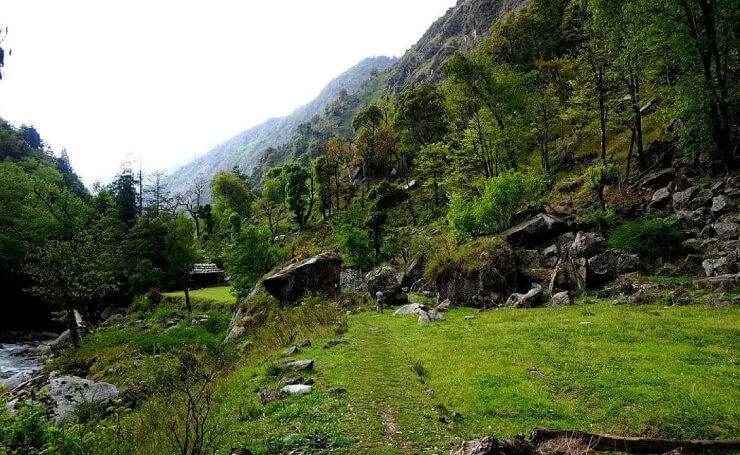
Spreading over an area of 1,170 square kilometres and ranging from an altitude of 1,500 metres to 6,000 metres, the Great Himalayan National Park is home to more than 375 species of fauna and a great diversity of flora. The park, because of its extensive exceptional natural beauty and conservation of biological diversity, with alpine meadows, several streams, lakes, glaciers and snow-capped peaks was declared as a UNESCO World Heritage Site in 2014. Great Himalayan National Park or GHNP is one of the emerging trekking and ecotourism spots in India as it houses several trails throughout the park. The trails are categorised as per their completion time, where some can be completed in a day or two, others take a week to ten days. The park also has a number of conservation programs aimed at preserving the local flora and fauna, as well as supporting the local communities that depend on the park for their livelihoods.
Activities: Trekking, Wildlife Watching, Camping, Birdwatching, Photography, and more.
Where to stay: Community Training & Tourist Center, Sairopa
Nearest Railhead: Joginder Nagar Railway Station
Nearest Airport : Kullu Manali Airport or Bhuntar Airport
Tsomoriri Wetland Conservation Reserve, Ladakh
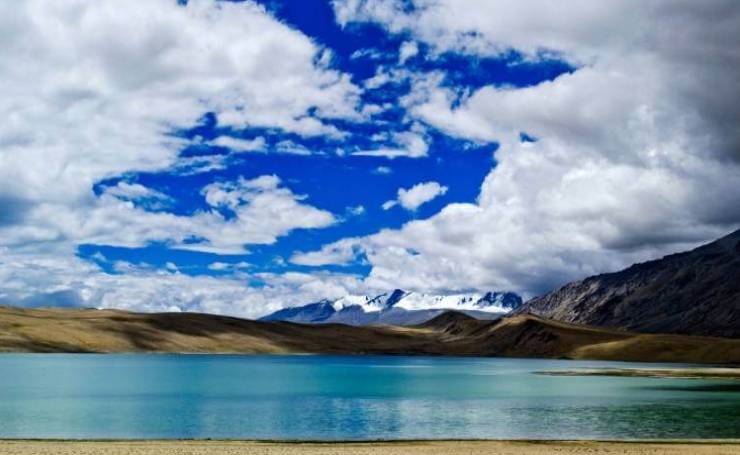
Located at an altitude of 4,595 metres, the Tsomoriri Wetland Conservation Reserve comprises Lake Moriri , which is one of the high-altitude lakes in India. The lake is perched between Ladakh to the north, Zanskar on the west side and Tibet to the east. Its surrounding environment, including the Changthang plateau region, was declared a Wetland Reserve to protect it from adverse effects like plastic and air pollution. The area is home to some of the exotic alpine animal and bird species including the Tibetan Wolf and Snow Leopard among the mammals, and Black-necked Cranes, Bar-headed Geese, Brown-headed Gulls, Great Crested Grebe, Ferruginous Pochard, Black-necked, and Grebe Podiceps nigricollis among the bird species. Ecotourism activities in the region are designed to minimise the negative impact on the environment and promote sustainable tourism practices. The local communities in the region are also actively involved in ecotourism activities and are trained to provide visitors with information about the local environment and culture.
Activities: Birdwatching, Wildlife Watching, Photography, Hiking, Camping, Village Walks and more.
Where to stay: Camps and homestays
Nearest Railhead: NA
Nearest Airport: Kushok Bakula Rimpochee Airport, Leh
Ranthambore National Park, Rajasthan
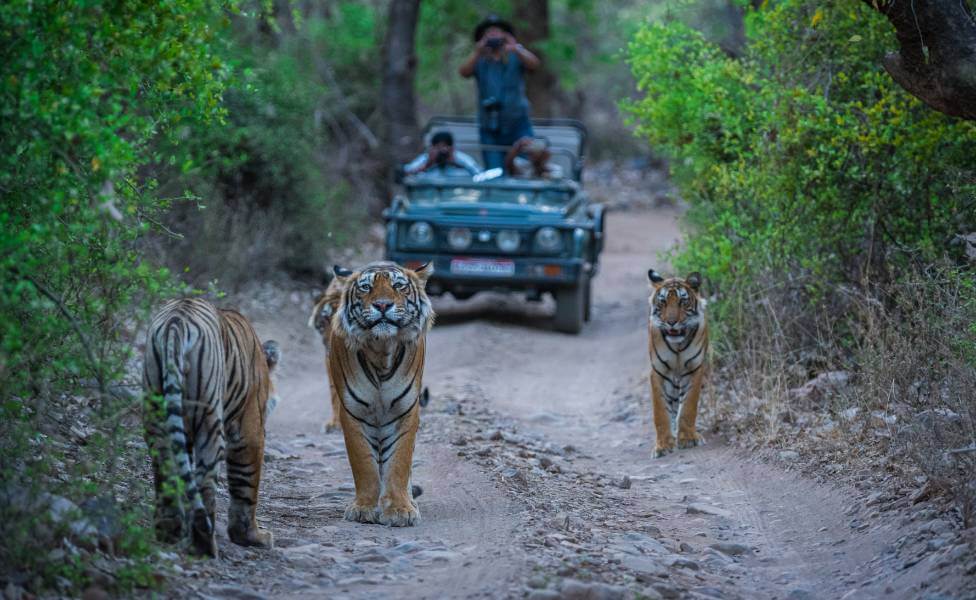
Popular for its tiger population, the Ranthambore National Park which covers an area of 392 square kilometres is another best ecotourism destination in India having diverse landscapes layered by dry deciduous forest. The terrain of the national park ranges between open bush land and impregnable forests. Besides tigers, Ranthambore National Park is home to a rich collection of plants, animals and bird species including tiger, leopard, nilgai, wild boar, sambar, hyena, sloth bear and chital among the mammal species. You can also spot birds like Greylag Goose, Woodpeckers, Indian Gray Hornbills, Parakeets, Asian Palm Swift, Dove, Sandpipers, Gulls, Terns, Great Crested Grebe, Eagles, Darters, Cormorants, Flamingos, Ibis, Pelicans, Storks, Pittas, Shrikes, Treepies here. There are several ecotourism activities in the national park such as nature and cultural heritage interpretation, guided nature walks, birdwatching, camping in particular areas which promote an appropriate connection with nature.
Activities: Wildlife Safaris, Sightseeing, Historical Places Visits, Birdwatching, Nature Walks, Village Walks and more.
Where to stay: Vanya Vilas
Nearest Railhead: Sawai Madhopur
Nearest Airport: Jaipur International Airport
Also Read: Best Places to Visit in Ranthambore
Kanha National Park, Madhya Pradesh
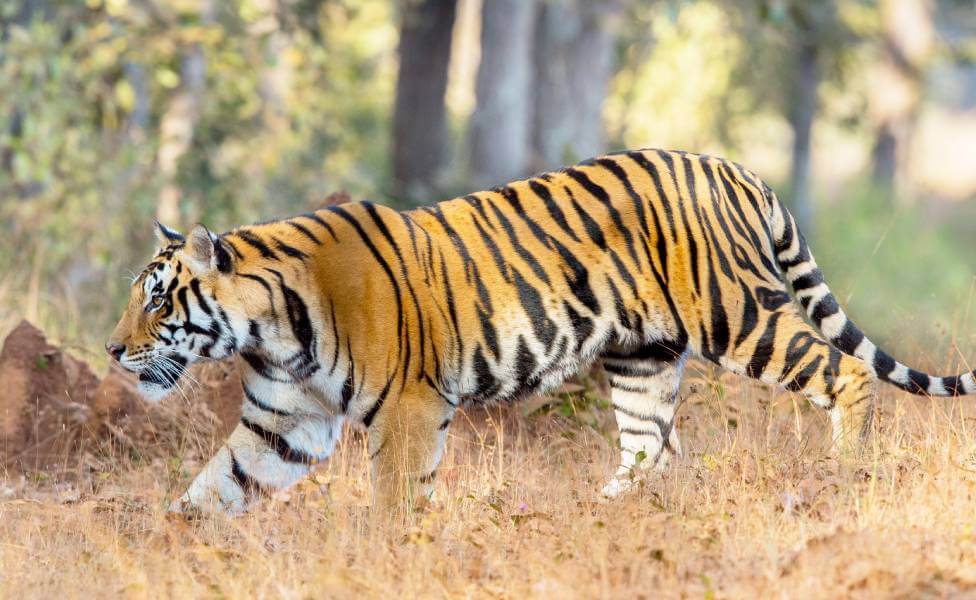
Stretching over an area of 940 square kilometres and comprising more than 1,000 species of flowering plants, the Kanha National Park is home to a significant population of Royal Bengal Tigers, leopards, sloth bears, Barasinghas and Indian wild dogs. Blessed with a vast and rich biodiversity that is covered with grasslands, sal and bamboo forests, and ravines, Kanha National Park in Madhya Pradesh makes for a refreshing eco-tourism getaway for all travellers. It is an excellent ecotourism destination that offers visitors a unique opportunity to experience India’s rich wildlife and natural beauty while supporting its conservation efforts. The park authorities have taken several measures to promote ecotourism, and visitors are encouraged to adopt responsible tourism practices to ensure that the park’s ecosystem remains intact for future generations.
Activities: Wildlife Safaris, Guided Tours, Village Walks, Nature Walks, Camping, Birdwatching, Photography and more.
Where to stay: Kamp Kamouflage Kanha
Nearest Railhead: Jabalpur
Nearest Airport: Dumna Airport, Jabalpur
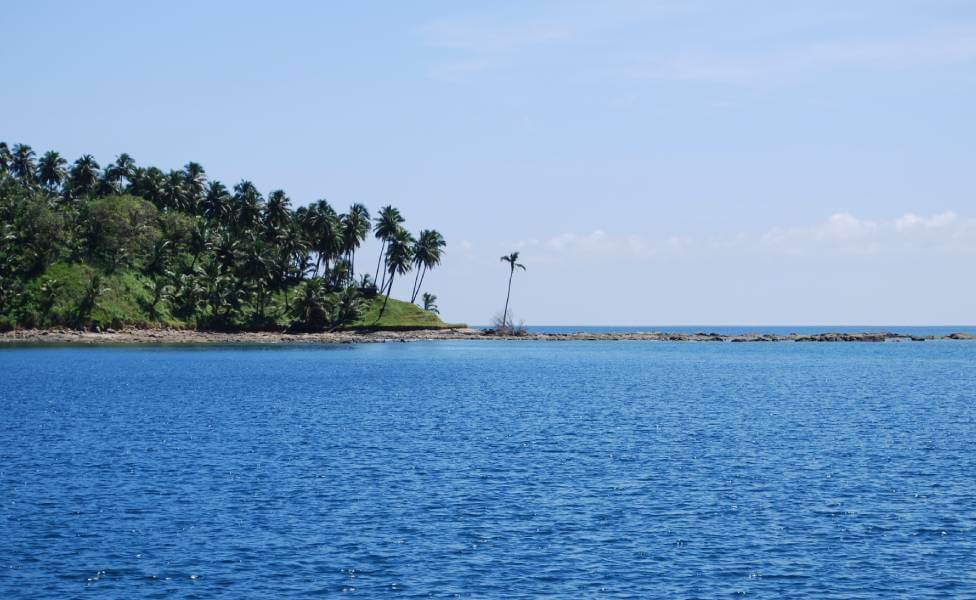
The archipelagos of Andaman in the Bay of Bengal are an invigorated treasure trove of exotic flora bedded by verdant and lush green tropical plants. These isles, midst of the lovat green sea, are the best answer to the virtue of nature and remains a tenacious memory flashed with marvellous beaches fringed by the shimmering turquoise and fabulous coral reefs on one side and the call of a cockatoo and your footprints on the sand on the other. With the canopied forests having an amazing variety of timber, foliage and blooms, Andaman padauk, the yellow hibiscus, the while lily, the pandanus, the exotic array of orchids, mangrove forest, palms and evergreen creepers are to name but a few of the 650 species of plant life found here, together which can make your vacation an exotic one. Enjoy the ocean cruise, snorkelling, scuba diving, water skiing and several other activities while you rove these islands.
Activities: Water Sports Activities, Beach Hopping, Nature Walks, Sunset Watching, Cruising, and more.
Where to stay: Barefoot at Havelock
Nearest Airport: Veer Savarkar International Airport, Port Blair
Chail Sanctuary, Himachal Pradesh

Chail Sanctuary, located in the state of Himachal Pradesh in India, is a popular ecotourism destination known for its scenic beauty and rich biodiversity. The sanctuary covers an area of approximately 110 square kilometres and is home to a variety of flora and fauna. The sanctuary is known for its dense forests of pine and deodar trees, which provide a habitat for a variety of wildlife, including sambar, barking deer, wild boar, langurs, and Himalayan black bears. Visitors can also spot a variety of birds, including pheasants, partridges, and eagles.
Activities: Wildlife Spotting, Hiking, Camping, Birdwatching, Nature Walks, Photography and more.
Where to stay: Pahadi Zayka Homestay
Nearest Railhead: Kalka Railway Station
Nearest Airport: Jubbarhatti Airport, Shimla
Gorichen Peak, Tawang, Arunachal Pradesh

The highest peak of Arunachal Pradesh with a height of 6,858 metres, Gorichen Peak, also known as the Sa-Nga-Phu or Mount Gorichen, is an ecotourism destination due to its unique natural beauty and biodiversity. Located in Tawang District, it is surrounded by dense forests, alpine meadows, and snow-capped mountains. Visitors to Gorichen Peak can also enjoy a range of ecotourism activities, such as trekking, camping, and bird-watching, while at the same time minimising their impact on the environment. The local communities in the area have also embraced ecotourism as a means of sustainable development and are actively involved in the preservation and conservation of the natural resources in the region.
Activities: Trekking, Camping and Nature Walks.
Where to stay: Camps
Nearest Airport: Lokapriya Gopinath Bordoloi International Airport, Guwahati
Mawphlang Sacred Forest, Meghalaya

Located in the East Khasi Hills district of Meghalaya, India, known as ‘Nature’s Museum,’ the forest is considered sacred by the indigenous Khasi people who have been protecting it for generations. Protected by the people of the Lyngdoh clan, Mawphlang Sacred Grove is believed to be the residence of Labasa, Khasi deity who protects the people and the village from any kind of distress. The Mawphlang Sacred Forest is an ecotourism destination in India due to its unique ecological and cultural significance. The forest is home to a wide variety of plant and animal species, including many rare and endemic ones. Visitors can explore the forest on guided tours and learn about the traditional ecological knowledge of the Khasi people, who have developed sustainable management practices to protect the forest. The forest is categorised into three sections and only the first and second can be visited with a guide.
Activities: Forest Walks, Guided Tours, Plants Spotting, Exploring Villages, Hiking, Learning about Tribal Communities, Trying out Tribal Food and more.
Where to stay: Mawphlang John’s Homestay
Nearest Airport: Umroi Airport or Shillong Airport
Manas National Park, Assam
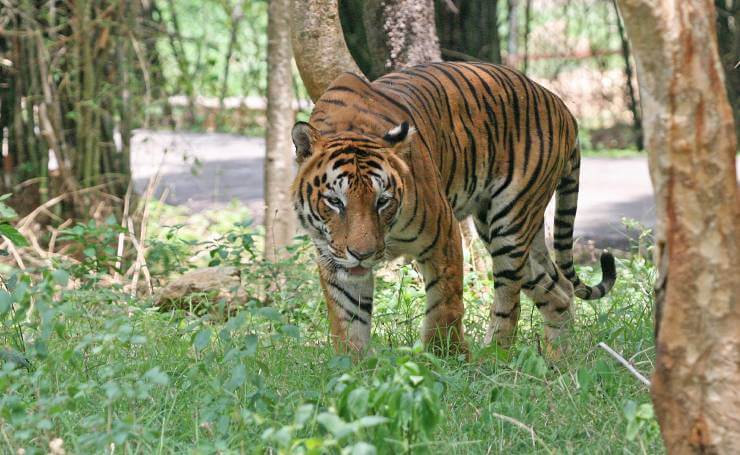
Manas National Park is a stunning ecotourism destination located in the northeastern state of Assam, India. This park is known for its vast biodiversity, including rare and endangered species of flora and fauna. It covers an area of approximately 500 square kilometres and is located on the foothills of the eastern Himalayas. The park is home to several species of mammals, including the Indian rhinoceros, Asian elephant, Bengal tiger, clouded leopard, and the Indian pangolin. It is also a birdwatcher’s paradise, with over 450 species of birds recorded here. One of the unique features of Manas National Park is its landscape, which consists of dense forests, grasslands, and wetlands. The park is home to the Manas River, which flows through its heart and adds to the park’s beauty.
Activities: Boating, Wildlife Sightings, Nature Walks, Sunset Watching, Birdwatching, Photography, Sightseeing and more.
Where to stay: Eagle Nest Eco Retreat, Hornbill Eco Camp
Nearest Railhead: Barpeta Road Railway Station
Nearest Airport: Lokapriya Gopinath Bordoloi Guwahati Airport
Barsey Rhododendron Sanctuary, Soreng, Sikkim

Barsey Rhododendron Sanctuary is a breathtakingly beautiful natural wonderland nestled in the heart of Sikkim, India. This sanctuary is a perfect destination for nature lovers and adventure enthusiasts who are looking for an unforgettable ecotourism experience. One of the main attractions of the sanctuary is its stunning rhododendron blooms, which carpet the hillsides in a riot of colours during the months of April and May. The sanctuary is home to over 40 species of rhododendrons, including the rare Rhododendron niveum, which is found only in this region. The Barsey Rhododendron Sanctuary is also a popular trekking destination, with several well-marked trails winding through the forests and hills. The most popular trek is the Barsey Rhododendron Trek, which takes you through some of the most stunning rhododendron forests in the region.
Activities: Hiking, Trekking, Spotting Flowers, Nature Walks, Village Walks, Photography, Camping and more.
Where to stay: Okhrey Homestay, Barsey Homestay, Hilley Homestay and Bhareng Homestay
Nearest Railhead: New Jalpaiguri Railway Station
India offers a vast array of eco-tourism destinations that are perfect for travellers seeking to explore the country’s natural beauty while minimising their environmental impact. We have tried to provide a list of the best ecotourism destinations in India which span across the Himalayan landscapes to the coastal part of the country. By choosing to visit these destinations, travellers can not only have an unforgettable experience but also contribute to the preservation of India’s fragile ecosystems and support the livelihoods of local communities. If you have any experience of visiting any of these places, share your travel memories in the comment section below.
Published: 21 May, 2024
About the author

Swairik Das
Brought up from the cultural capital of India, Kolkata, Swairik Das is a passionate traveller who seeks to travel and explore the length and breadth of the country. He is also a dedicated travel writer, blogger and photographer who by heart is also an adventure freak. His focus is mostly into exploring and writing on trekking, jungle safaris and several adventure activities; religion, festival, heritage, people and cuisine.
Recent Trending Posts

May 21,2024

May 20,2024
15 Best Destinations in India for Solo Women Travellers

25 Places to See and Things to Do in Pune, Maharashtra
- Hill Stations
- Travel Deals
- Amazing Facts
- Travel Experience
- Travel Tips
- Travel Alerts
- Travel Videos
- Edu-Tourism
- Inspirational People
Popular Posts

May 30,2014
20 Highway Dhabas that You Must Stop By

February 12,2014
Top 15 Places for Honeymoon in North East India

September 6,2014
12 Best Beaches in Maharashtra

October 31,2013
Top 15 Wildlife Sanctuaries and National Parks in Kerala

Top 10 Places for Spa Services in Delhi
International posts.

November 8,2023
10 Best Beaches in Thailand

November 3,2023
Tourism Update – Enjoy Visa Free Holiday Travel in Sri Lanka

Thailand Tourism Update- Indian Travelers Now Get a Visa-Free Entry to Thailand!
Explore best places to visit in india by month.

Best Places in January

Best Places in February

Best Places in March

Best Places in April

Best Places in May

Best Places in June

Best Places in July

Best Places in August

Best Places in September

Best Places in October

Best Places in November

Best Places in December
India tourism important information resources, north india.
- Uttarakhand
- Jammu & Kashmir
South India
- Pondicherry
- Andhra Pradesh
- Mahararashtra
- Dadra Nagar Haveli
- Daman & Diu
Luxury Trains
- Maharaja Express
- Palaces on Wheels
- The Golden Chariot
- The Deccan Odyssey
- Majestic Tourist Train
Quick Links
- Kumbh Mela Haridwar 2021
- MICE Tourism
Eco Eco Eco Eco Eco Eco
Activities Parks Wonders Places Lodge/Resorts Trips/Tours
What is Eco-Tourism Home Stays Flora & Fuana

- Destination
- Top Eco Friendly Travel Places To Visit In Kochi Kerala
Top 5 Eco Friendly Travel Places To Visit In Kochi, Kerala

Kumar Utkarsh Updated: May 20, 2024 7:05 PM IST
Top 5 Eco-Friendly Travel Destinations in Kochi, Kerala
Kochi, a bustling maritime city on the south west side of Kerala state in India is more than just an ethnic salad bowl; the place is a haven to environmentally conscious tourists yearning for sustainable escapades. From the breathtakingly beautiful landscapes to its peaceful backwaters and eco-tourism initiatives, Kochi is teeming with countless eco-friendly travel destinations that cater for both the wanderlust seekers and nature aware travelers. Our guide will focus on some of the best eco-friendly travel places in Kochi where one can harmonize his/her journey with nature while still experiencing an enchanting cultural fabric of this unique city.
1. Kerala Backwaters:
Hop onto a traditional houseboat and sail through the calm waters of Kerala as you immerse yourself into the serenity of nature. The experience offers a whole eco-friendly trip where you can learn about local life while cutting down your emissions. Choose houseboats approved by environmental bodies who are committed to responsible tourism that cares for local residents and protects the environment.
2. Thattekad Bird Sanctuary:
For bird watchers and lovers of nature, Thattekad Bird Sanctuary is heaven waiting to be discovered.Nestled along Periyar River's banks, this pristine reserve boasts different types of avian species including migratory birds and endemic ones too. Here, take part in an ecotour whereby you can spot vibrant kingfishers, majestic eagles as well as shy hornbills within their natural habitats among lush forests and wetlands.Take part in efforts aimed at conserving such biodiversity rich areas by supporting conservation efforts through measures that promote responsible tourism.
3. Cherai Beach:
Get away from all of this chaos to relax at Cherai beach which has stunning scenery made up of golden sands flanked by coconut palm trees and casuarina groves.At such crowded tourist destinations, Cherai beach provides a calm retreat to unwind yourself while you interact with nature around. Some of the eco-friendly activities include cleaning the beach, yoga on the beach, or just enjoying the marvels of sunset over Arabian Sea. By following responsible tourism practices, we are able to maintain the natural ecosystem in our beaches thus making it an ideal place for eco-conscious travelers.
4. Mangalavanam Bird Sanctuary:
5. mattancherry palace (dutch palace):.
Get soaked into Kerala's rich culture by visiting one of its ancient structures known as Mattancherry Palace or Dutch Place.When Portuguese constructed it later on renovated by Dutch; this magnificent structure exhibits beautiful Kerala murals dating back centuries.Ask for guided eco-tours which will let you know about how palace was restored sustainably and also serve as an avenue of promoting responsible tourism.Promoting such heritage based efforts help secure future generations' abilities to appreciate Kochi architectural legacies.
Conclusion:
To conclude, Eco-conscious travelers are lured in by Kochi , India and its myriad of sustainable travel destinations that synchronize with the environment and culture. From Kerala's serene backwaters to lively bird sanctuaries and unspoiled beaches, Kochi has a lot to offer for eco-oriented people who love adventure. By acting as good tourists who mind about nature conservation while supporting local efforts in Kochi, one will not only have intrepid experiences but also contribute to safeguarding the natural and cultural heritage of Kerala. Therefore; pack up your bags, start exploring; take a trip to this beautiful land of magic that is Kochi where you can experience it all without leaving footprints behind you.
- Topics News">5 Eco Friendly Travel Places
- Topics News">5 Eco-Friendly Travel Destinations
- Topics News">Eco-friendly travel
- Topics News">Eco-Friendly Travel Destinations in Kochi
- Topics News">Kerala
- Topics News">Kerala Tourism
- Topics News">Kochi

Explore 7 Eco-Friendly Getaways In Tiruchirappalli For Sustainable Travel Enthusiasts
Top eco friendly travel places to visit in tiruchirappalli (trichy), tamil nadu.
Situated in Tamil Nadu, India, Tiruchirappalli, otherwise known as Trichy, is a cultural treasure trove and an eco-traveler's paradise. With the global call for sustainability, tourists now look for places that have good scenes and preserve the environment. This article provides an insight into the eco-friendly treasures of Tiruchirappalli showing how this ancient city blends culture with modern ways that respect mother nature.
1. Sri Ranganathaswamy Temple
Sri Ranganathaswamy Temple located at Srirangam Island in Trichy gives a taste of its rich cultural and architectural heritage. This wide temple complex which venerates Lord Vishnu has not only attracted worshippers but also encouraged sustainable practices. The site indicates efforts geared towards ecological preservation such as water scarcity mitigation measures, proper methods to handle waste materials and tapping into renewable sources of energy.
2. Rock Fort Temple
The Rock Fort Temple stands firmly on top of a massive rock formation symbolizing resilience and spirituality. Once one reaches the peak by climbing up the steep steps, they are greeted with a panoramic view of the city beneath them. It is more than thousands years old and the temple complex has embraced concepts like rainwater harvesting or preserving natural vegetation thus helping live harmoniously by people even within urbanization.
3. Mukkombu (Upper Anaicut)
Mukkombu also known as Upper Anaicut presents itself as a dam formed along Kaveri River that you will find fascinating from your camera lens. Mukkombu therefore serves as a calm haven for nature lovers who are interested in maintaining their environment clean while exploiting desirable sites for bird watching or picnicking hence enhancing freshwater ecosystem conservation awareness.
4. Puliyancholai Falls
Puliyancholai Falls is a hidden treasure for those who love nature and is located deep within the dense woods of Kolli Hills. The uninterrupted flow of clean water from the highlands creates an mesmerizing imagery that calls to people searching for solace in mother earth's bosom. Thus, this place emphasizes ethical ways of visiting it to save the indigenous flora and fauna.
5. Kallanai Dam (Grand Anicut)
Kallanai Dam also called Grand Anicut is a wonder of ancient civil engineering as well as sustainable water management system. Constructed by Chola king Karikalan around 2nd century AD, this historical dam still regulates River Kaveri flow even now. At Kallanai, one can understand very well how traditional wisdom has been blended with modern efforts towards conservation for future generations' access to water resources.
6. Viraganoor Dam
Viraganoor Dam can be found in green surroundings and offers a peaceful break away from urbanization noise. This reservoir is important for Tiruchirappalli city and its environs as far as maintaining sustainable use of water sources are concerned. Environmentalists may indulge themselves in several non-polluting activities such as bird watching expeditions or trekking through the hills thus learning the significance of this dam.
7. Kolli Hills
The captivating Kolli Hills concealed behind mist attract explorers yearning to deviate from regular tourist routes. However, there are not many tourists visiting this district in Tamil Nadu because it abounds with thick forests, numerous cascades and breath-taking sightseeing platforms. Taking care of our environment conscious visitors will have the opportunity to experience bounties of nature while supporting local communities involved into eco-tourism initiatives and sustainable farming practices.
In Tiruchirappalli, the cultural capital and one of the most eco-friendly areas in India, tourists can find a blend of tradition and sustainability that is rare. It has numerous ancient temples and beautiful natural landscapes which make the city an eco-friendly destination with a strong bond to nature. This goes by showing how travel can have a positive effect on humans as well as the planet in general through responsible tourism concepts practiced here.

The Trickiest Travel Community
Join us on unique adventures, where eco-friendly travel meets curated experiences. Follow your passion and monetize it by becoming a Tricky Traveller.
Plan the Trip of a Lifetime with Ease
Explore the world with Tricky Travellers, your key to discovering dream experiences. Our custom-tailored itineraries ensure a trip of a lifetime, whether it's a romantic escape, family-friendly adventure, or a solo journey.

Find The Perfect Destination
Explore the perfect escape with Tricky Travellers. From enchanting beaches to cultural wonders, our curated destinations promise a journey beyond the ordinary. Find your ideal spot and create lasting memories.

Discover all about markable personalities, eco-travellers, and environment advocates here and join in their journeys of saving our mother earth. Learn about ways to empower the cultures and communities while travelling.
Low-impact travel and luxury can coexist. Discover amazing tree houses, eco-friendly hotels, organic farmhouses, green b&b and much more. A platform of environmentally friendly stays all around the world, ranging from simple to elegant.
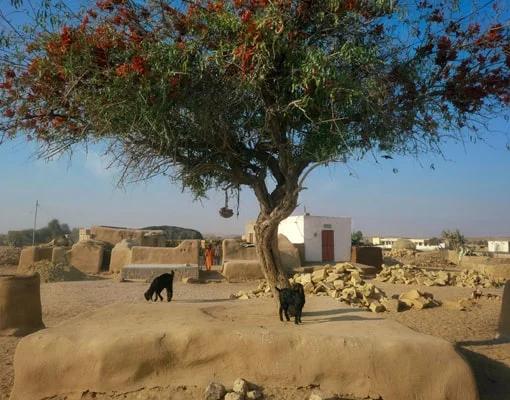
Discover the best events happening out there in your city or relish handpicked content while sitting serenely at home. Tricky Travellers give you experiences worth your time and money, and ideally, urge you to strive something new responsibly.
Looking for something beyond the ordinary? Join us into a world of incredible events. We believe in creating events that not only entertain but also inspire positive change.
Discover blogs shared by fellow travellers and writers that are intriguing, and informative. Re-educate yourself about traveling and nature with us. Unlock the world's secrets discovering new ones and sharing yours.
Discover the stories from talented writers. With a passion for storytelling and a keen eye for detail, our writers bring their narratives that transport you to distant lands. Join our team of and monetize your passion.

We use cookies to ensure best experience for you
We use cookies and other tracking technologies to improve your browsing experience on our site, show personalize content and targeted ads, analyze site traffic, and understand where our audience is coming from. You can also read our privacy policy , We use cookies to ensure the best experience for you on our website.
- Leaders Speak
- Brand Solution
- Redefining customer experience across India's mass mobility landscape
- Devndra Chawla ,
- ETBrandEquity
- Updated On May 24, 2024 at 08:42 AM IST

Rethinking brand loyalty: Strategies for building trust and retention in today's market
Businesses can no longer rely solely on brand recognition to retain customers. As consumer behaviour and expectations evolve, trust and personal connection with those selling the product become central to building long-term relationships and customer success. The author explores effective strategies for companies to implement to enhance trust and improve overall customer retention.
- By Devndra Chawla ,
- Published On May 24, 2024 at 08:42 AM IST
All Comments
By commenting, you agree to the Prohibited Content Policy
Find this Comment Offensive?
- Foul Language
- Inciting hatred against a certain community
- Out of Context / Spam
Join the community of 2M+ industry professionals
Subscribe to our newsletter to get latest insights & analysis., download etbrandequity app.
- Get Realtime updates
- Save your favourite articles
- India’s intercity mass mobility
- customer experience
- mass mobility
- intercity travel
- electric mobility
- sustainable mobility
- global electric revolution
- intercity mass mobility

IMAGES
VIDEO
COMMENTS
La Maison de Ananda (Majuli, Assam) Kohima Camp, The Ultimate Travelling Camp (Nagaland) Eco Resorts in Himachal Pradesh. The Wanderer's Nest (Chitkul, Kinnaur) Eco Resorts in Ladakh. Nubra Eco Lodge (Nubra Valley) Nimmu House (near Leh) Eco Resorts in East India. Calcutta Bungalow, Kolkata.
Travel and tourism accounts for about 5% of GDP in India, generating 39 million jobs as of 2020. By 2029, the WTTC predicts that India will be among the top 10 countries in the world with the largest GDP from tourism. ... Eco-lodges in India offer a unique, immersive, and engaging experience with nature to visitors. On our sustainable India ...
The region has several eco-friendly resorts that promote responsible tourism practices, such as the Kabini River Lodge, which supports conservation efforts and provides economic benefits to local communities. Sikkim: Sikkim is a small state in northeastern India that is known for its stunning natural beauty and cultural heritage. The region has ...
9. Best Eco-resort for a Weekend in India - Na La Ri Resort. $. 3 guests. Traditional nature lodge. Pristine natural setting. Na La Ri Resort is an authentic eco-resort in a lush setting in Sumer. Comprising a combination of tents, small cottages and larger units, Na La Ri Resort is a haven for nature lovers.
1. Kerala. Kerala is a well-liked ecotourism destination because of its varied animals, tranquil backwaters, and verdant forests. There are many national parks and wildlife sanctuaries in the state where visitors can see uncommon and endangered animal and bird species like tigers, elephants, and Great Indian Hornbills.
Discover India's top 3 best ecotourism destinations. Explore India's ecotourism hotspots: Hampi, Kerala and Andhra Pradesh. Learn how to travel responsibly and make a positive impact with ecotourism in India. Ecotourism in India offers remarkable encounters and bring constructive change on our planet.
Sustainable Travel in India. India is a country of diverse landscapes and cultures. Its rich biodiversity has allowed the rapid growth of sustainable tourism associated with green travel destinations.. Green travel, also known as eco-tourism, is a lifestyle choice that one adopts while traveling to reduce their carbon footprints.
The North-East of India (The states of Arunachal-Pradesh, Assam, Meghalaya, Tripura, Mizoram, Manipur and Nagaland) is a must-visit on every eco-traveller's bucket list. These rich tropical rainforests harbour rare and unique species like the Clouded Leopard, One-horned Rhino, Gayal- in the most simple words the wild ox and the only ape found ...
4. Thenmala, Kerala. Thenmala, one of the lesser explored destinations in India, is India's first eco-tourism destination in India. Its 10 eco-tourism spots cover the hill ranges of Thiruvananthapuram, Pathanamthitta, and Kollam districts.
How eco-travel is becoming a trend in India is interesting to know. Eco-travel in India. Photo by Simon Berger on Unsplash. Eco-tourism is nature's luxury wrapped in sustainability. Ecotourism is about going on a vacation that saves nature. You can enjoy it to the fullest when you dive deep down in love with nature. Well, it is an exciting ...
Sustainable Travel In India. Posted on August 31, 2021 by Ecobnb. Travel, they say is a way of life, beneficial, liberating, rejuvenating, enlightening and the list of expressions is exhaustive. There is something for everyone when they travel. If these experiences have so much impact on our lives, this is even more true for sustainable travel.
Thenmala, Kerala. Thenmala, which means Honey Mountain, holds pride of place as the first planned eco-tourism destination in India. It is surrounded by dense evergreen forests, rich in timber and a thriving rubber plantation. The beautiful green hills of Thenmala, nestled in the midst of the Western Ghats, holds many surprises for the traveller.
Attractions For Eco-Travelers In Karnataka: Bisle Rainforest, Nagarhole, Kabini Backwaters, Hassan, Chikmagalur, and Devbagh near Karwar. Eco-Friendly Stays In Karnataka: Jhari Ecostay, Silver Oak Resort, and Chukki Mane. Suggested Read: Flee To These Best Homestays In South India For A Soulful Retreat. 1.
Eco-tourism in India is one of the best ways to explore the highly diversified nature of India. Here are some of the best eco-tourism destinations in India that will help you to plan your eco-tour. ... one of our travel experts will get back to you with customised holiday package based on your requirement, within 24 hours. Grab the deal and ...
Image: Courtesy of Shutterstock. India is home to several villages, where a large chunk of the population still resides. However, gone are the days when villages were small, dusty and backward - in today's day and age, several of these places have emerged as eco-village destinations, which are green, clean, sustainable and self-sufficient.
Eco India. With changing environmental trends, more and more travelers opt for Eco travel these days. Eco tourism generally means travel to natural areas to teach the people about the conservation and preservation of natural resources. So enjoy exploring the wonders of environment with India Tours. India Tours.
Auroville and Sadhana Forest. WHERE: Pondicherry, Tamil Nadu. Auroville, a utopian spiritual community situated on the hot, arid fringes of seaside Pondicherry, remains India's best-known eco ...
1. Fateh Sagar Lake: Fateh Sagar Lake, an artificial lake constructed in the 17th century, emerges as a prime example of eco-friendly preservation efforts. Surrounded by lush greenery and encompassing three islands, this lake serves as a tranquil oasis amidst the city's hustle and bustle. Eco-conscious travelers can partake in boating ...
What is Eco-Tourism in India? Travel and tourism have always been booming industries in India. And it's growing at an incredible rate, thanks to the massive amount of information shared on ...
Eco Trips - The Eco Trips offered by Eco India actually aims at letting people have insight of local culture and gain personal growth. The site offers information on a variety of nature vacation trips and also acts as a trip advisor for some exciting ecological holiday packages which includes adventure, sightseeing, animal watching, angling vacation, camping holidays, beach tours, yoga and ...
The Malabar House, a Relais & Chateaux property in Kerala's Fort Kochi, offers a luxurious stay, a holistic Ayurvedic centre for mind-body wellness, and an opportunity to explore Kerala's backwaters on the hotel's own eco-friendly house boat.Following their ethos to incorporate local architectural and design elements, the 16 rooms are done in a traditional style with stone floors and no ...
Top 5 Eco-Friendly Travel Destinations in Kochi, Kerala. Kochi, a bustling maritime city on the south west side of Kerala state in India is more than just an ethnic salad bowl; the place is a haven to environmentally conscious tourists yearning for sustainable escapades.
Top Eco friendly Travel Places To Visit In Tiruchirappalli (Trichy), Tamil Nadu . Situated in Tamil Nadu, India, Tiruchirappalli, otherwise known as Trichy, is a cultural treasure trove and an eco ...
Discover Unique Stays. Low-impact travel and luxury can coexist. Discover amazing tree houses, eco-friendly hotels, organic farmhouses, green b&b and much more. A platform of environmentally friendly stays all around the world, ranging from simple to elegant. Starts at ₹600.
Nearly 70-75% of Indians still prefer buses for their inter-city travel needs as compared to the famed plane or train network, as buses are more affordable, accessible, and offer a convenient mode ...